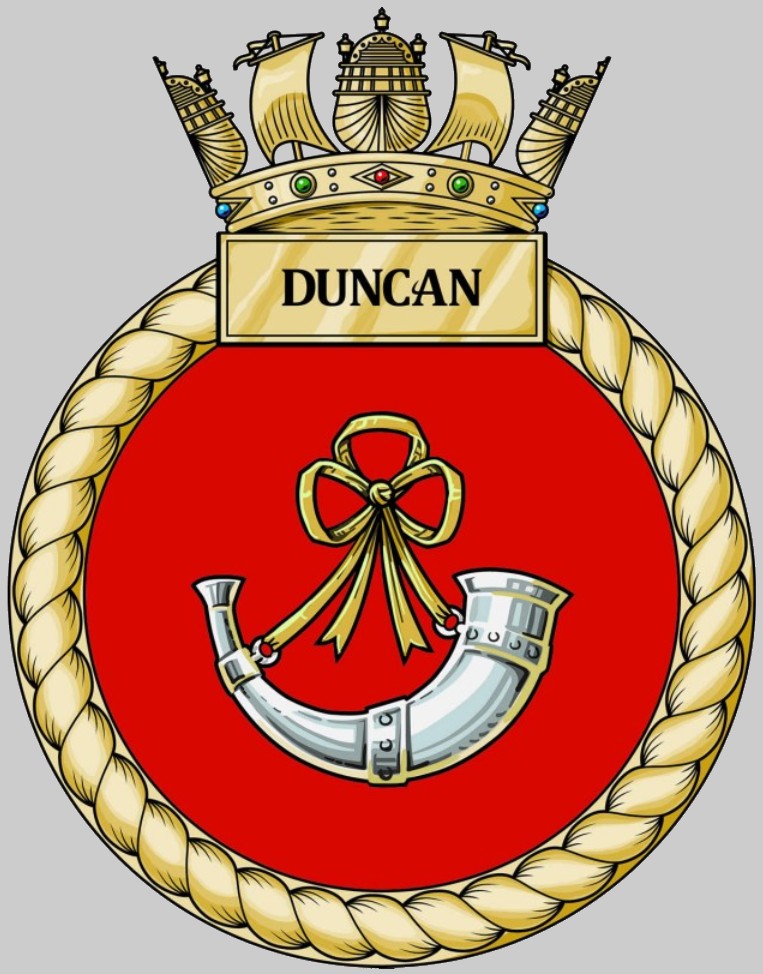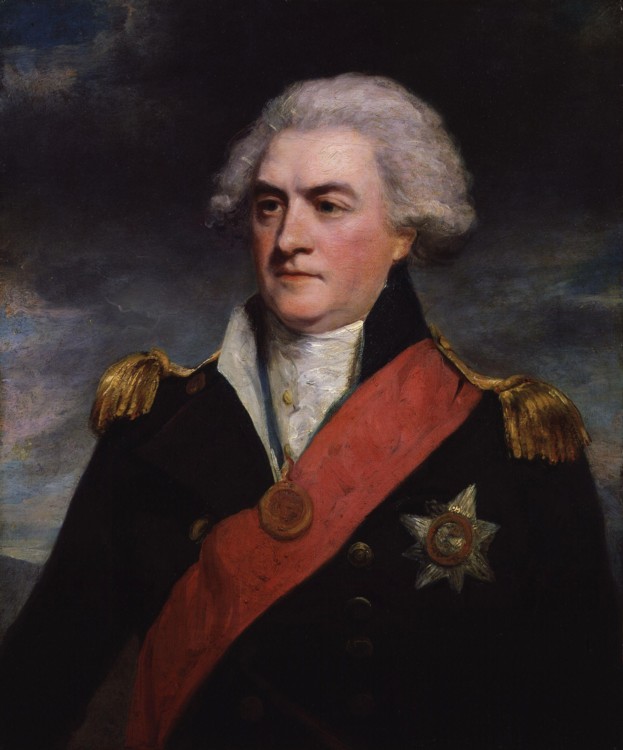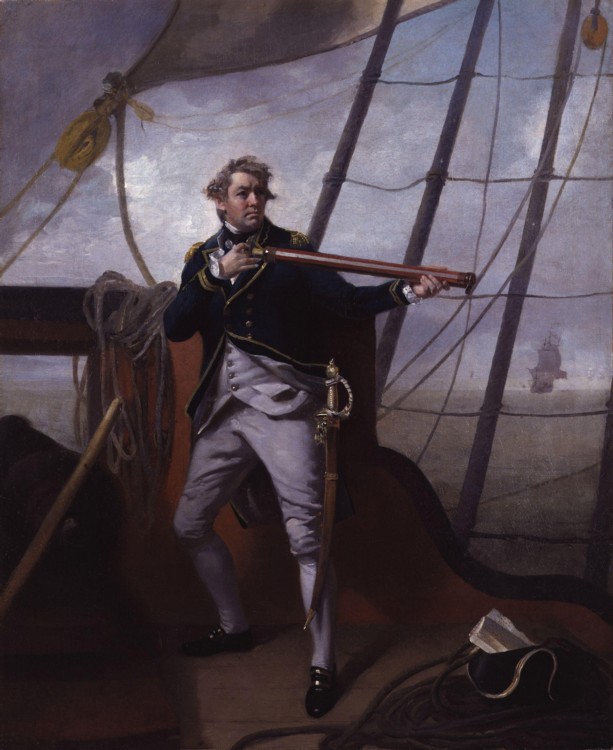 |
||
|
HOME
|
US Navy -
ships
|
US Navy - air
units
|
USMC - air
units
|
International
Navies
|
Weapon Systems
|
Special Reports |
||
|
Royal Navy - Guided Missile Destroyer D 37 HMS Duncan |
||
|
||
| 12/22 | ||
|
Type,
class: Guided Missile Destroyer; Type 45 / Daring class Builder: BAE Systems Naval Ships, (various shipyards), U.K. STATUS: Awarded: December 2000 Laid down: January 26, 2007 Launched: October 11, 2010 Commissioned: September 26, 2013 IN SERVICE Homeport: HMNB Portsmouth, Hampshire Namesake: Adam Duncan, Viscount Duncan of Camperdown Ships Motto: SECUNDIS DUBUSQUE RECTUS (upright in prosperity and peril) Technical Data: see INFO > Daring / Type 45 class Guided Missile Destroyer >> see also: HMS Duncan - port visit to Trieste, Italy - April 2018 |
||
| images | ||
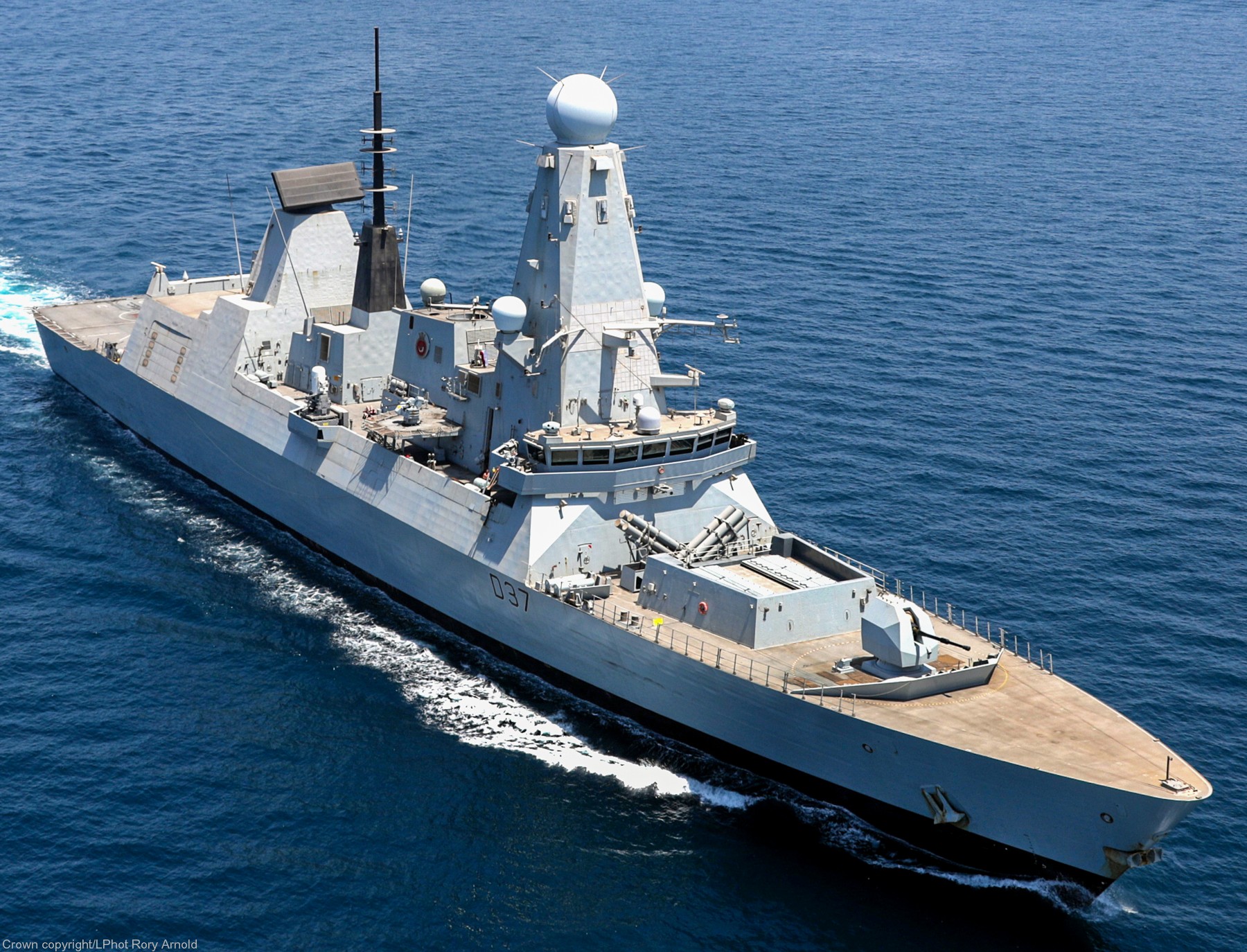 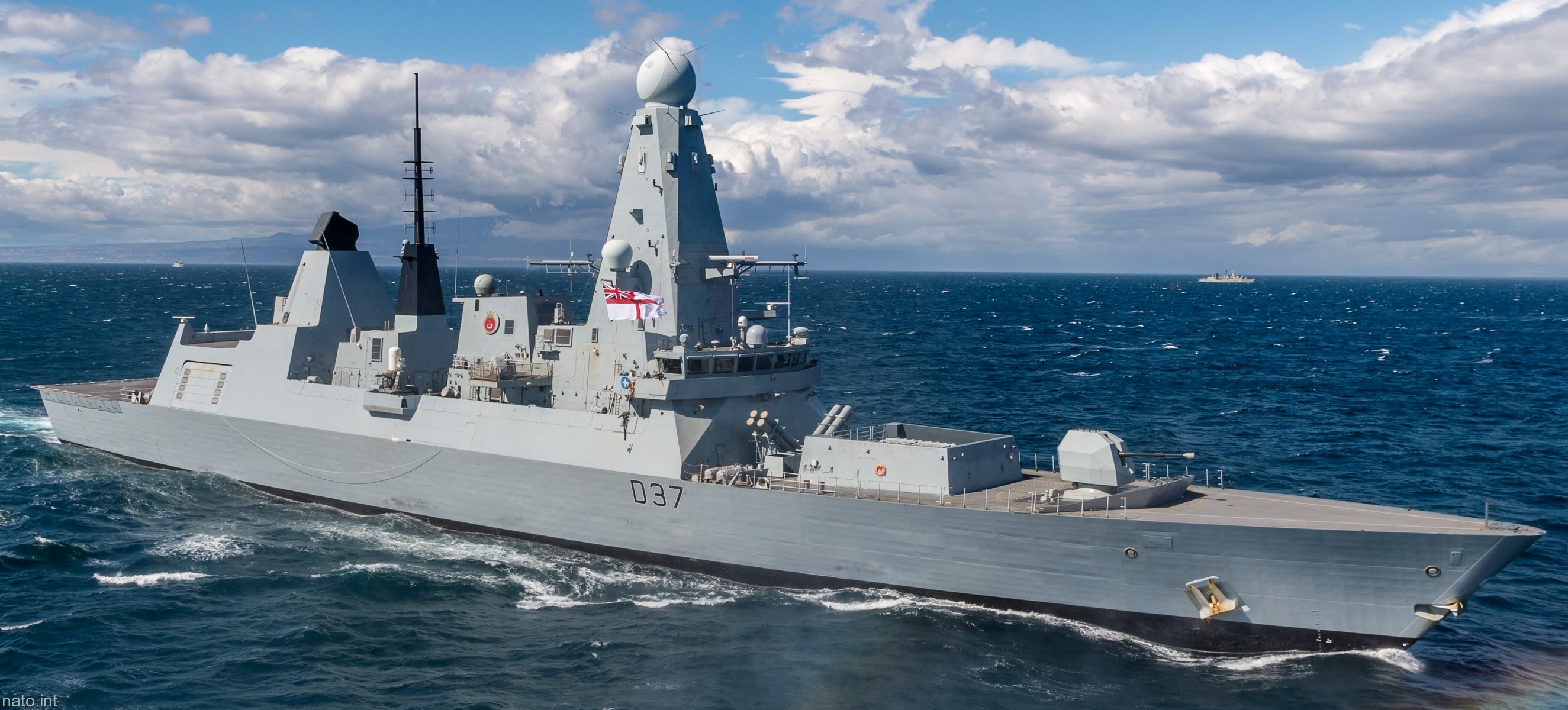 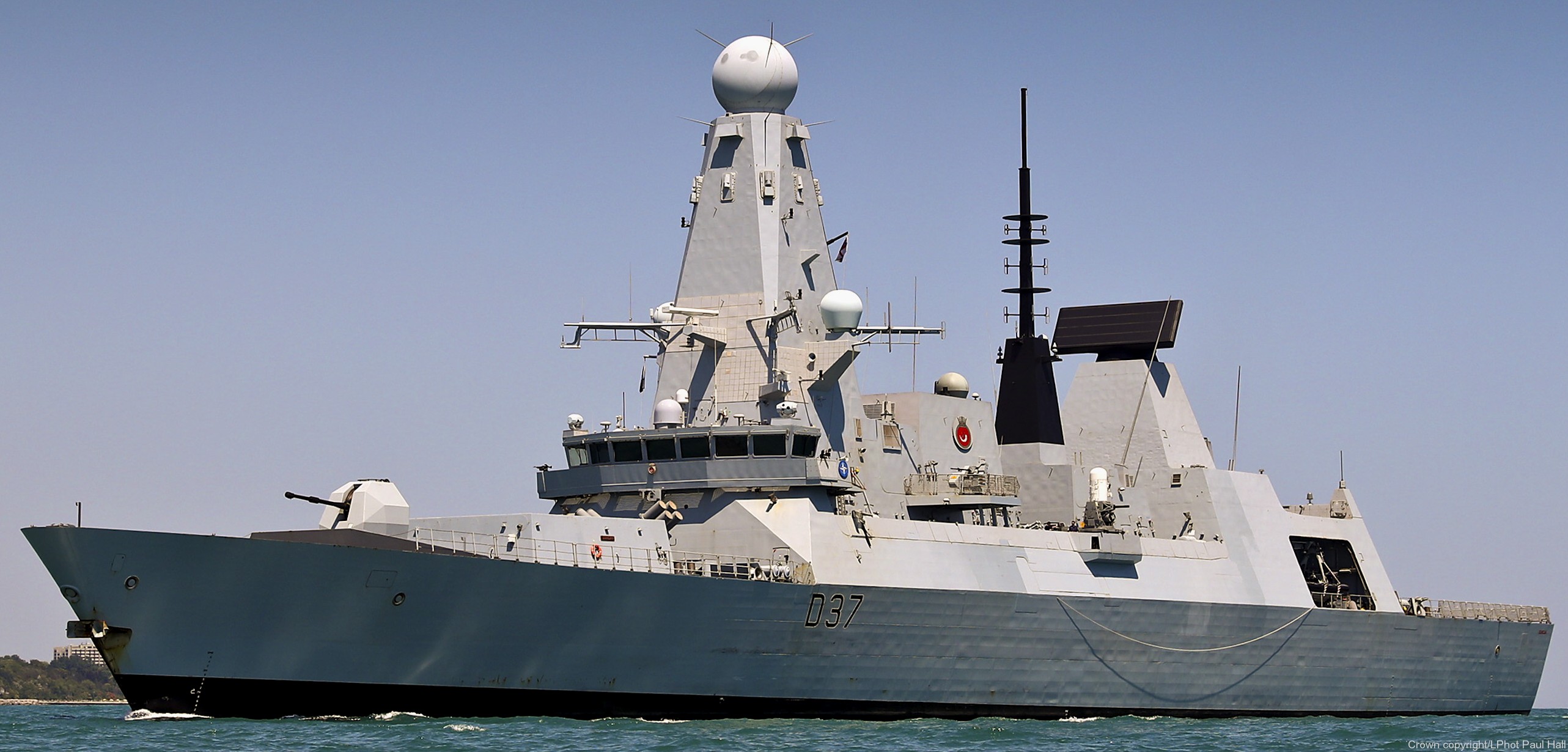 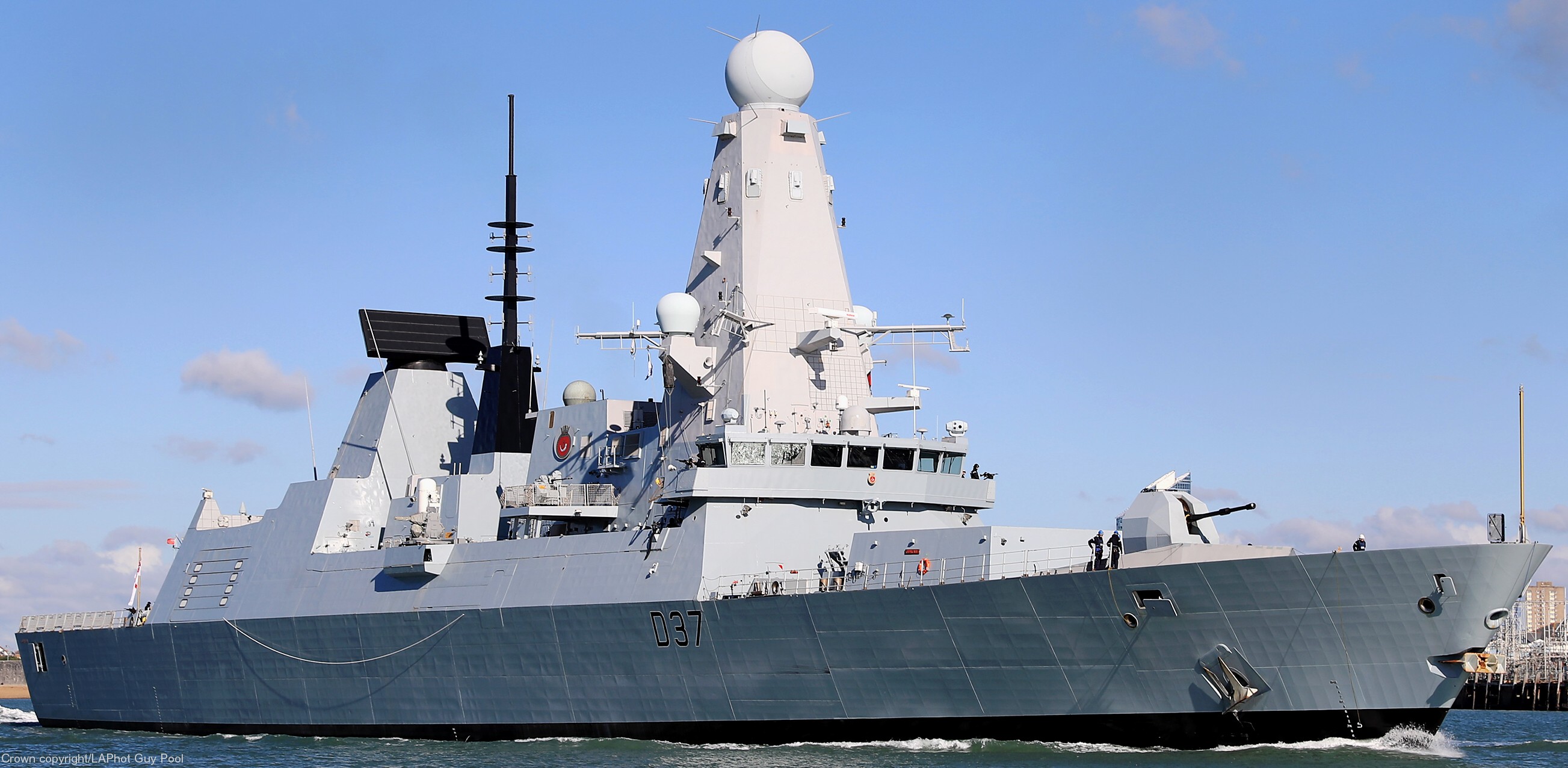 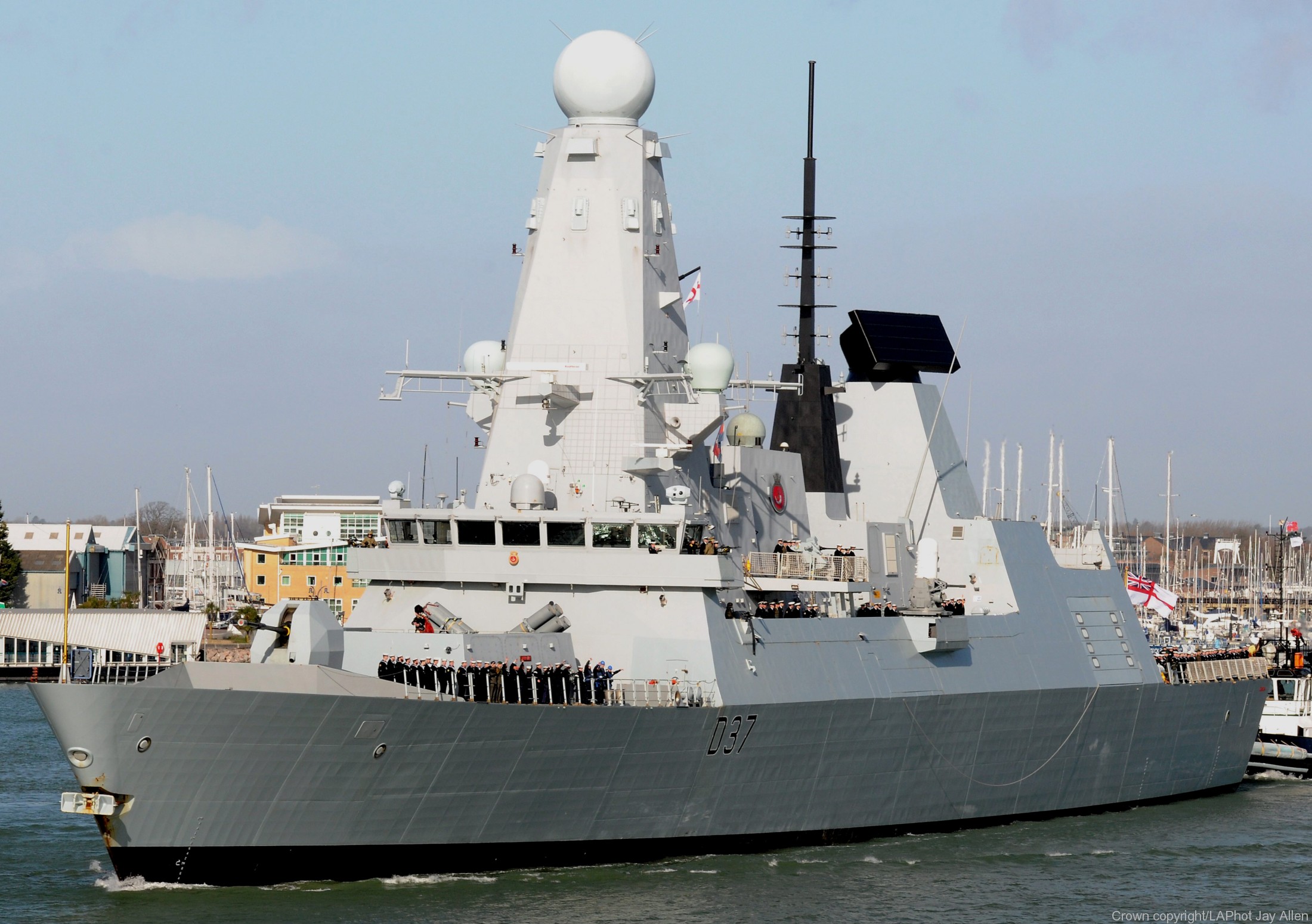 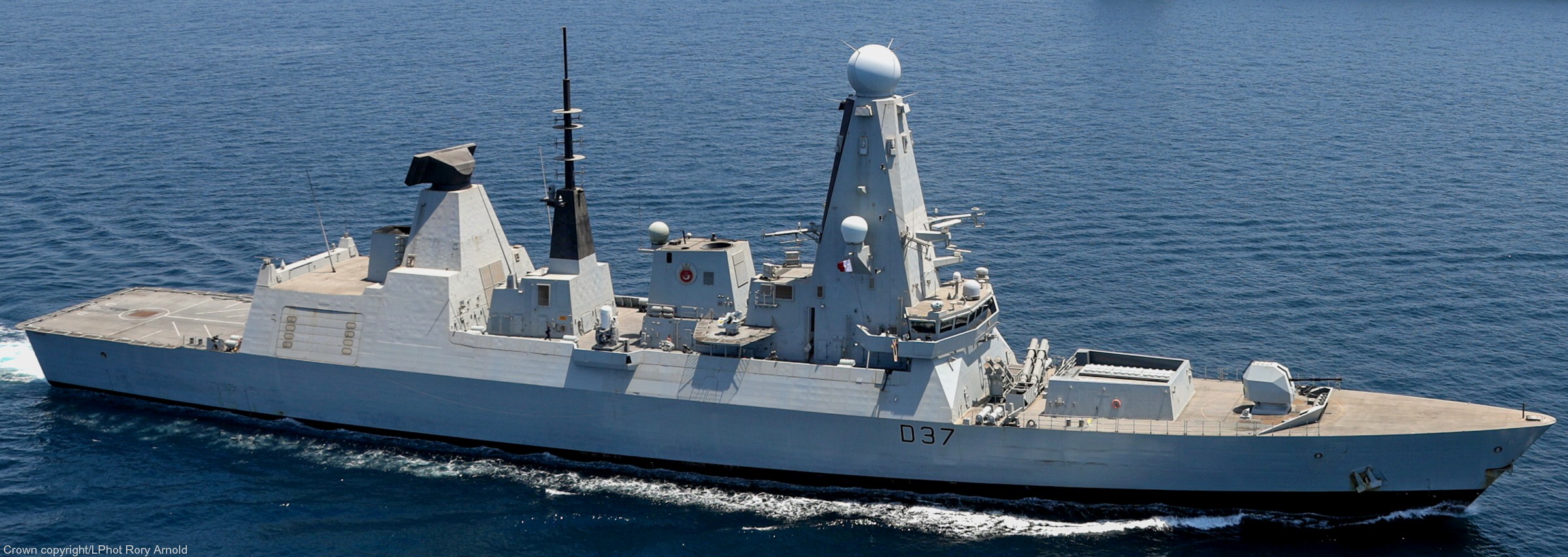 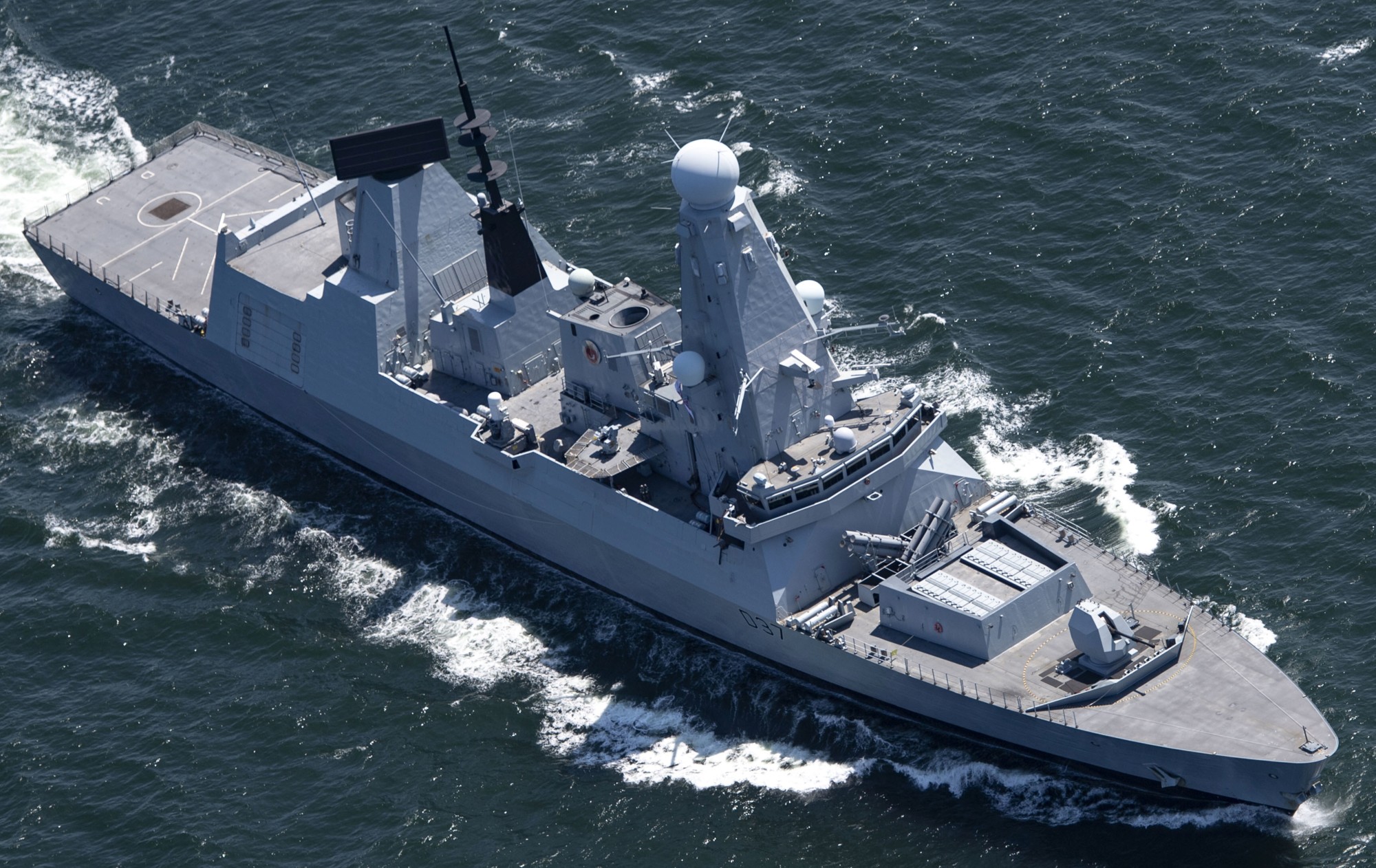 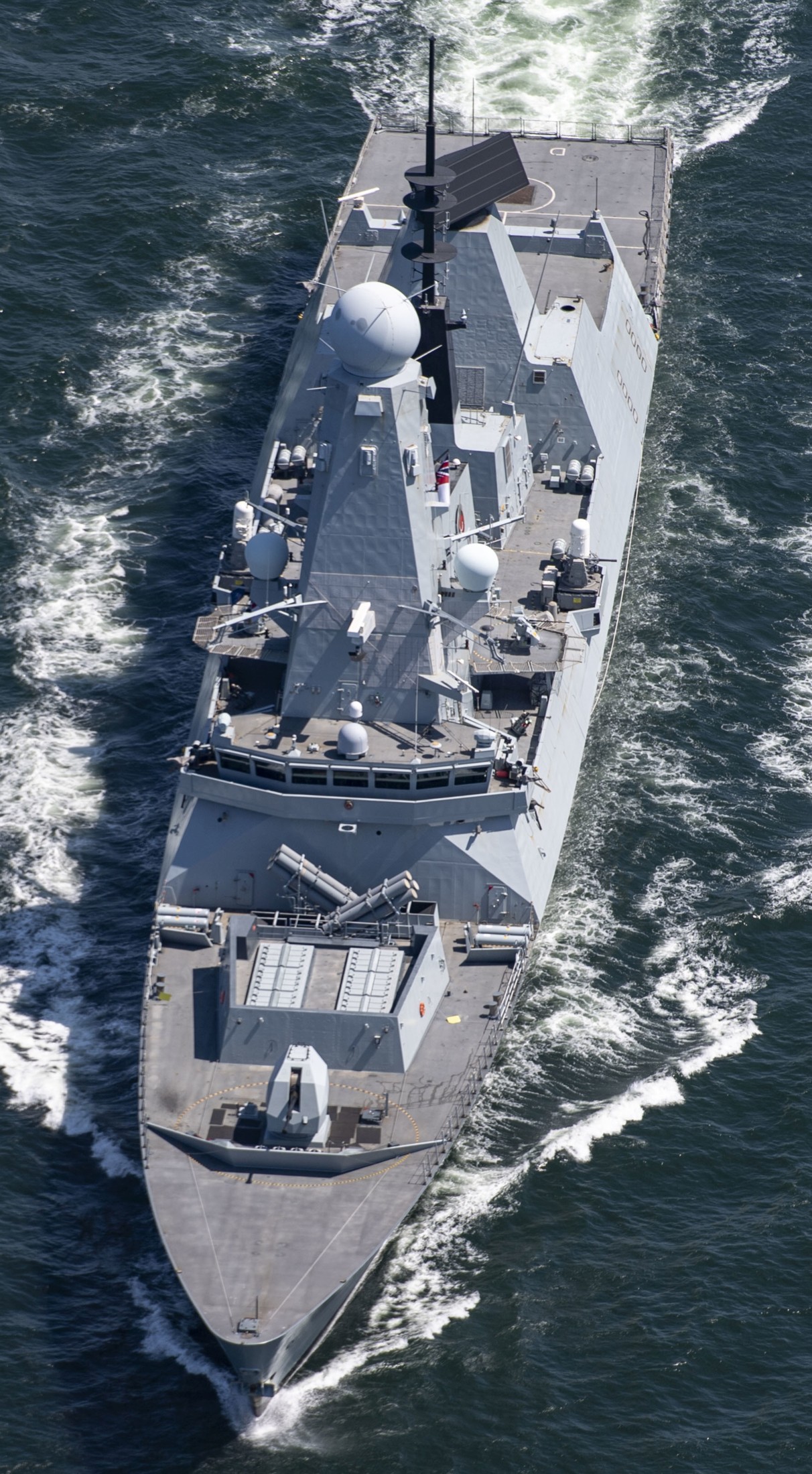 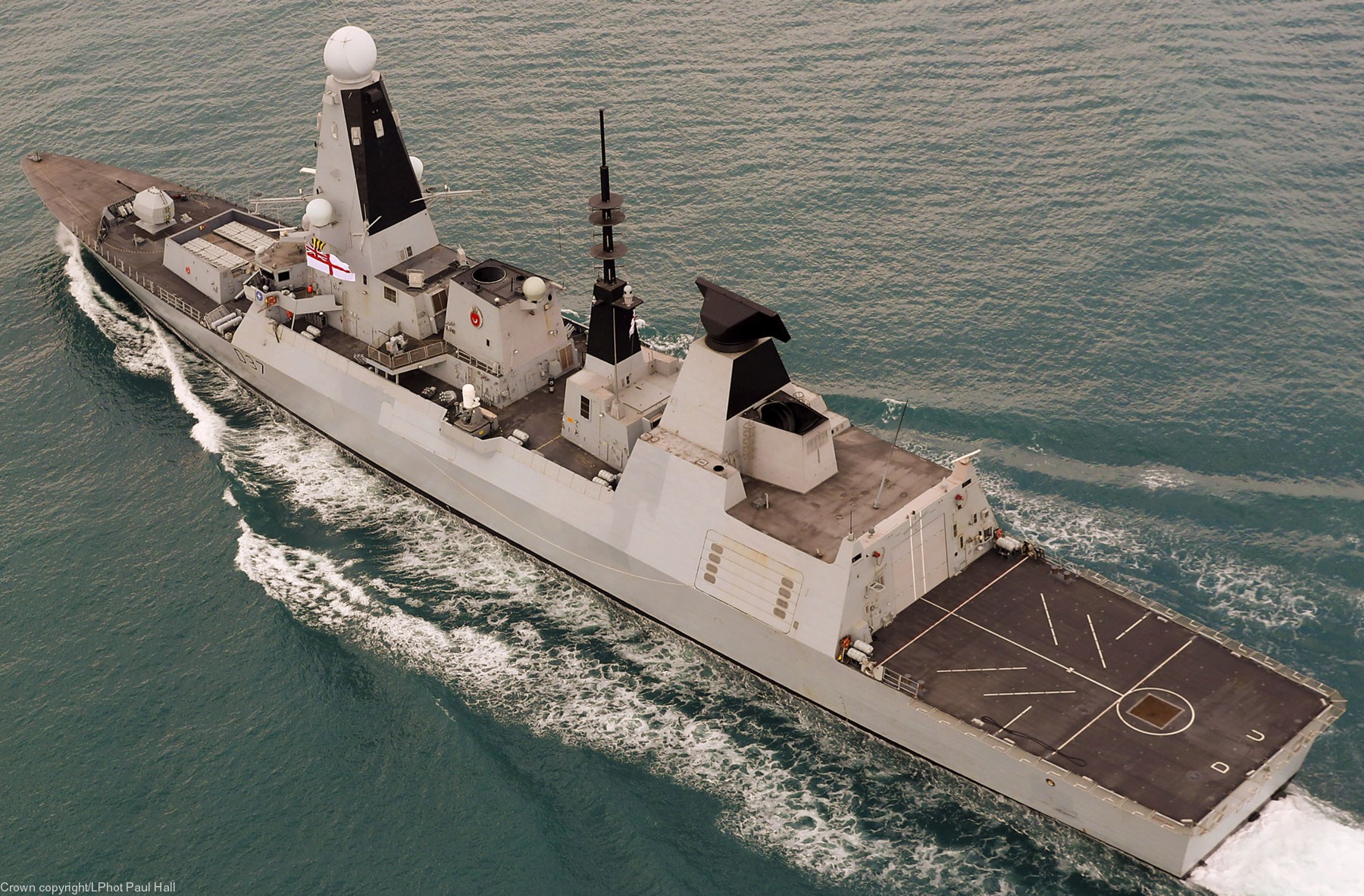 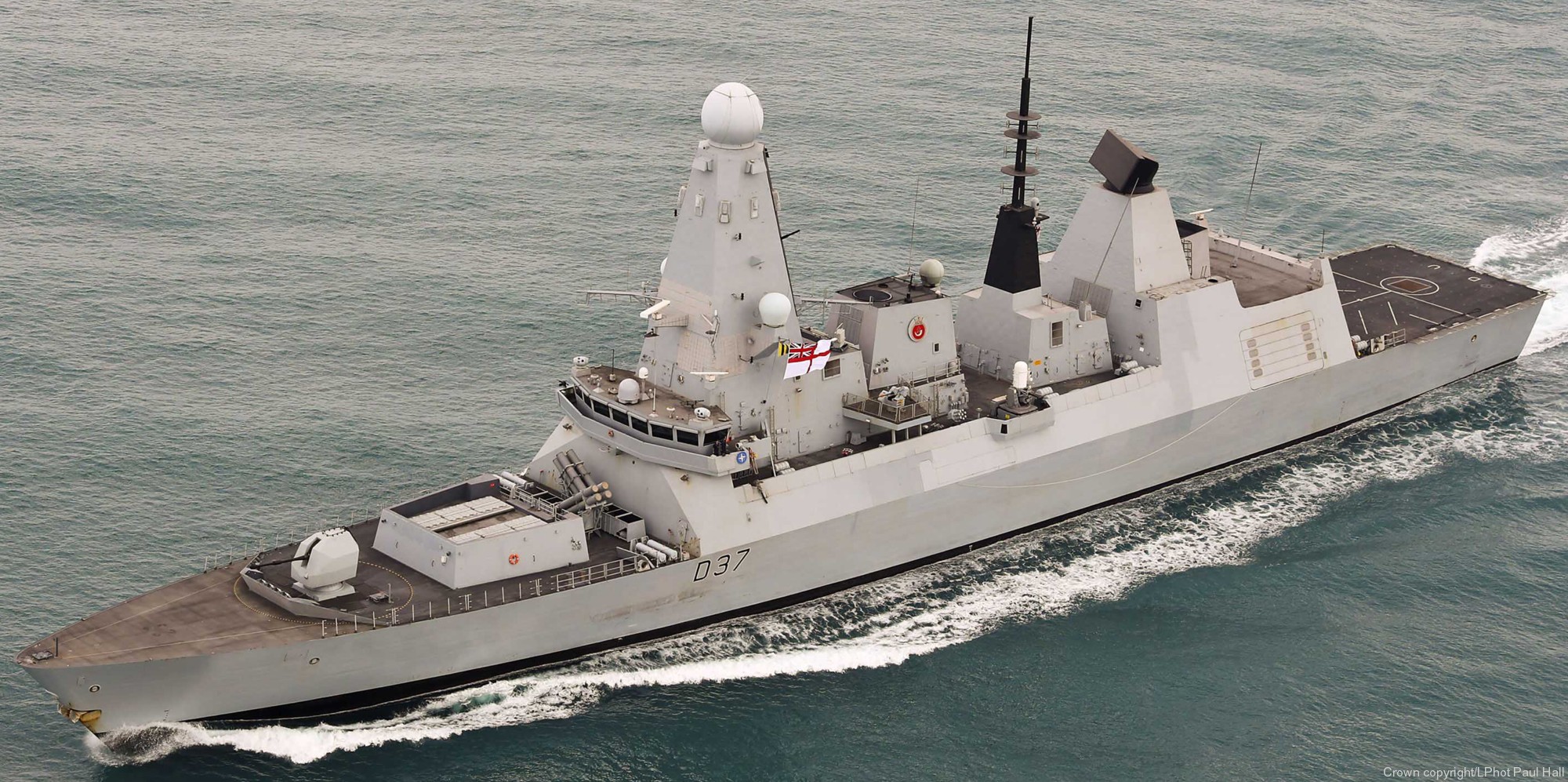 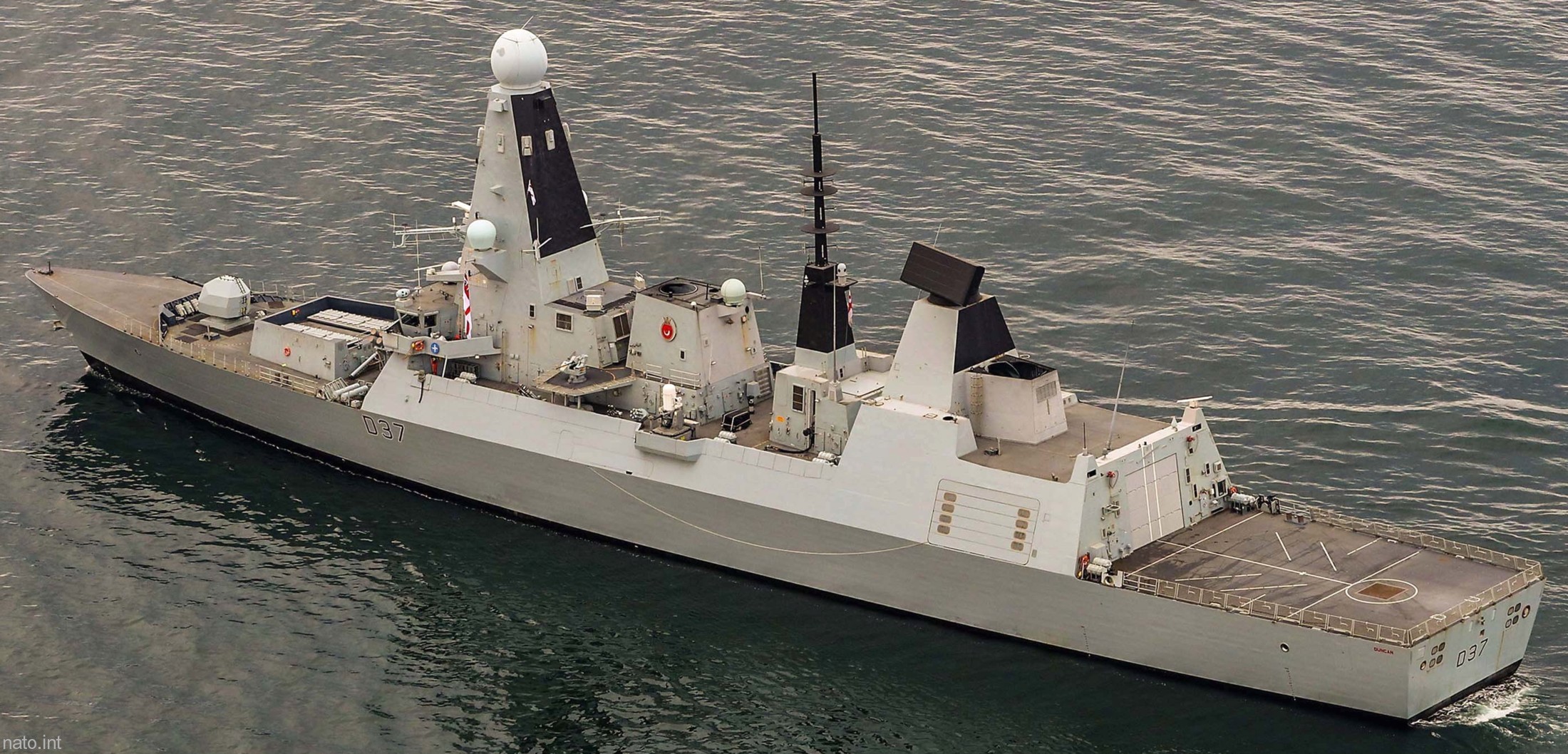 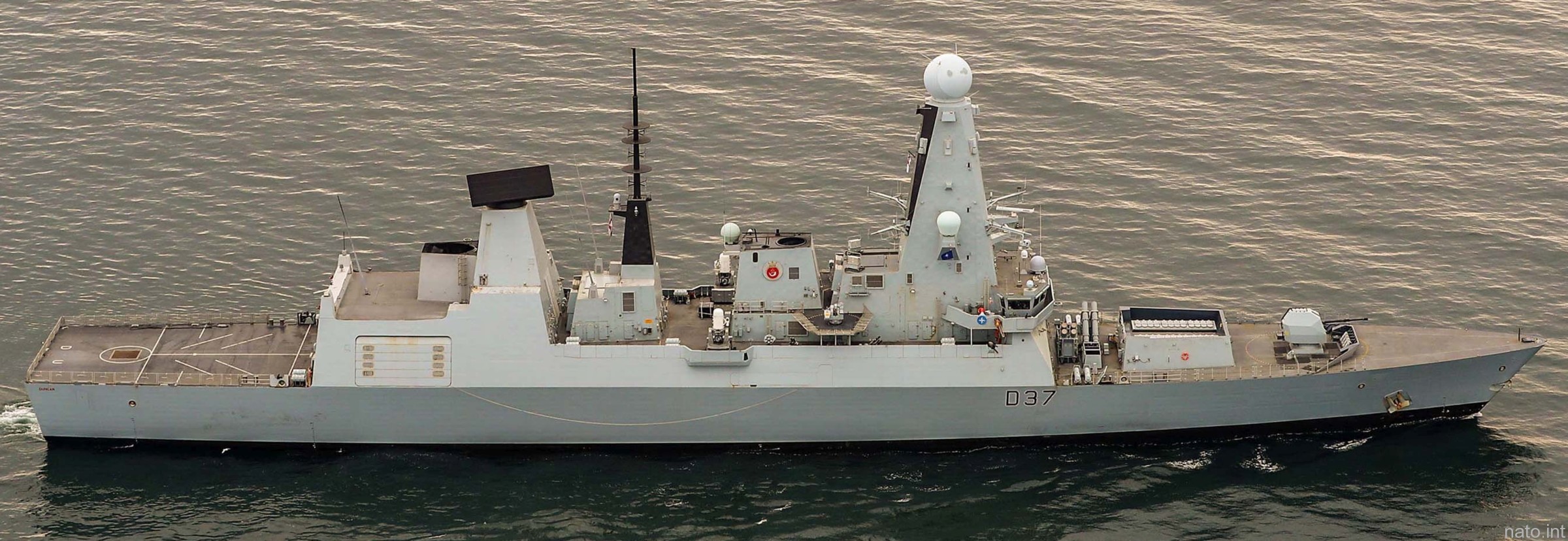 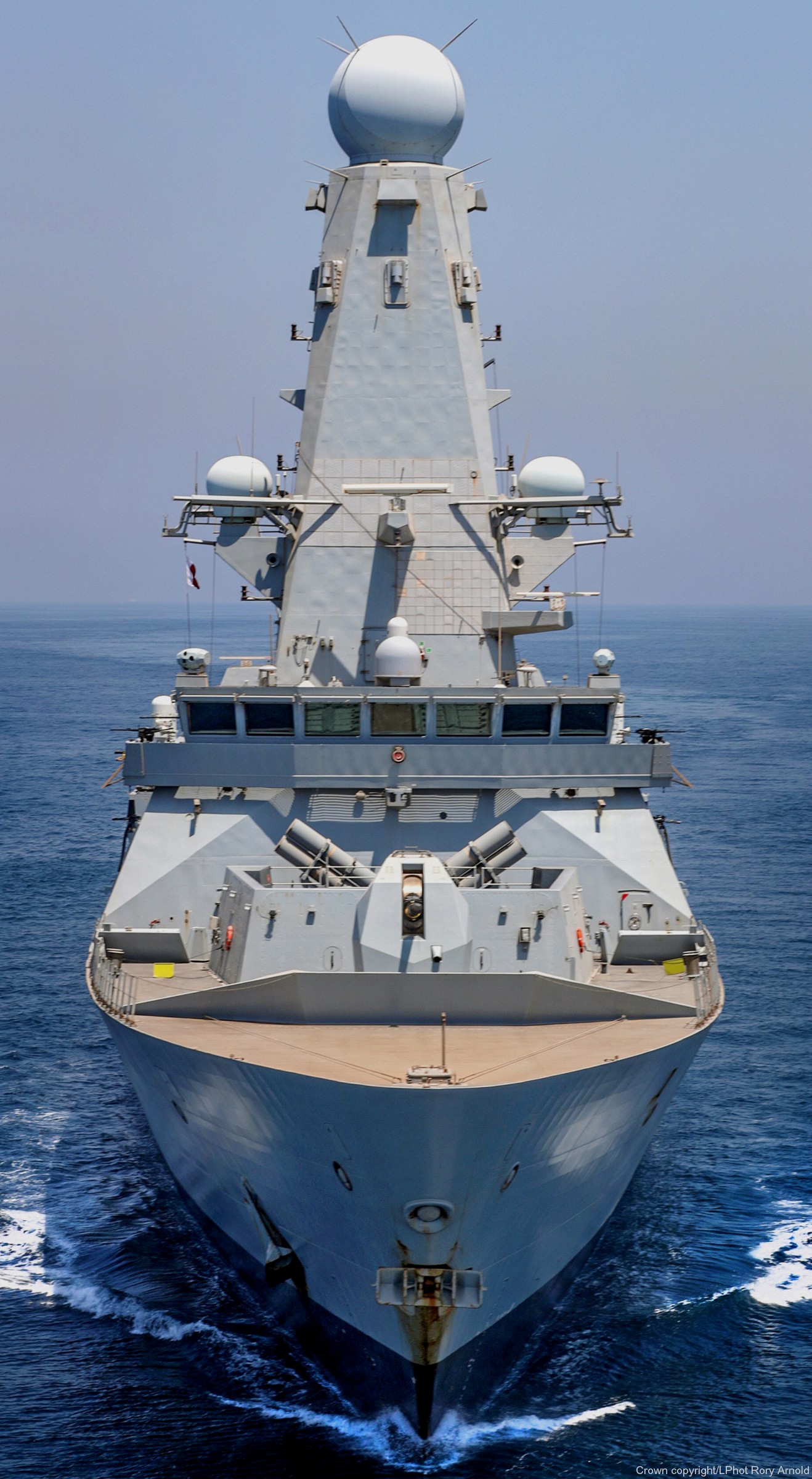 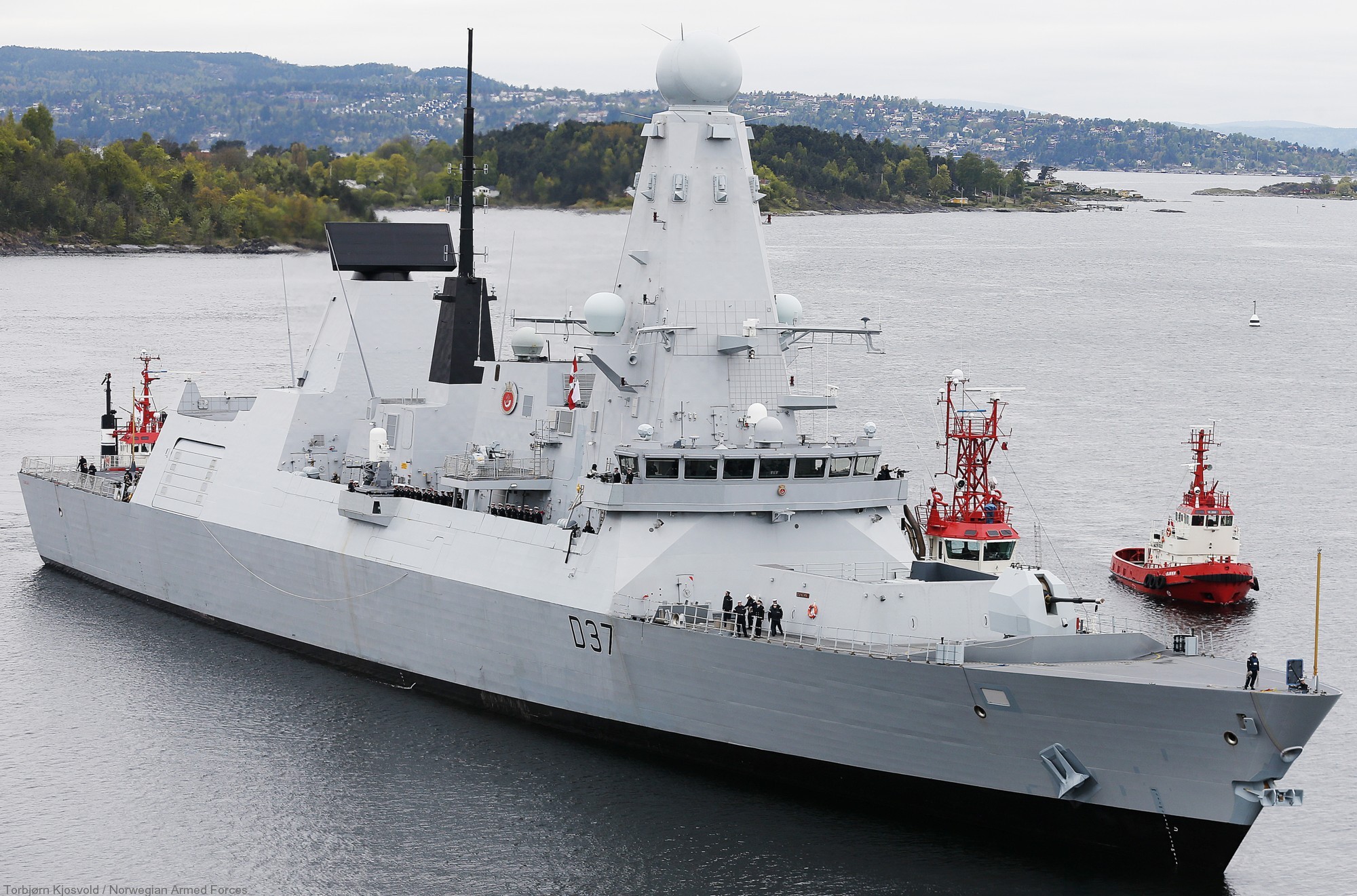 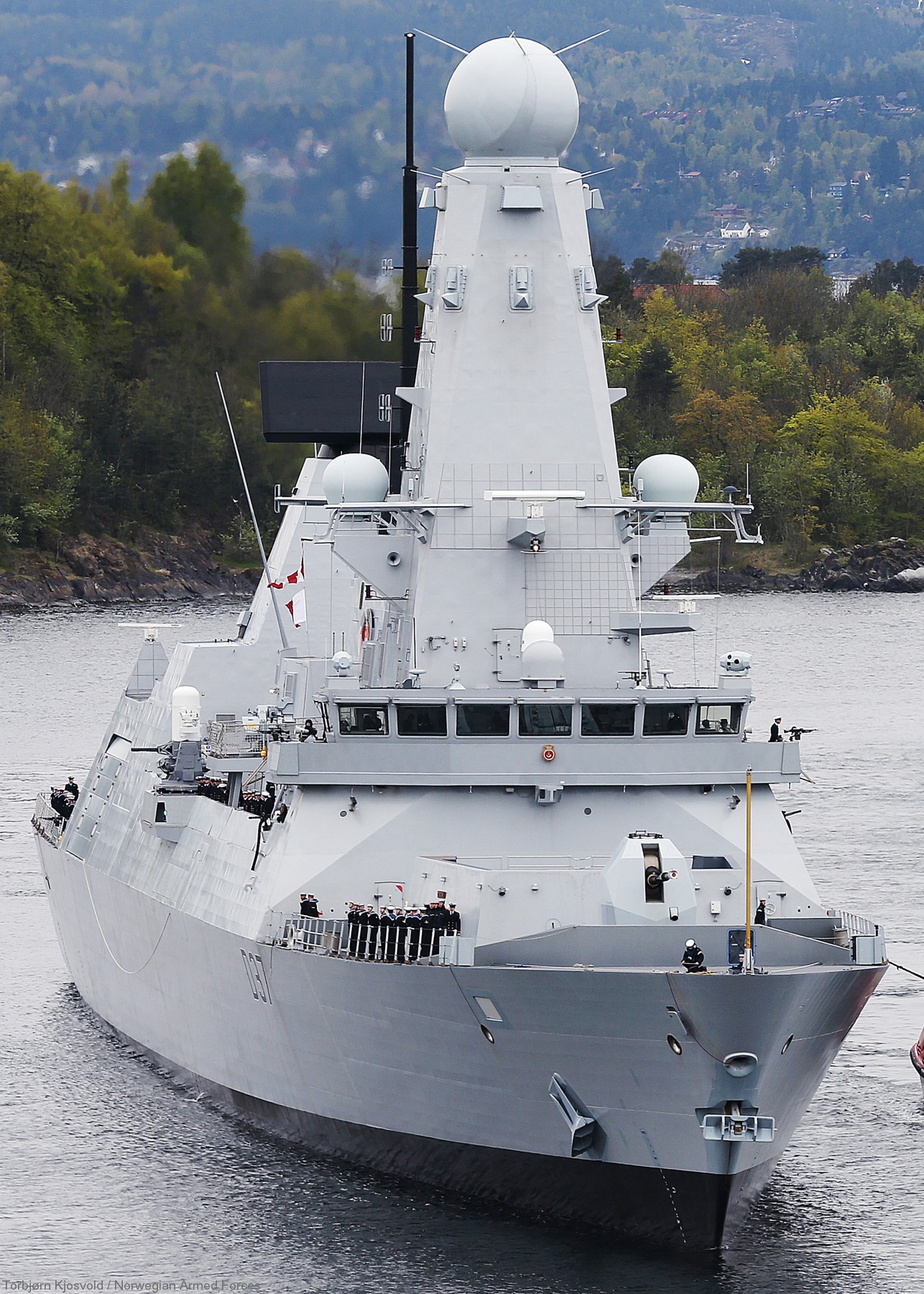 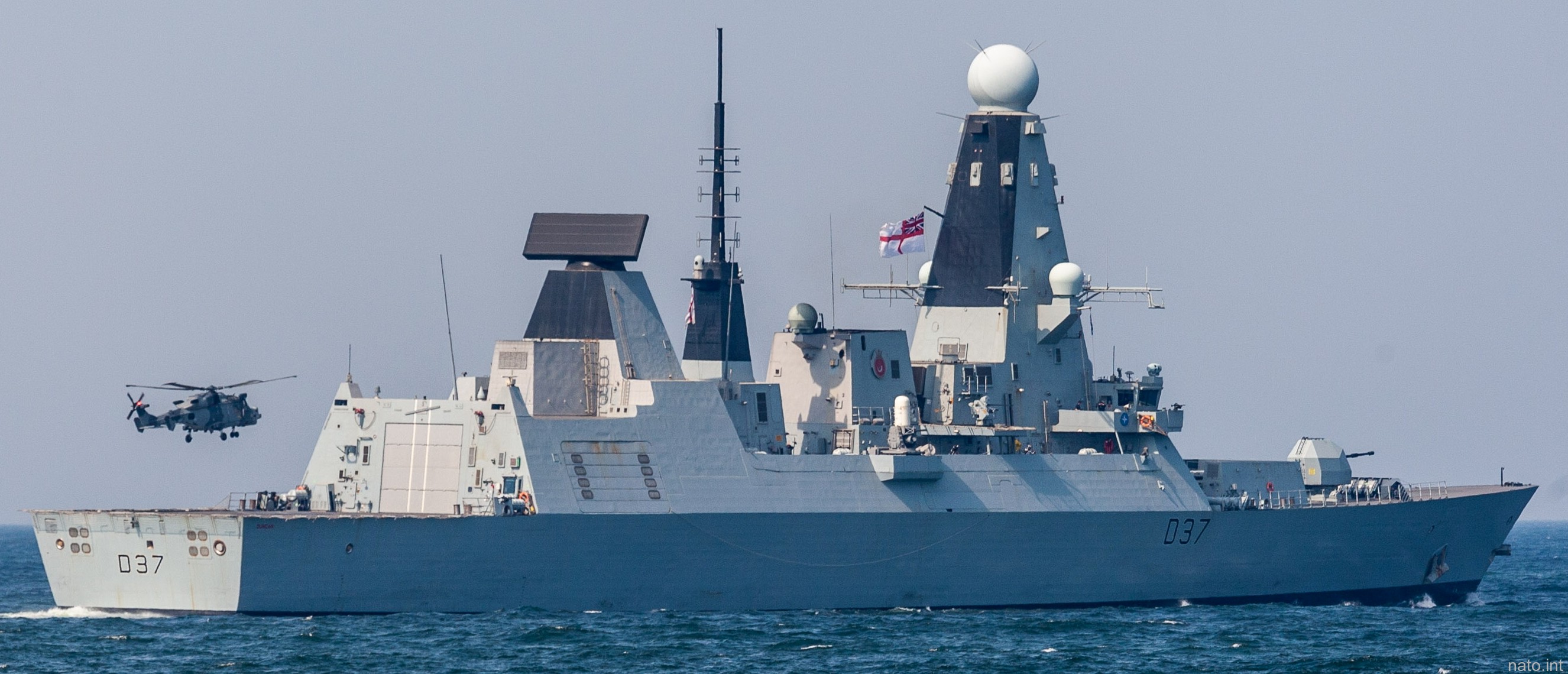 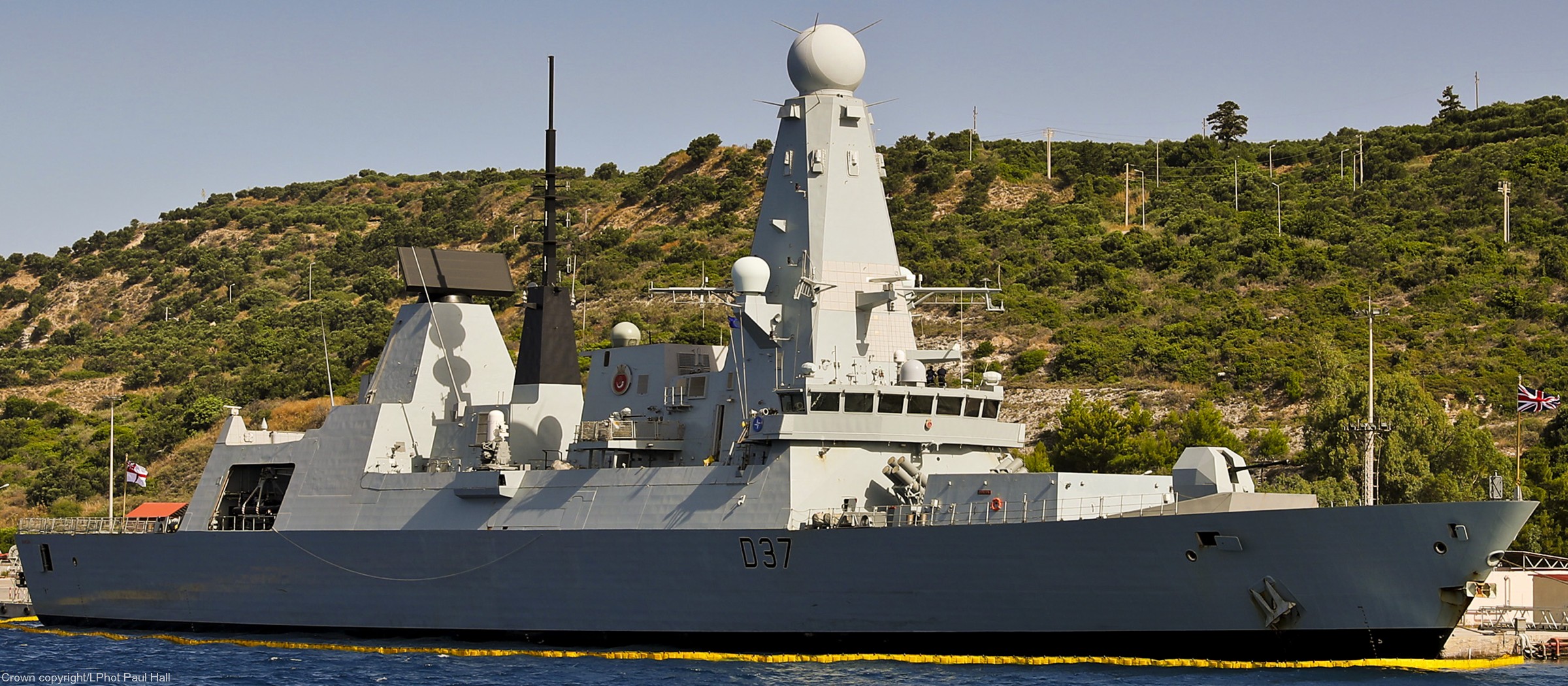 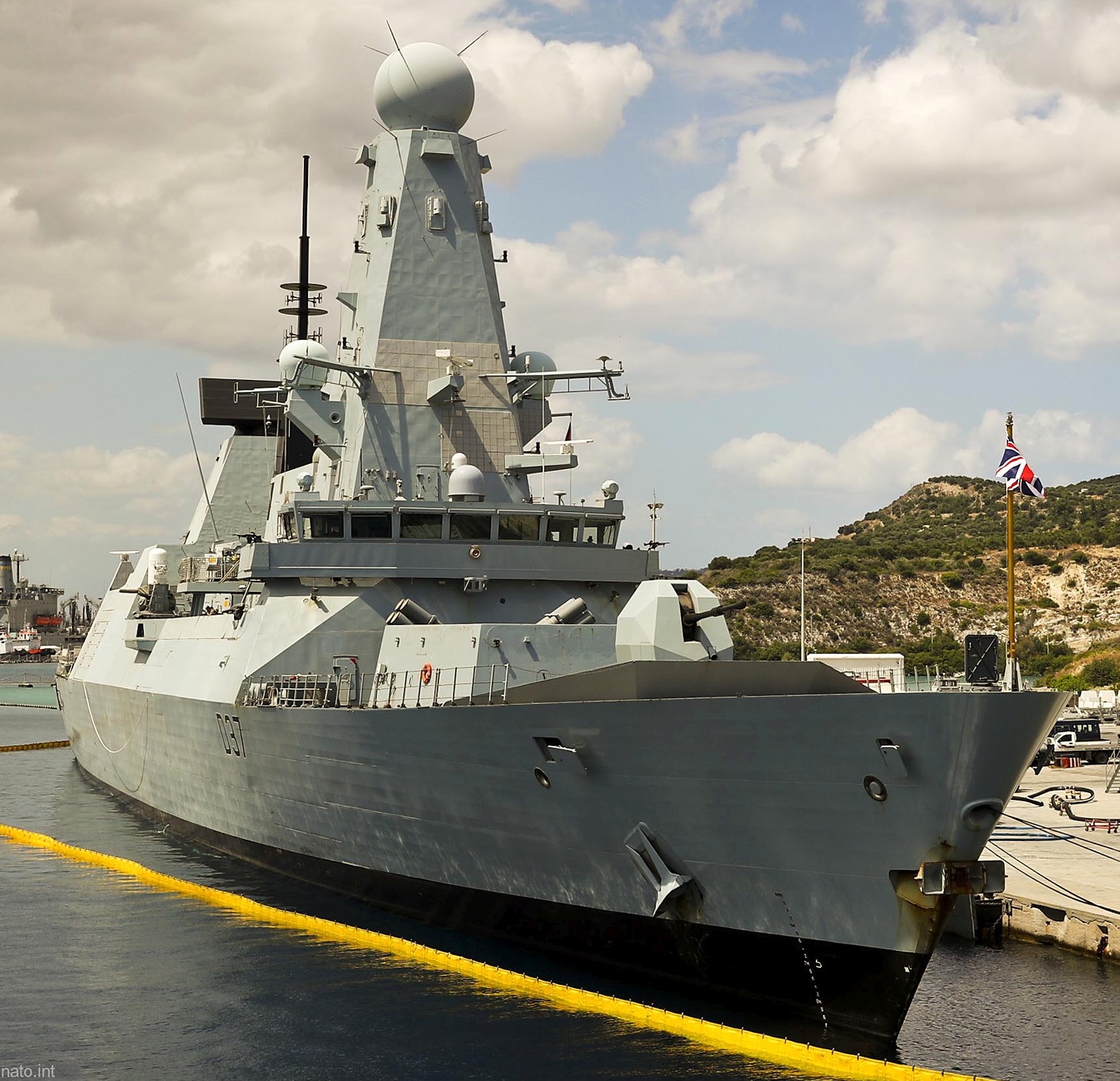 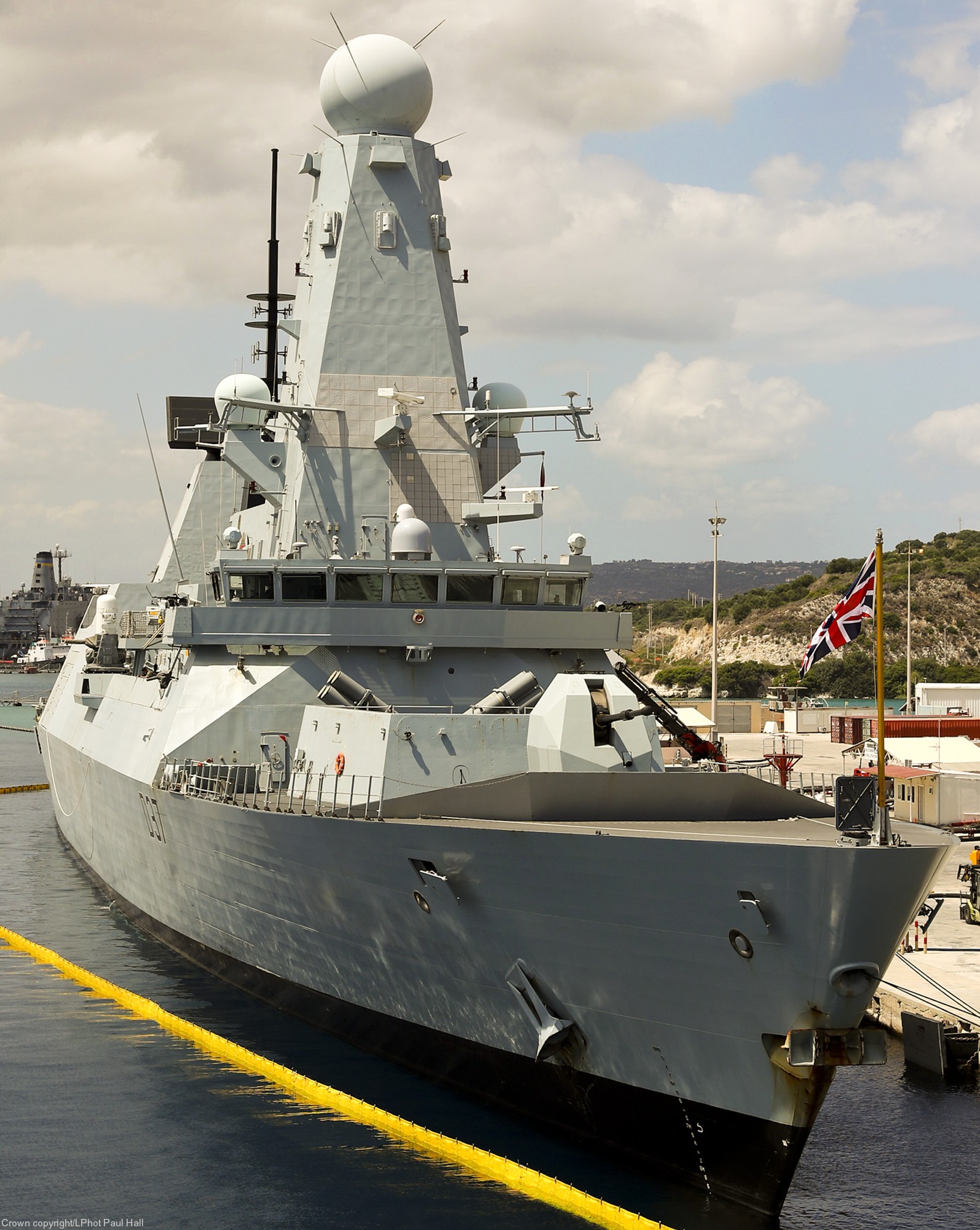 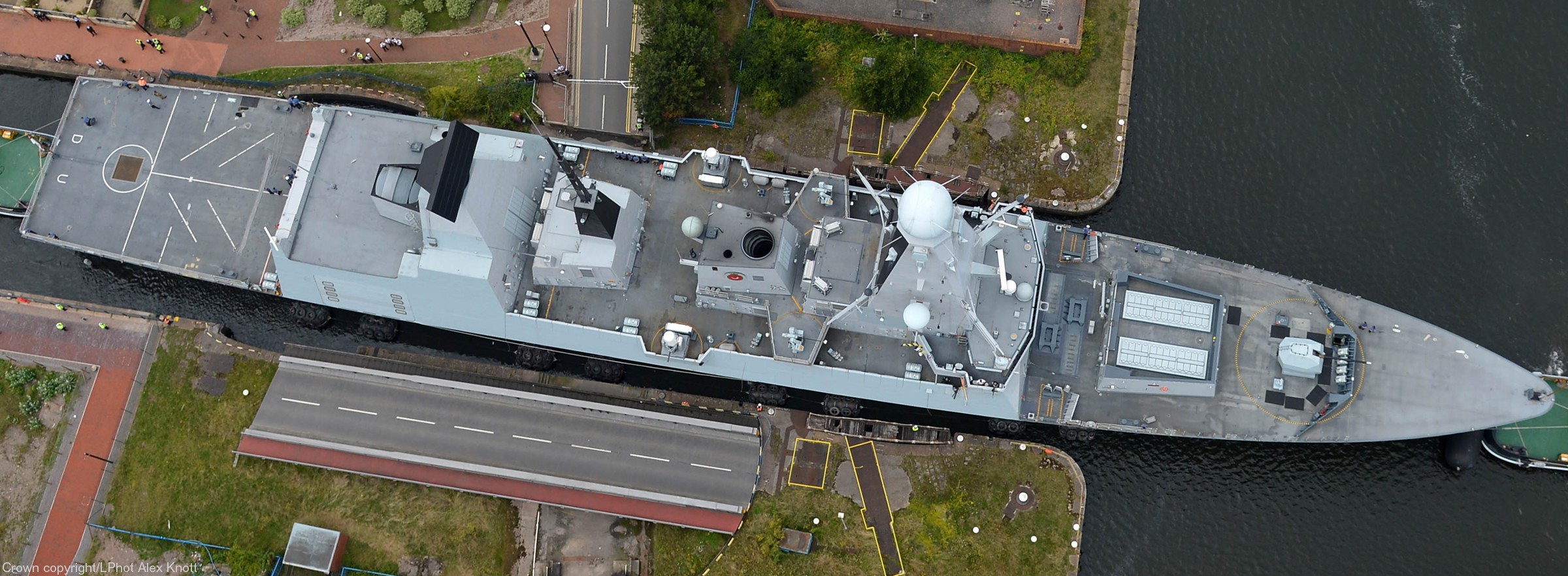 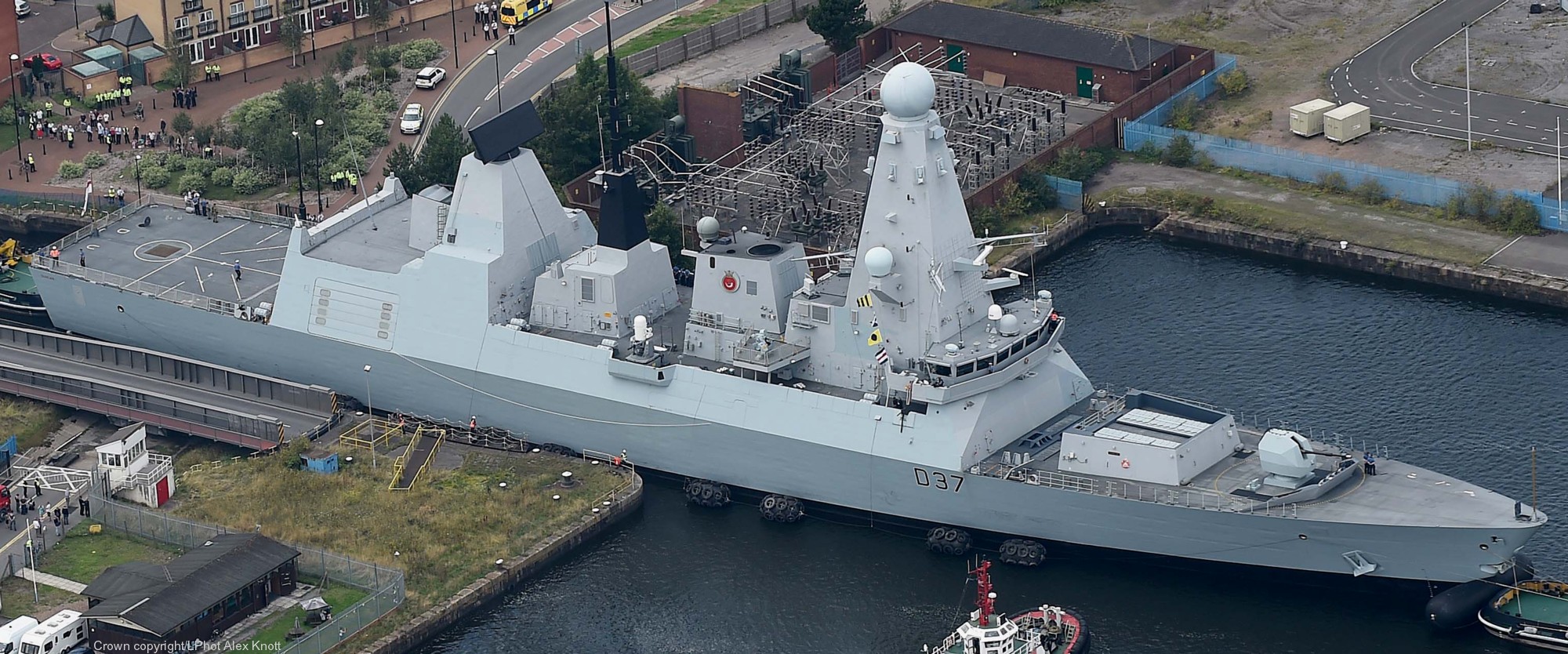 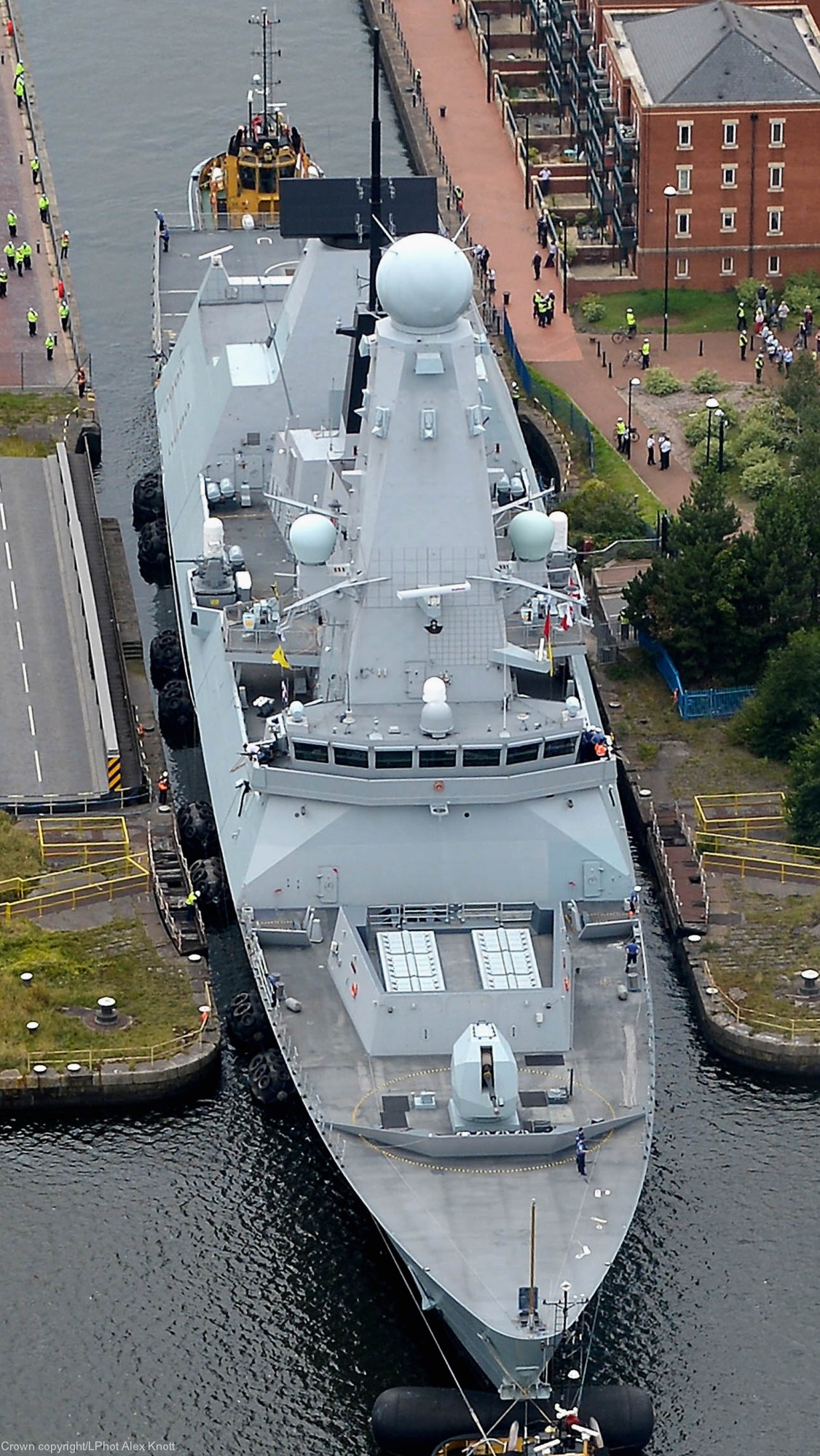  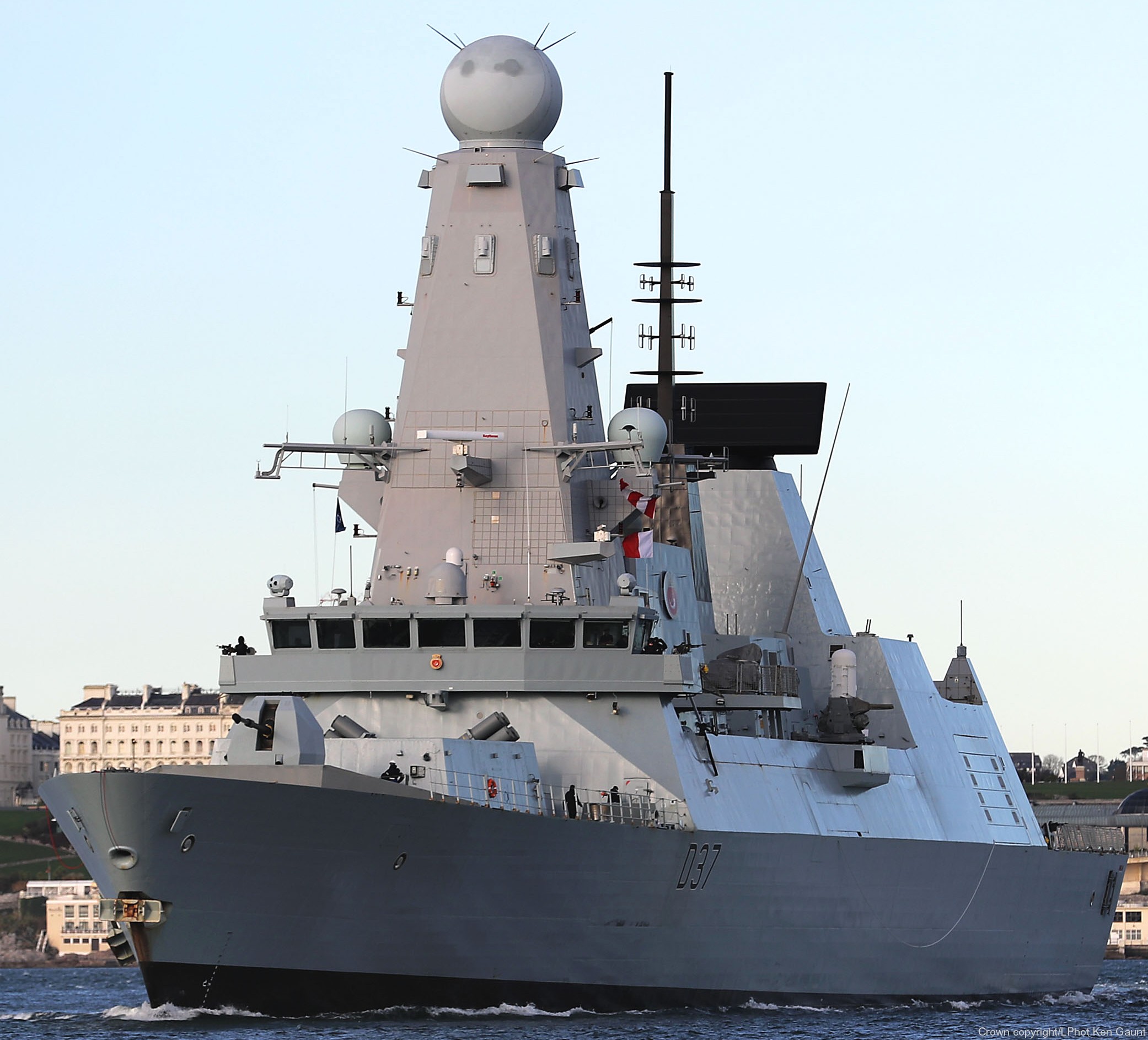 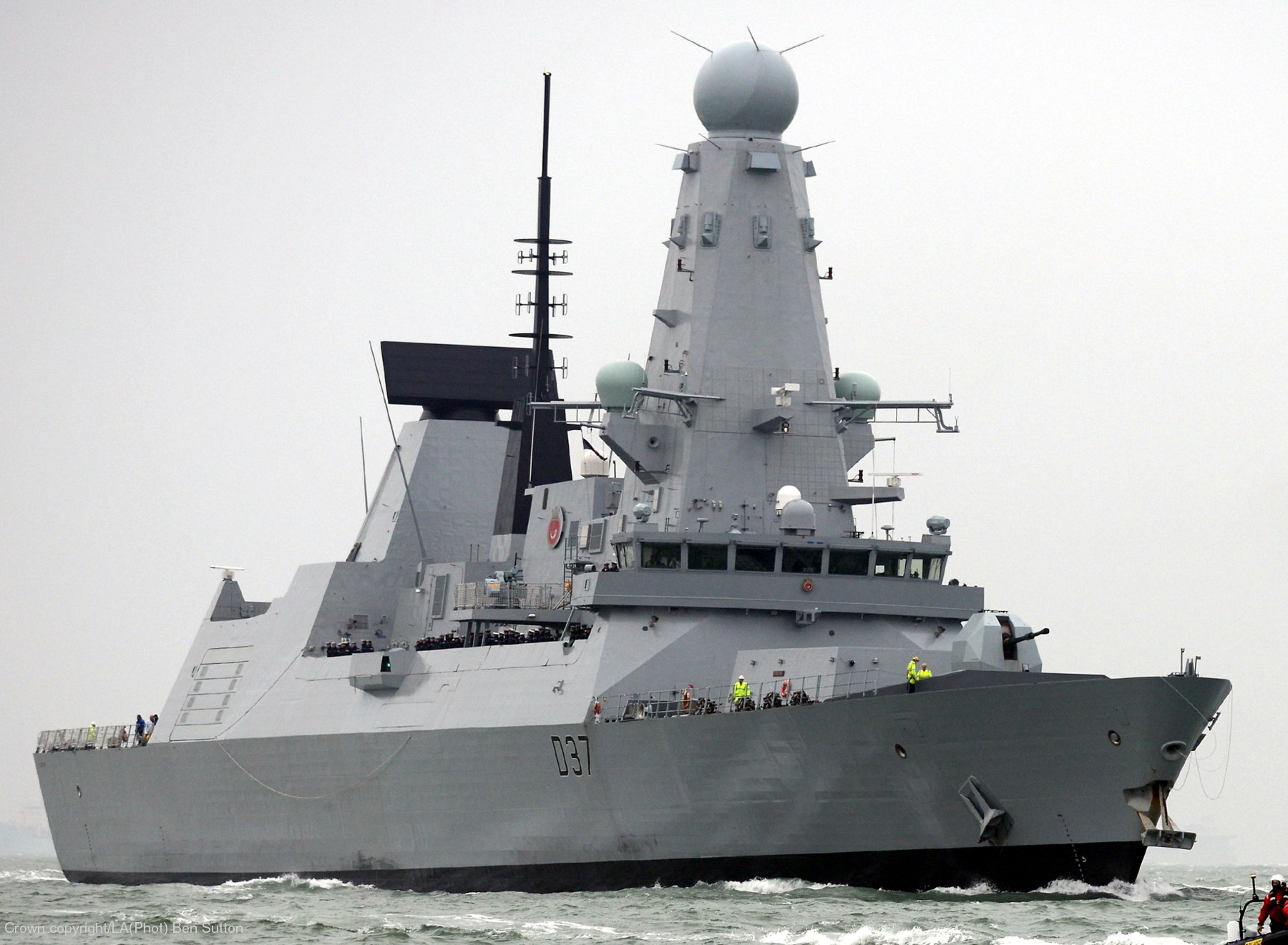 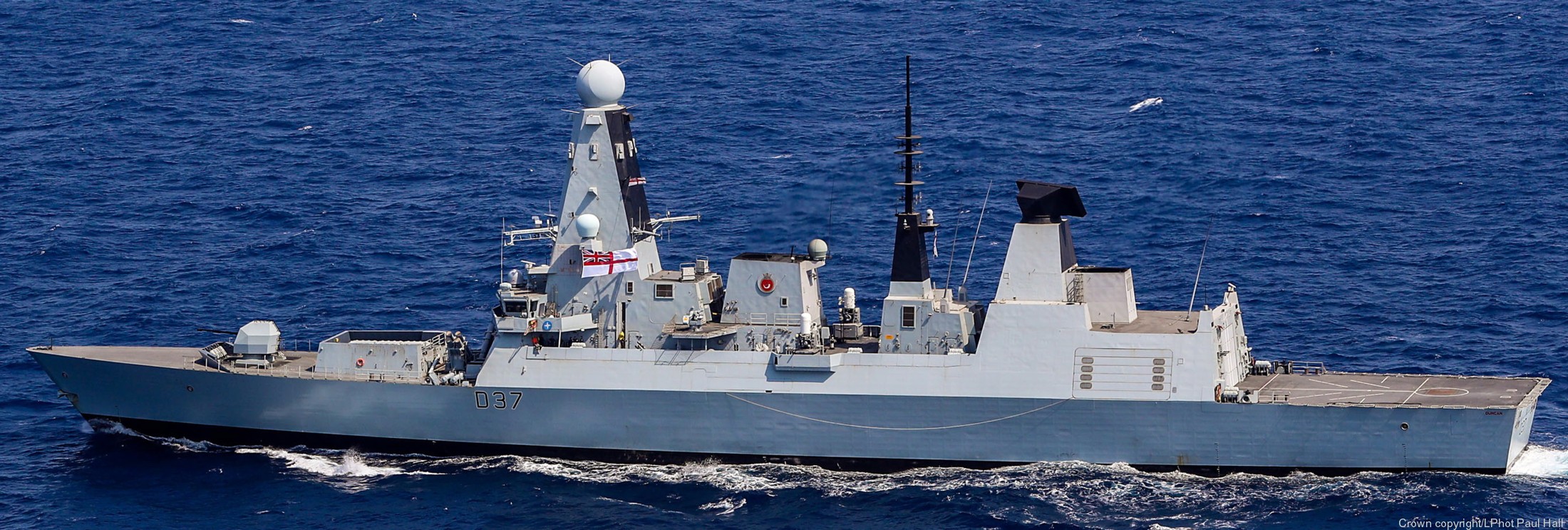  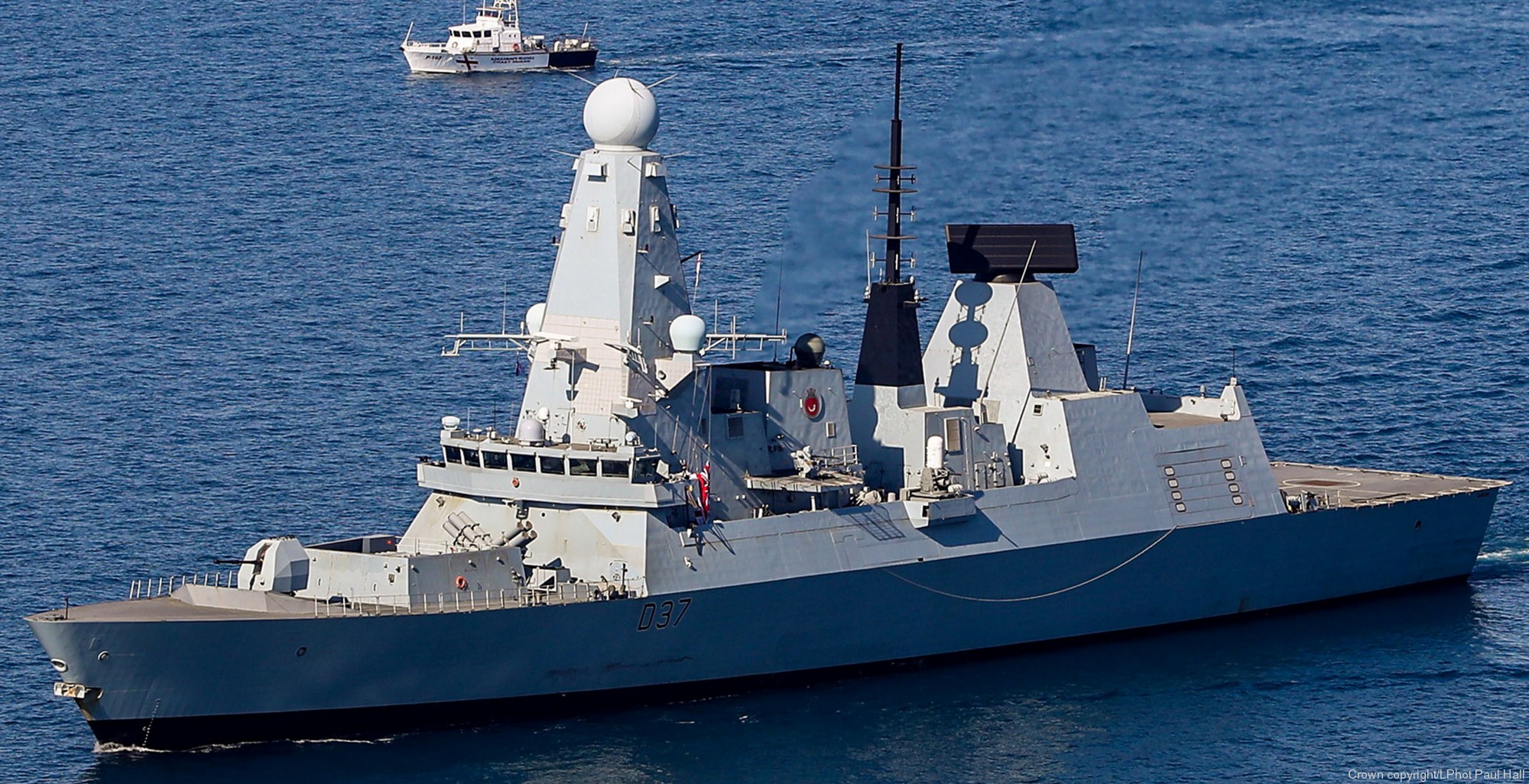 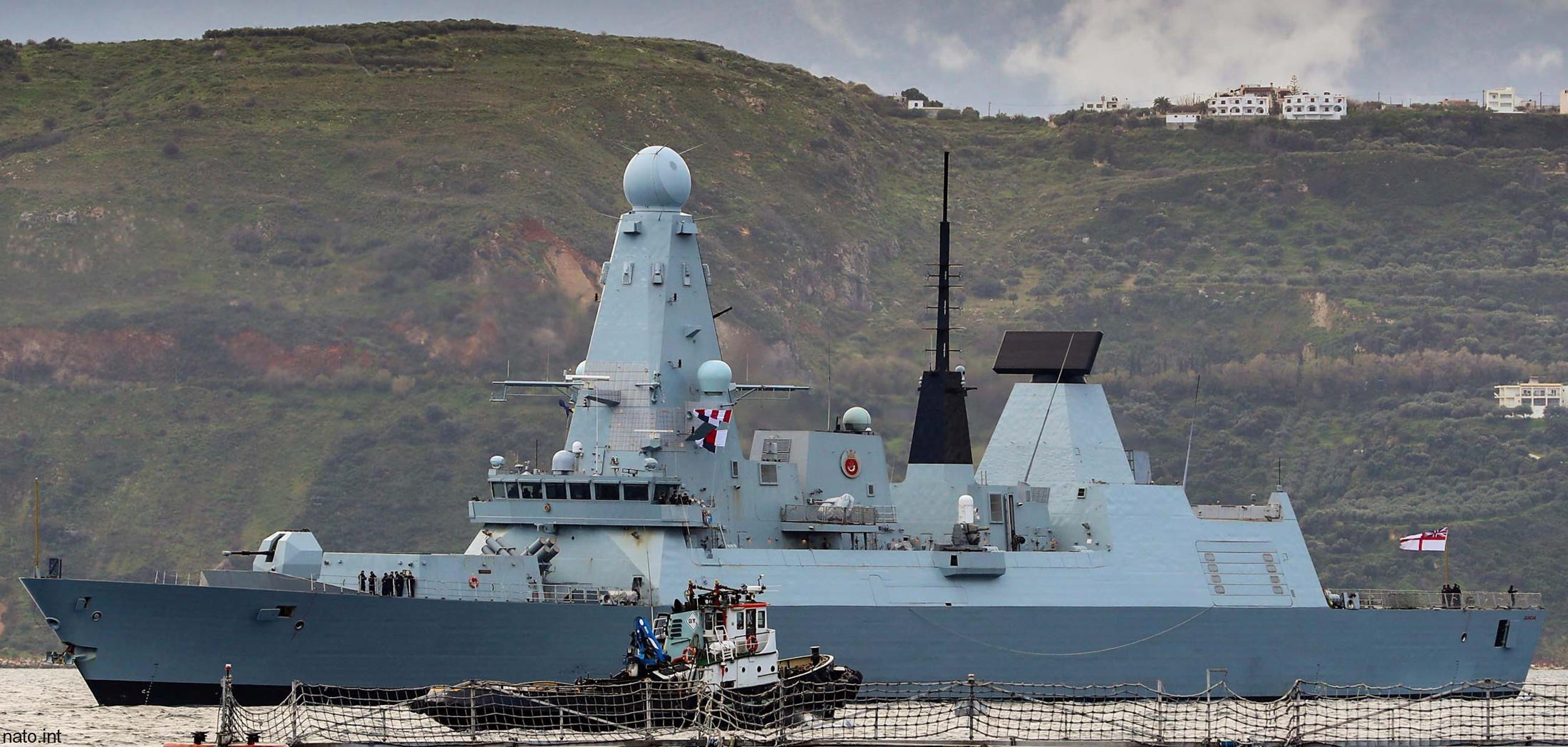 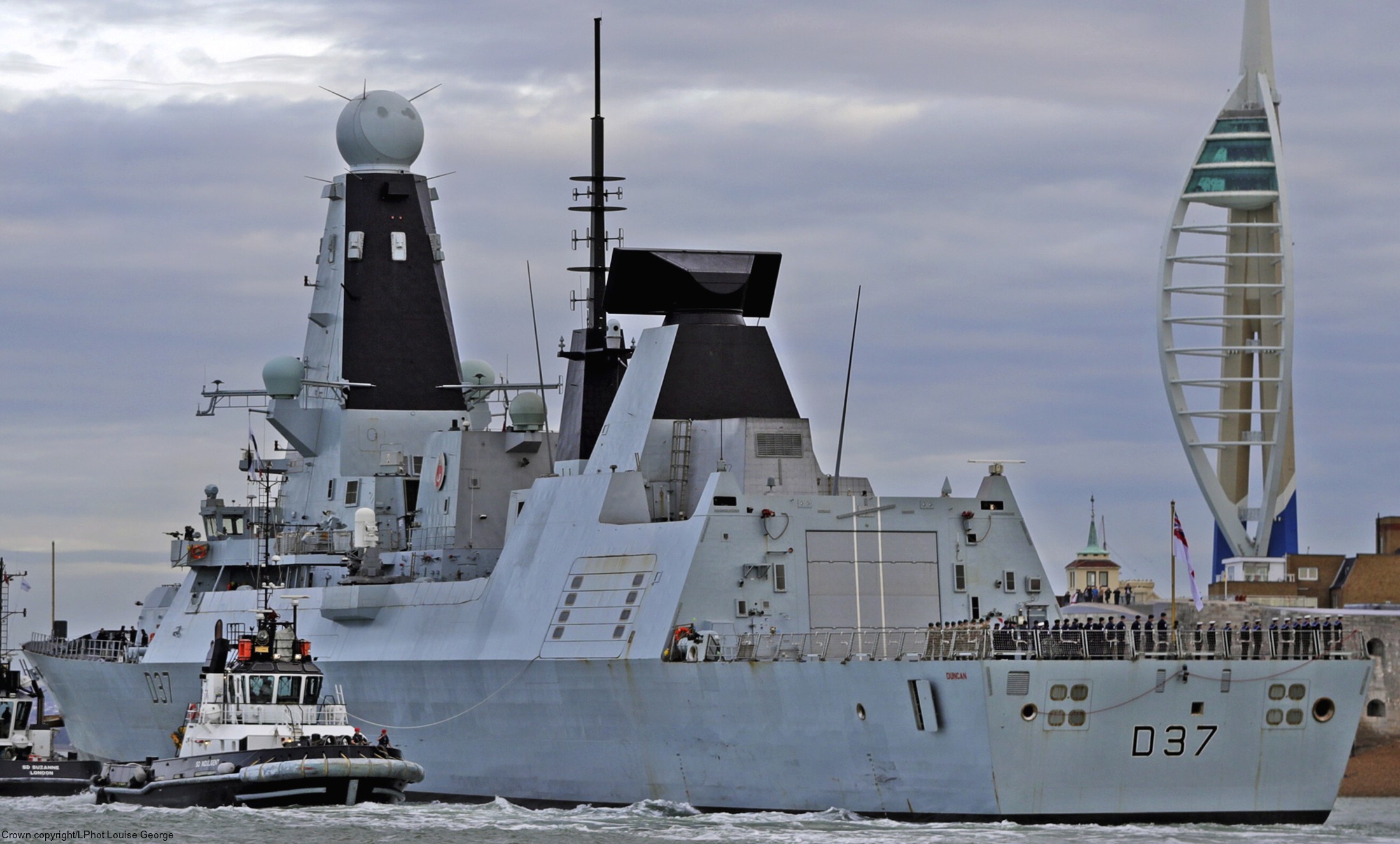 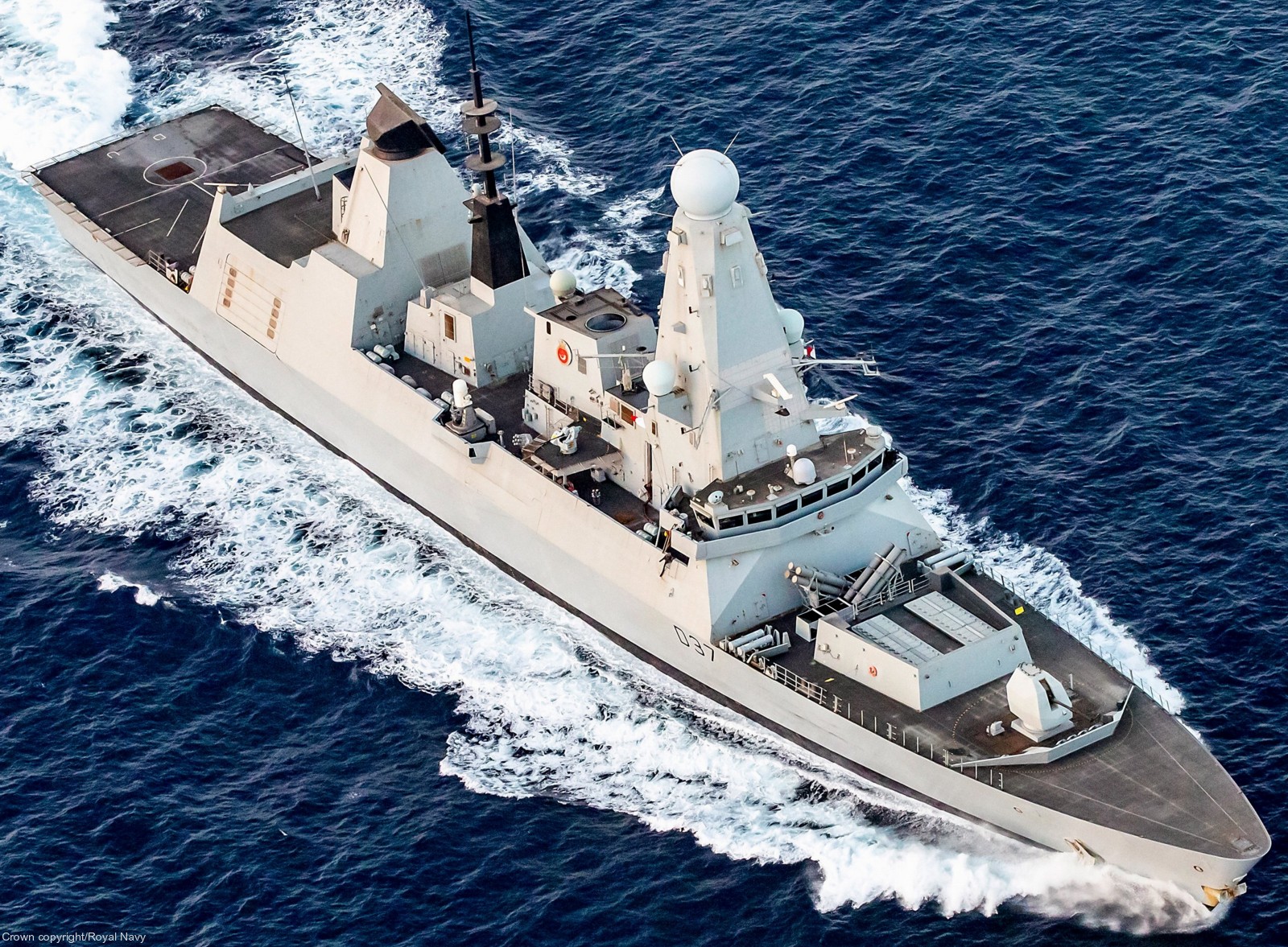 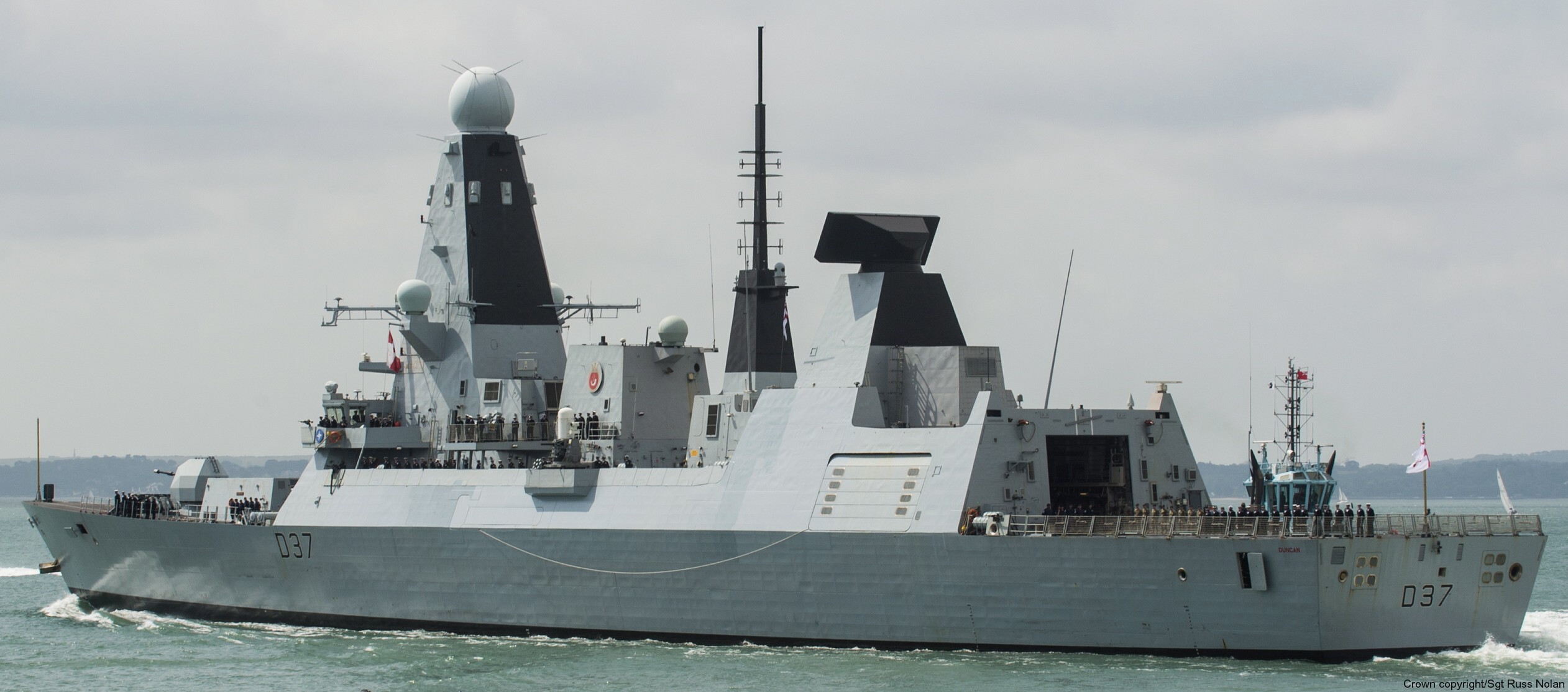 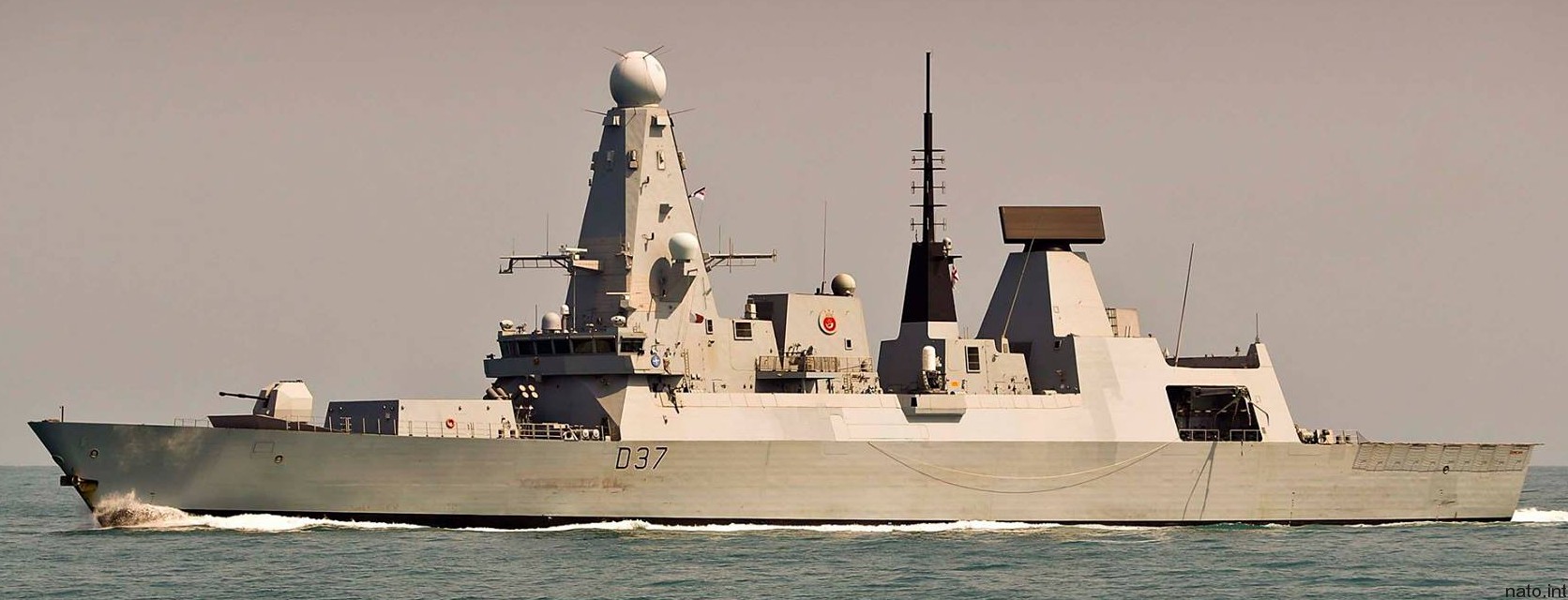 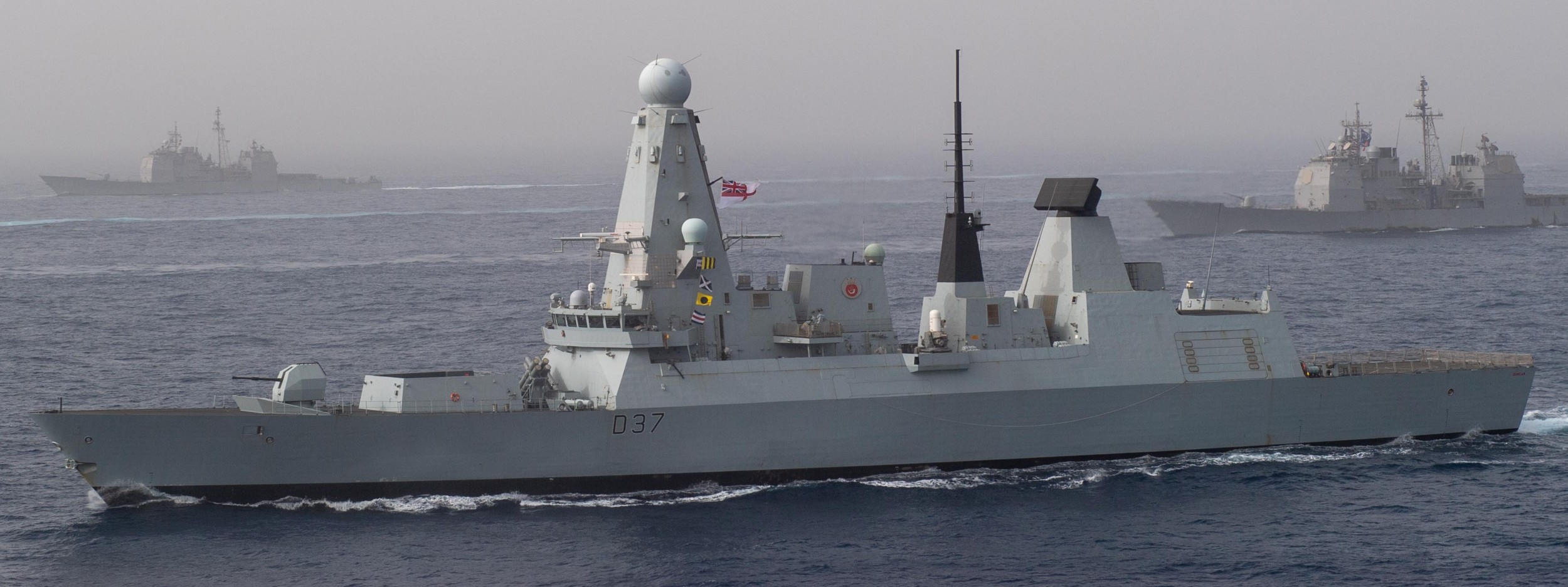 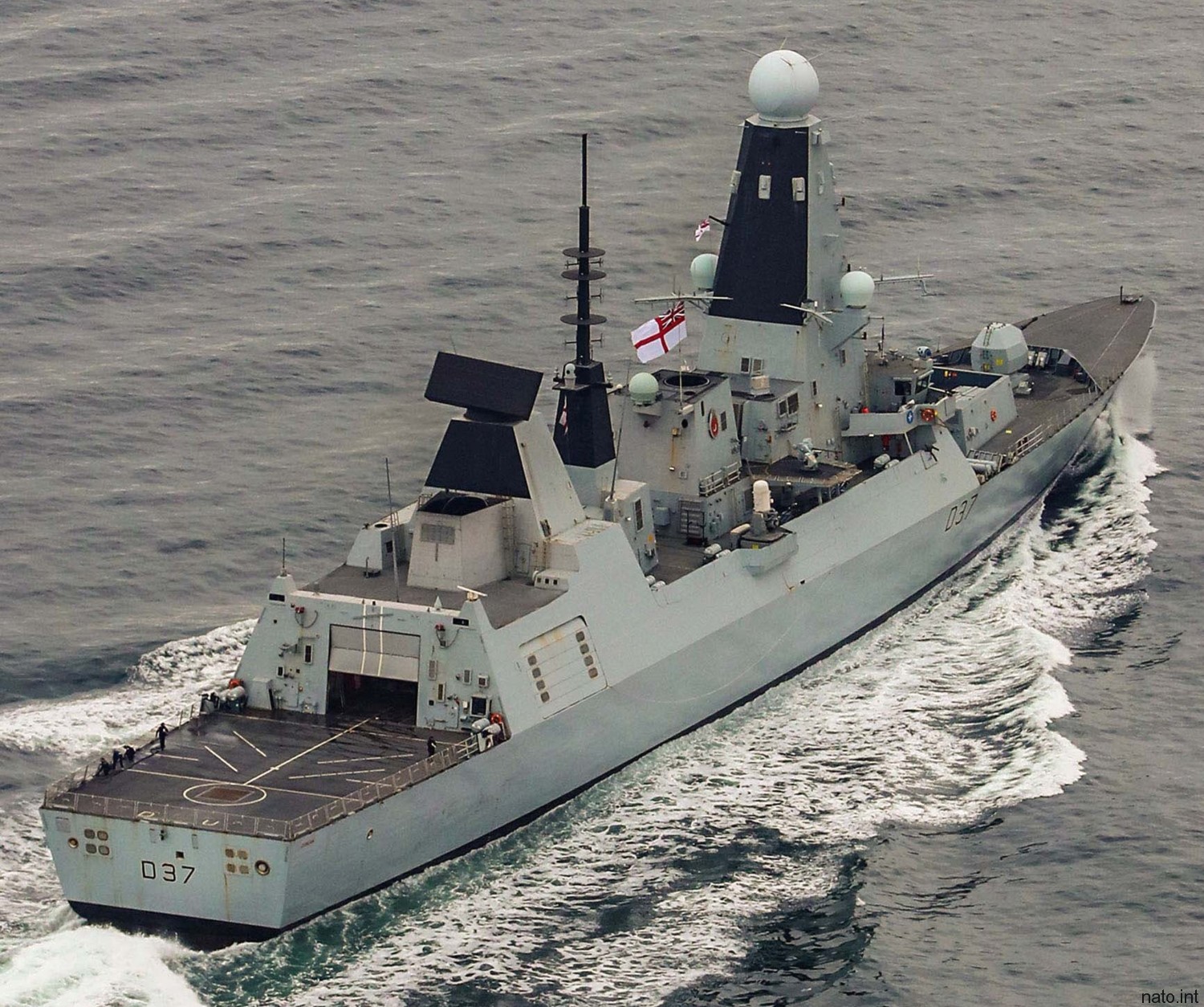 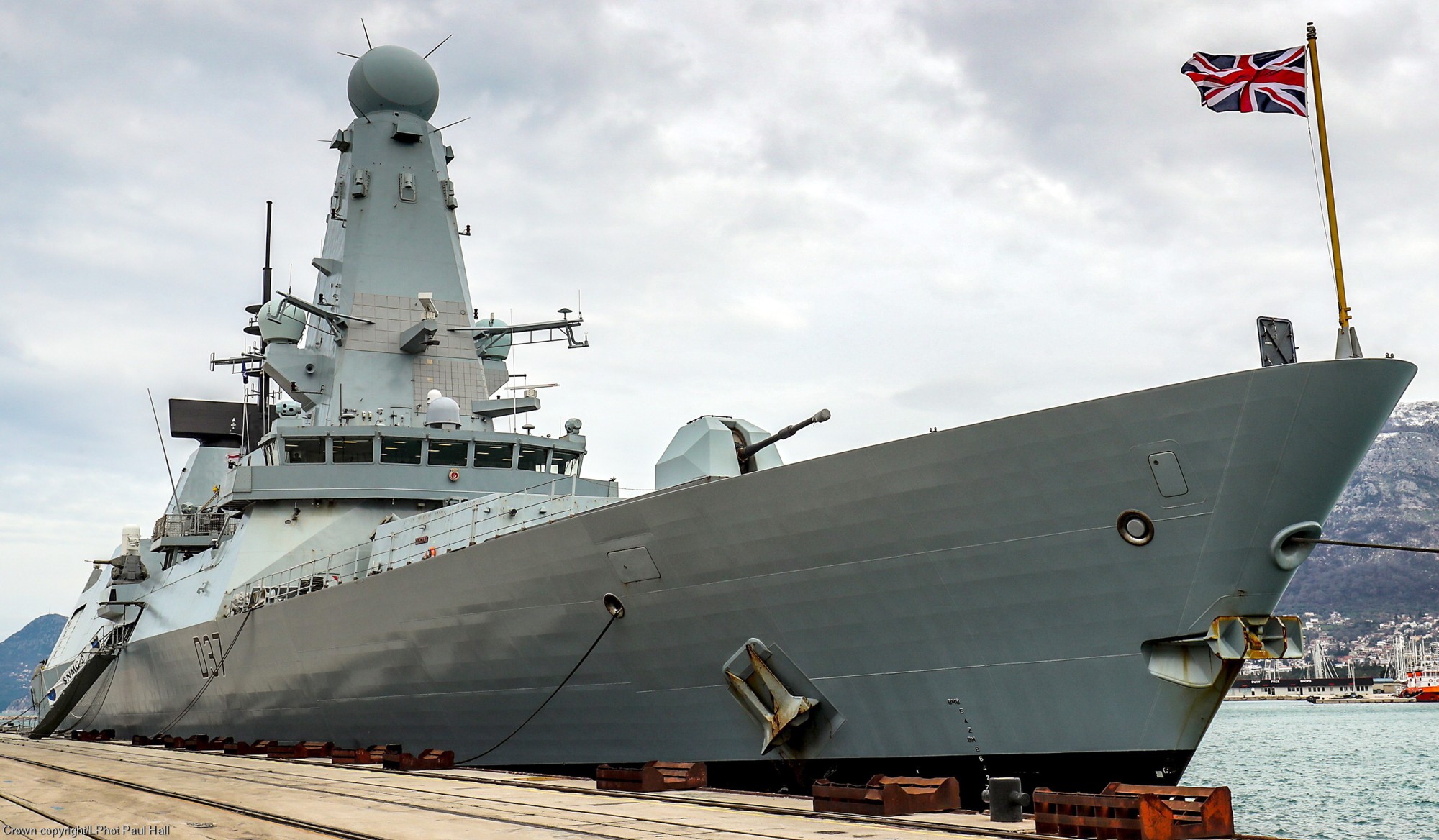 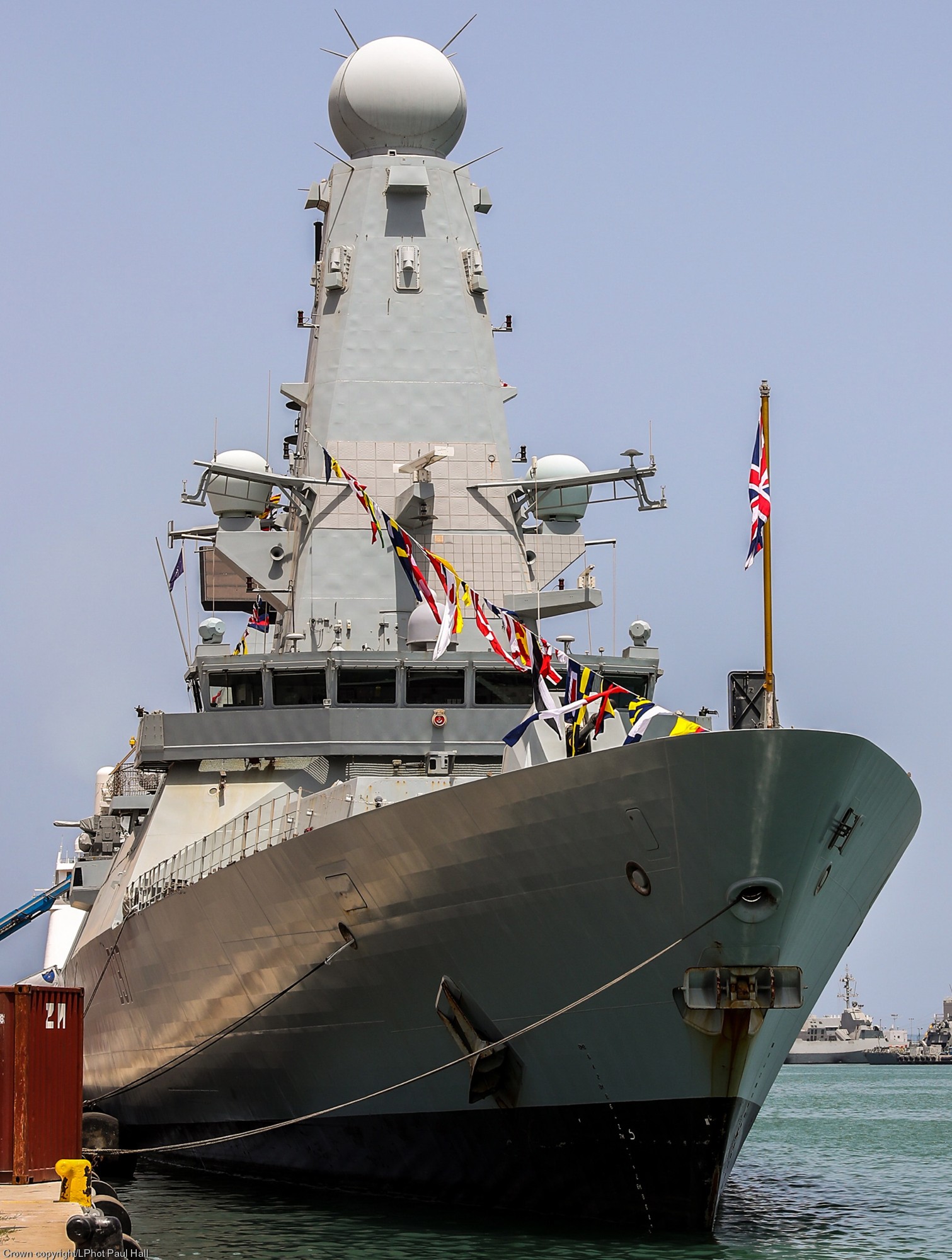 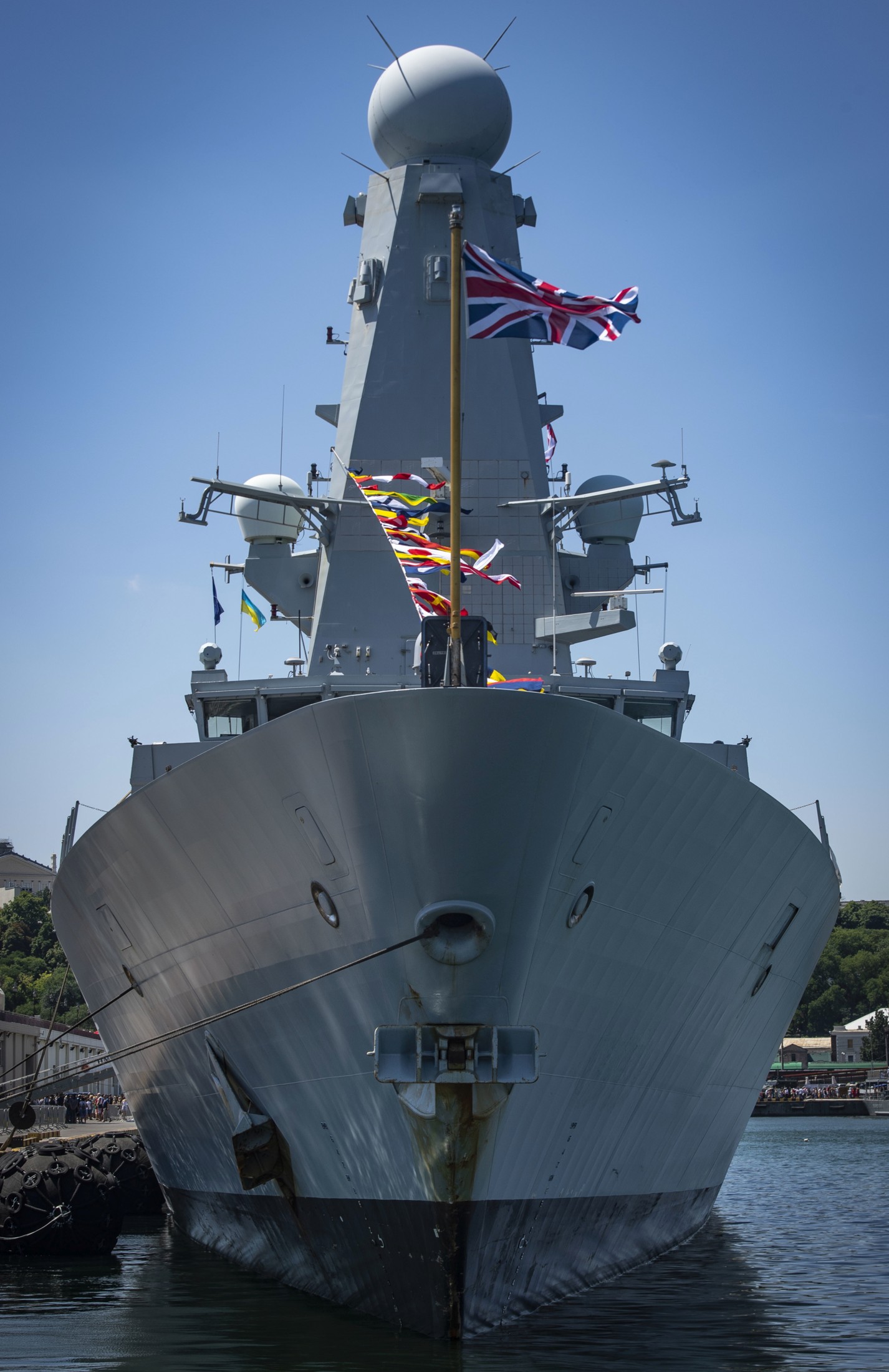 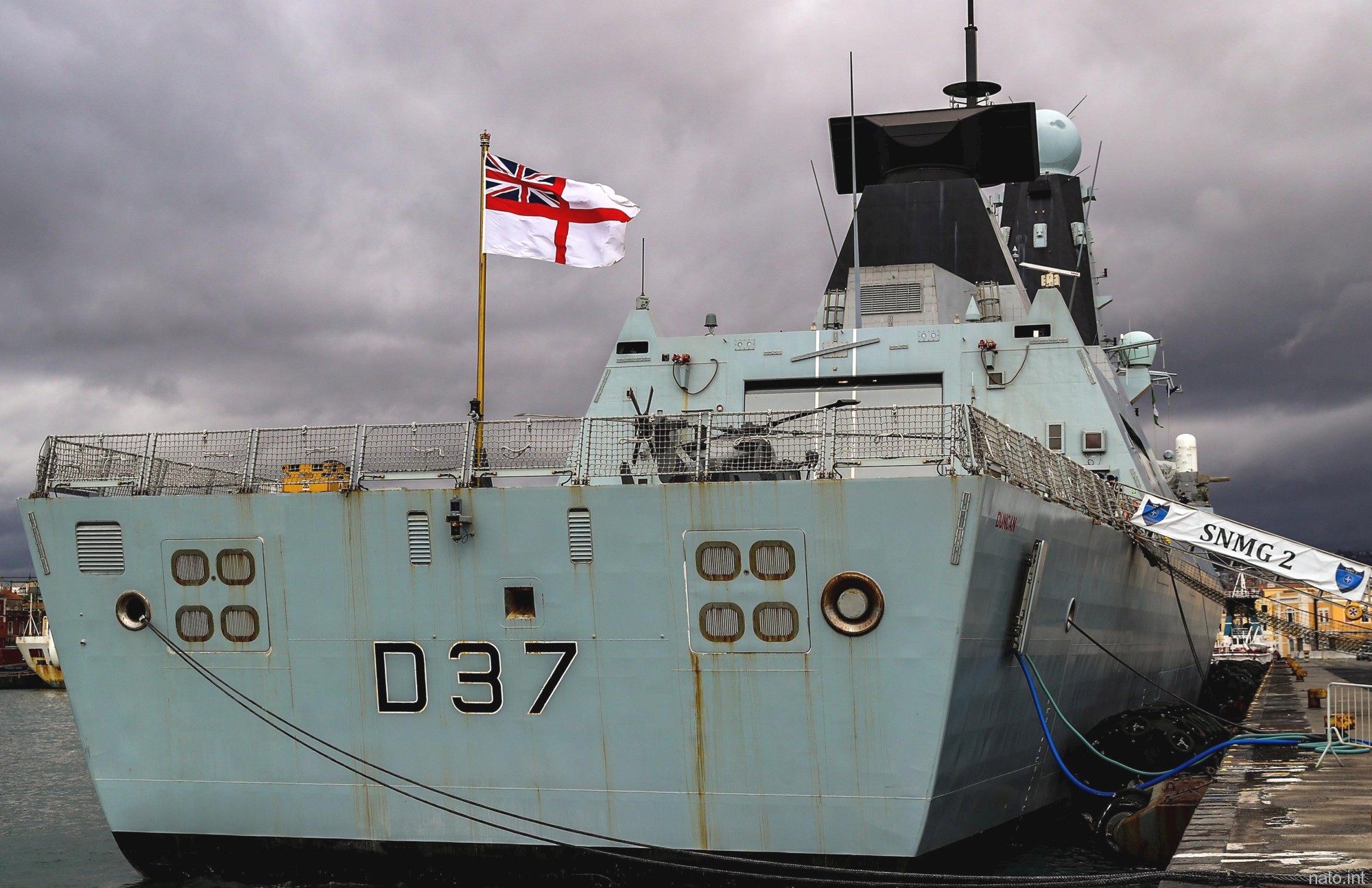  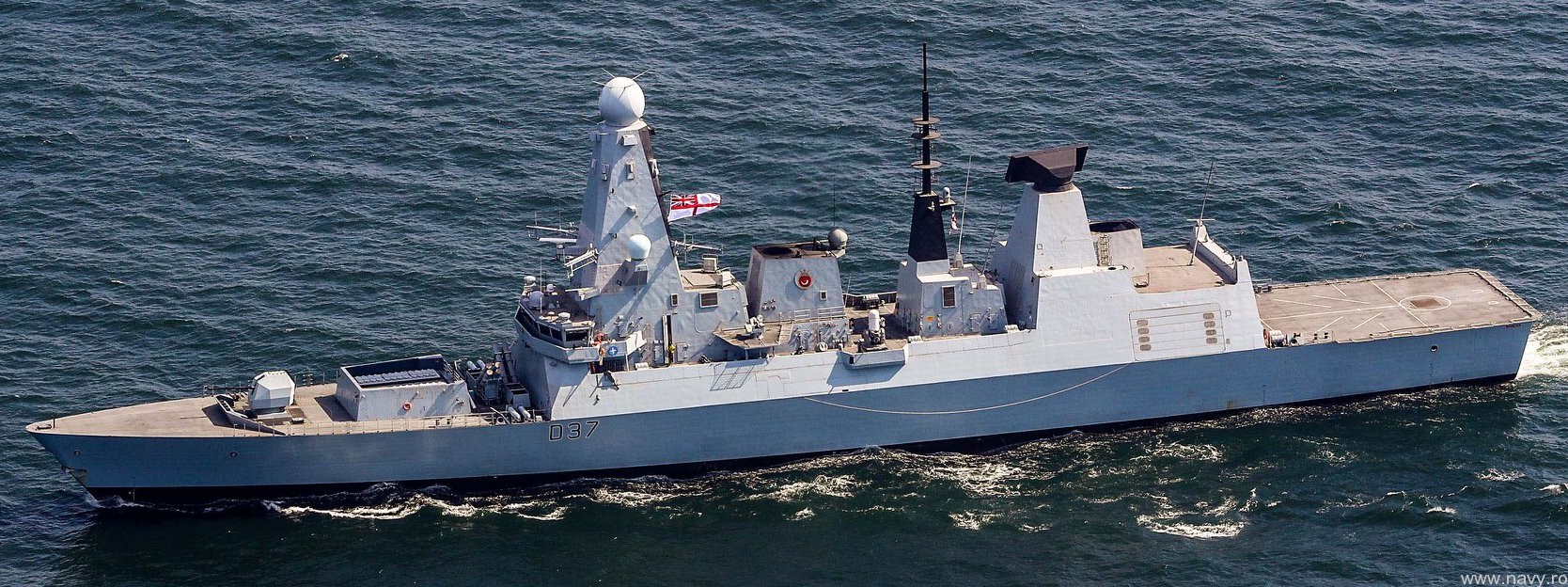 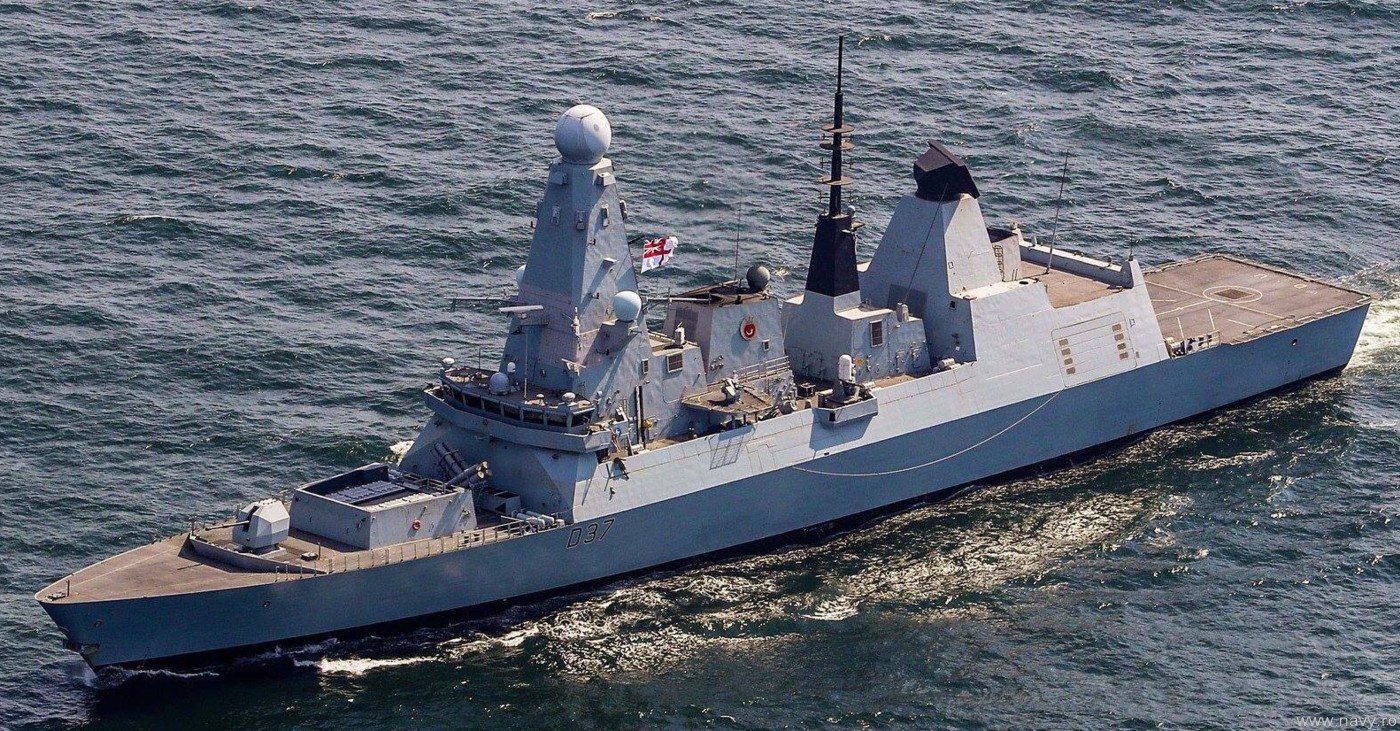 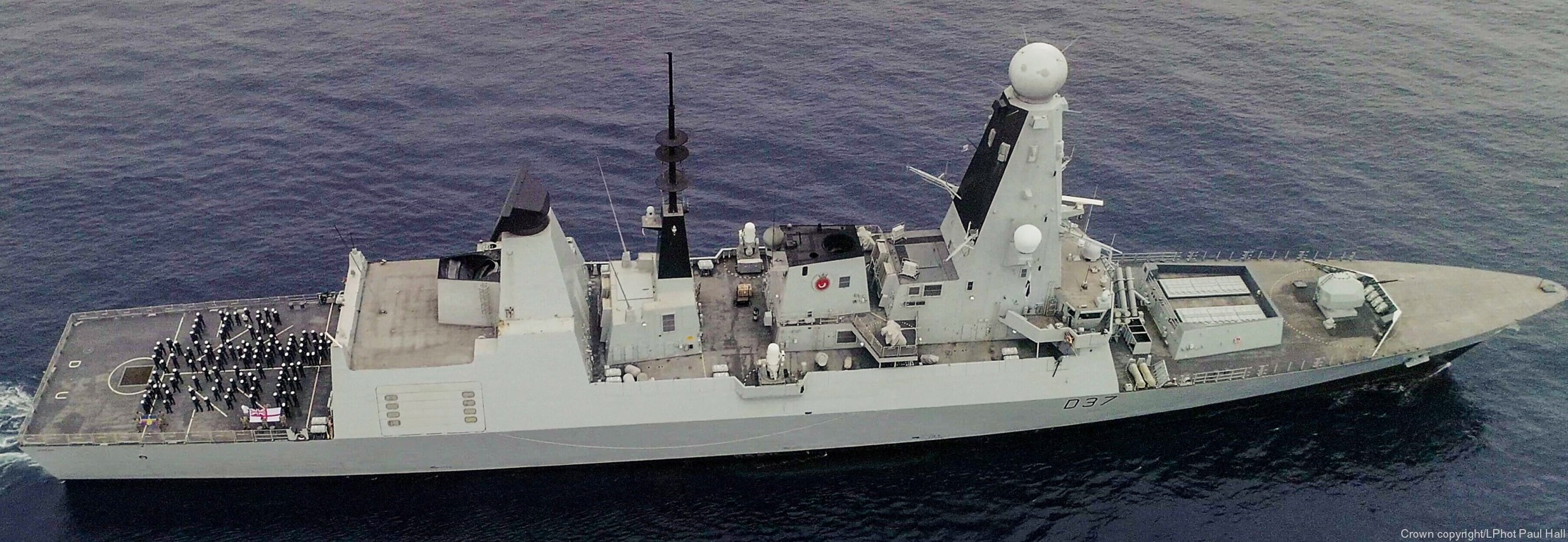 HMS Duncan as part of NATO SNMG-2 during a port visit to Trieste, Italy - April 2018 for more images go to the Special Report 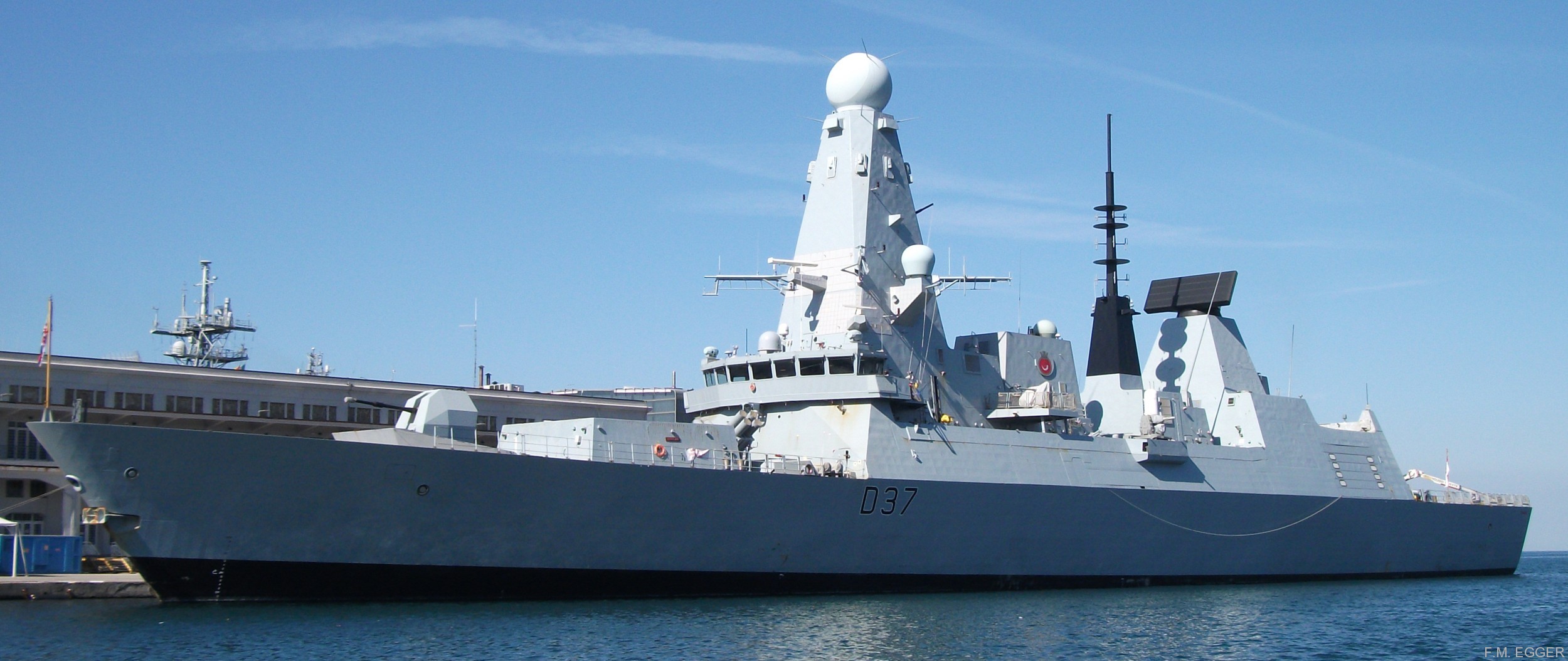 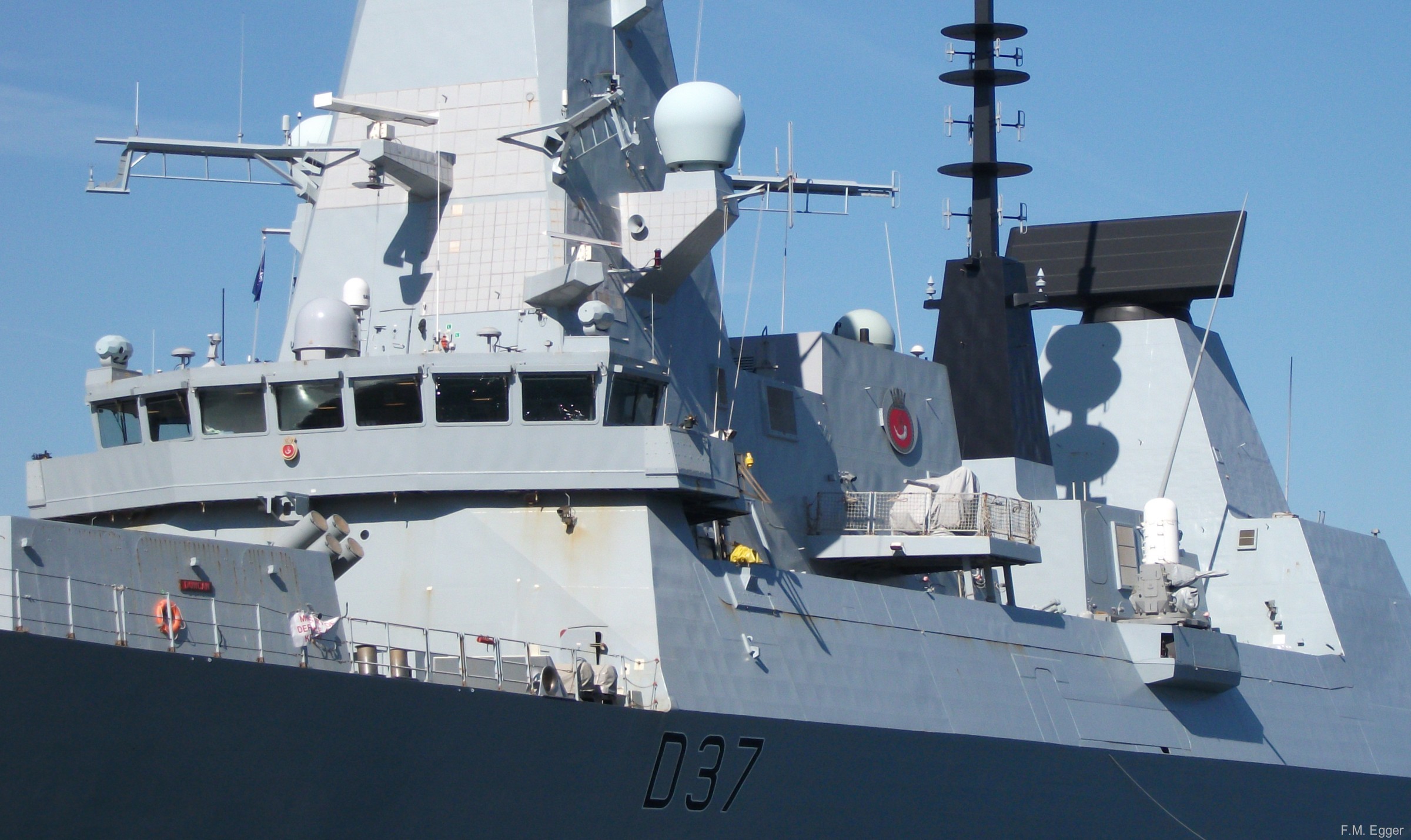 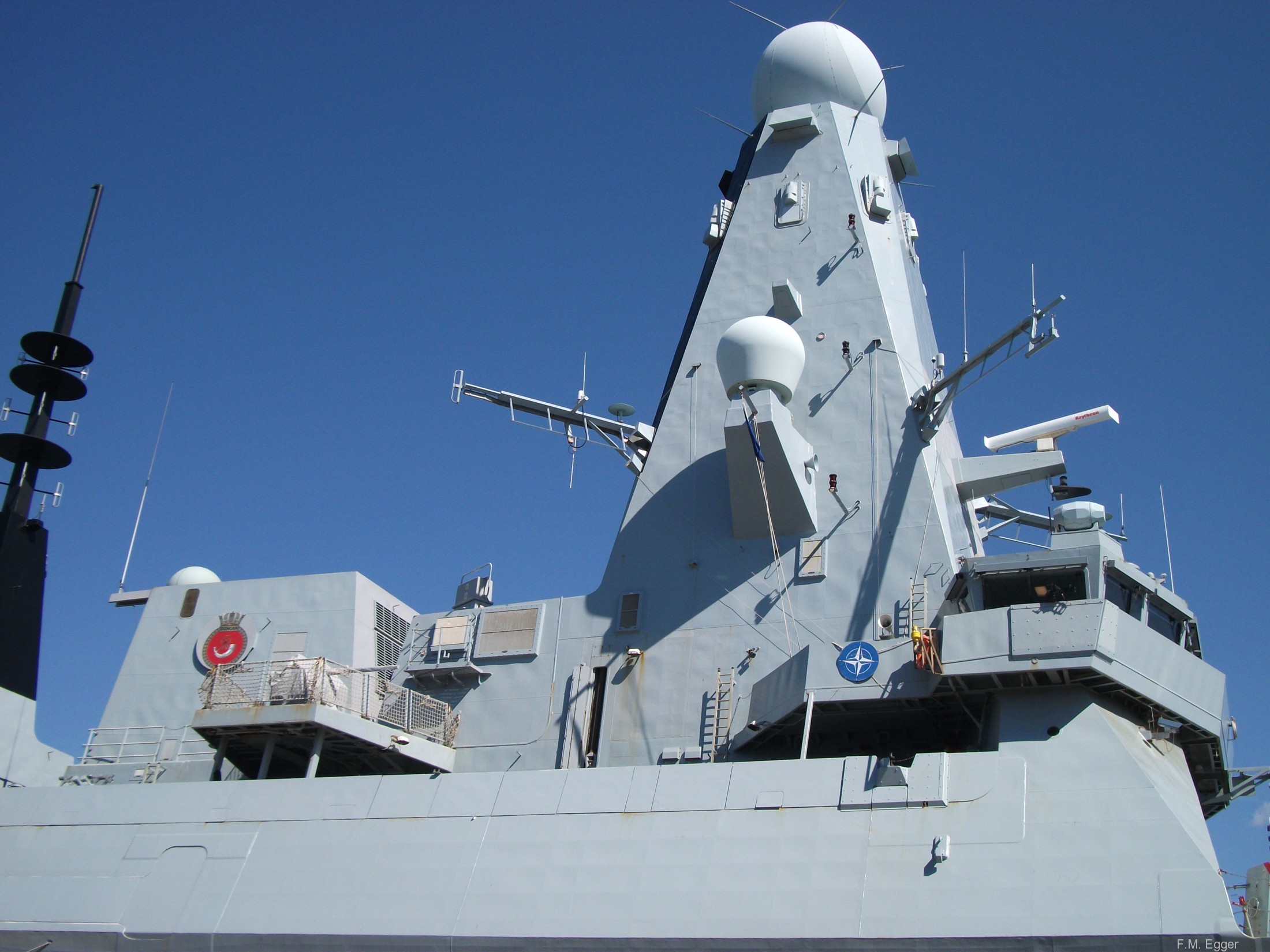 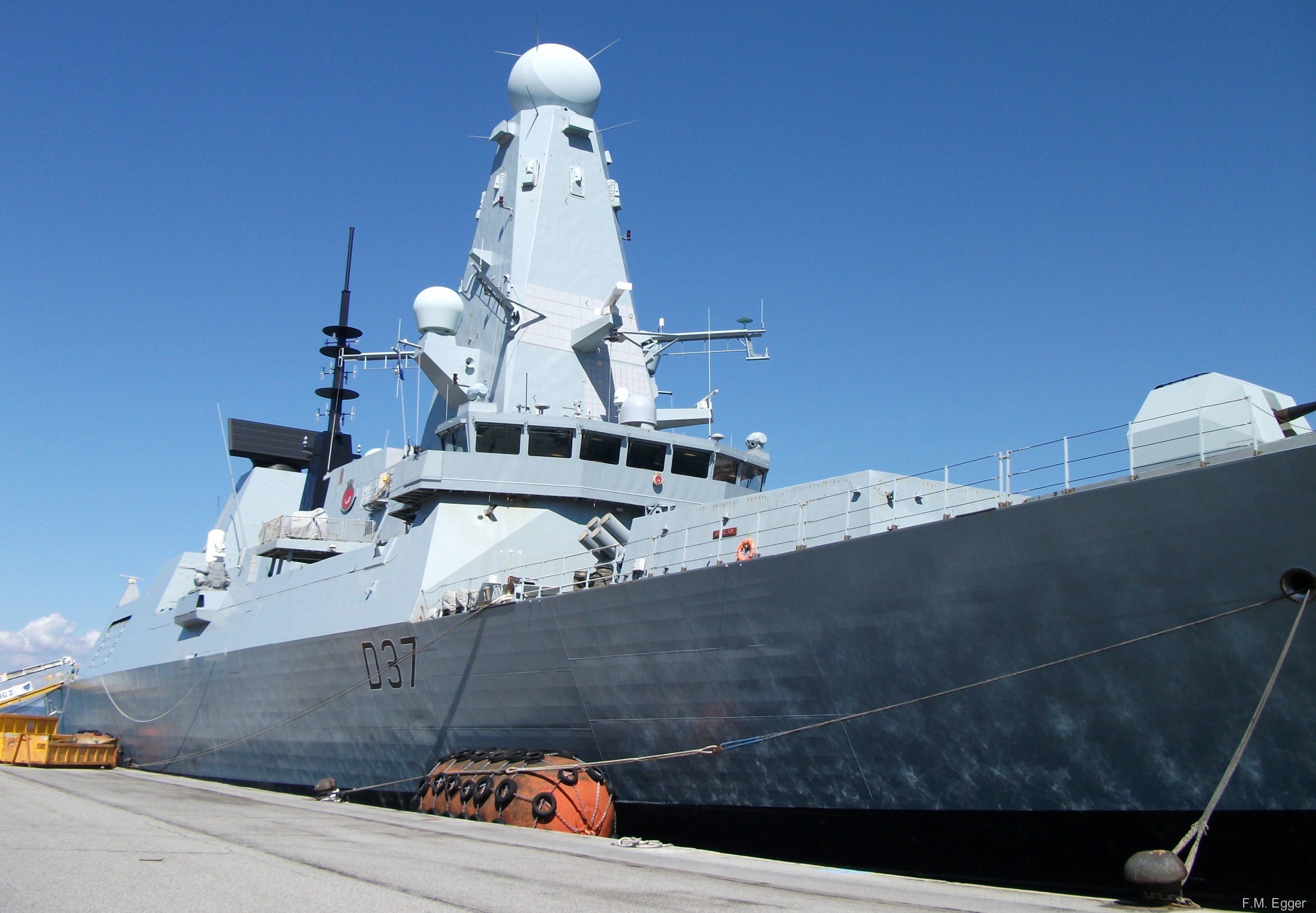 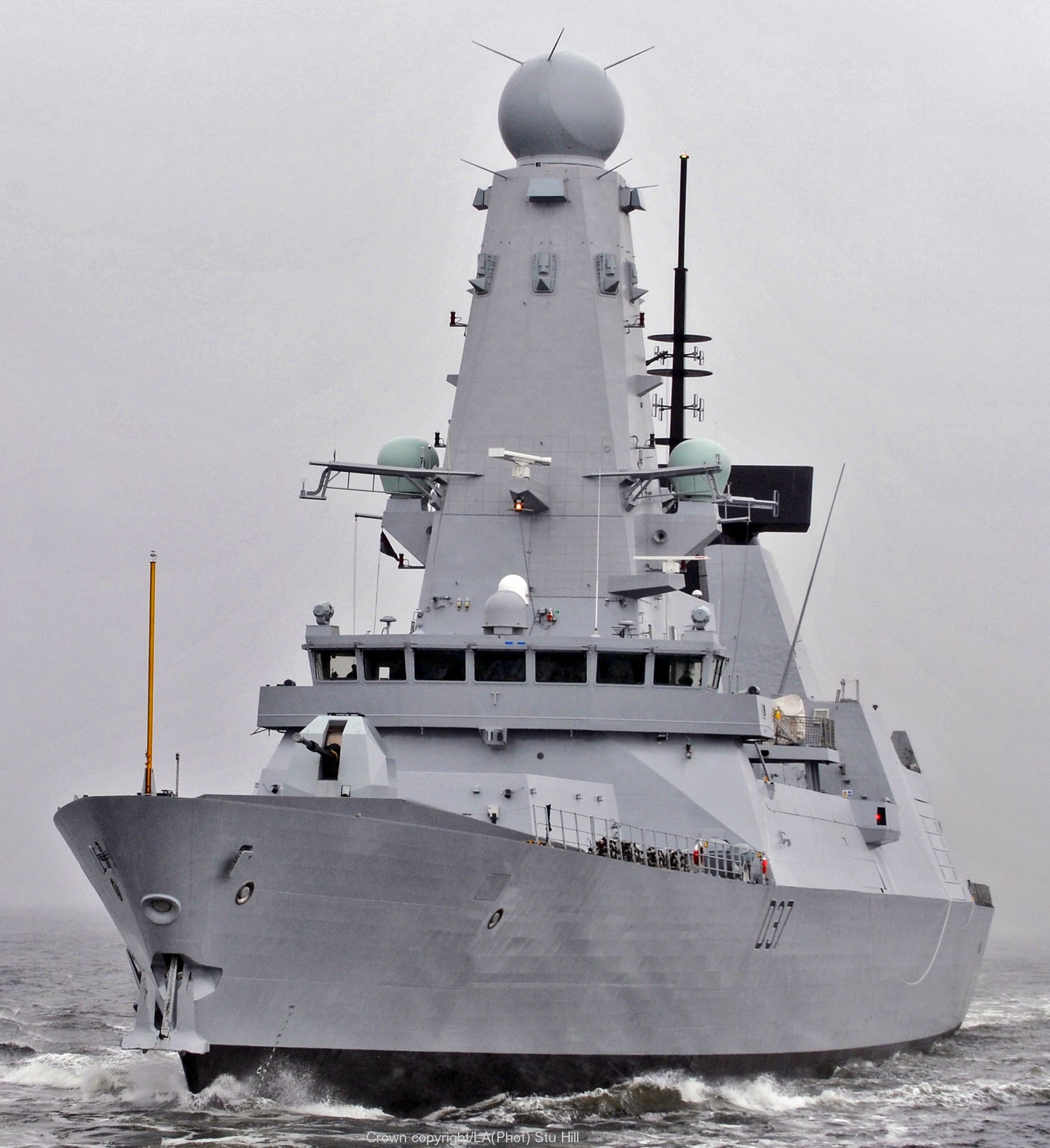 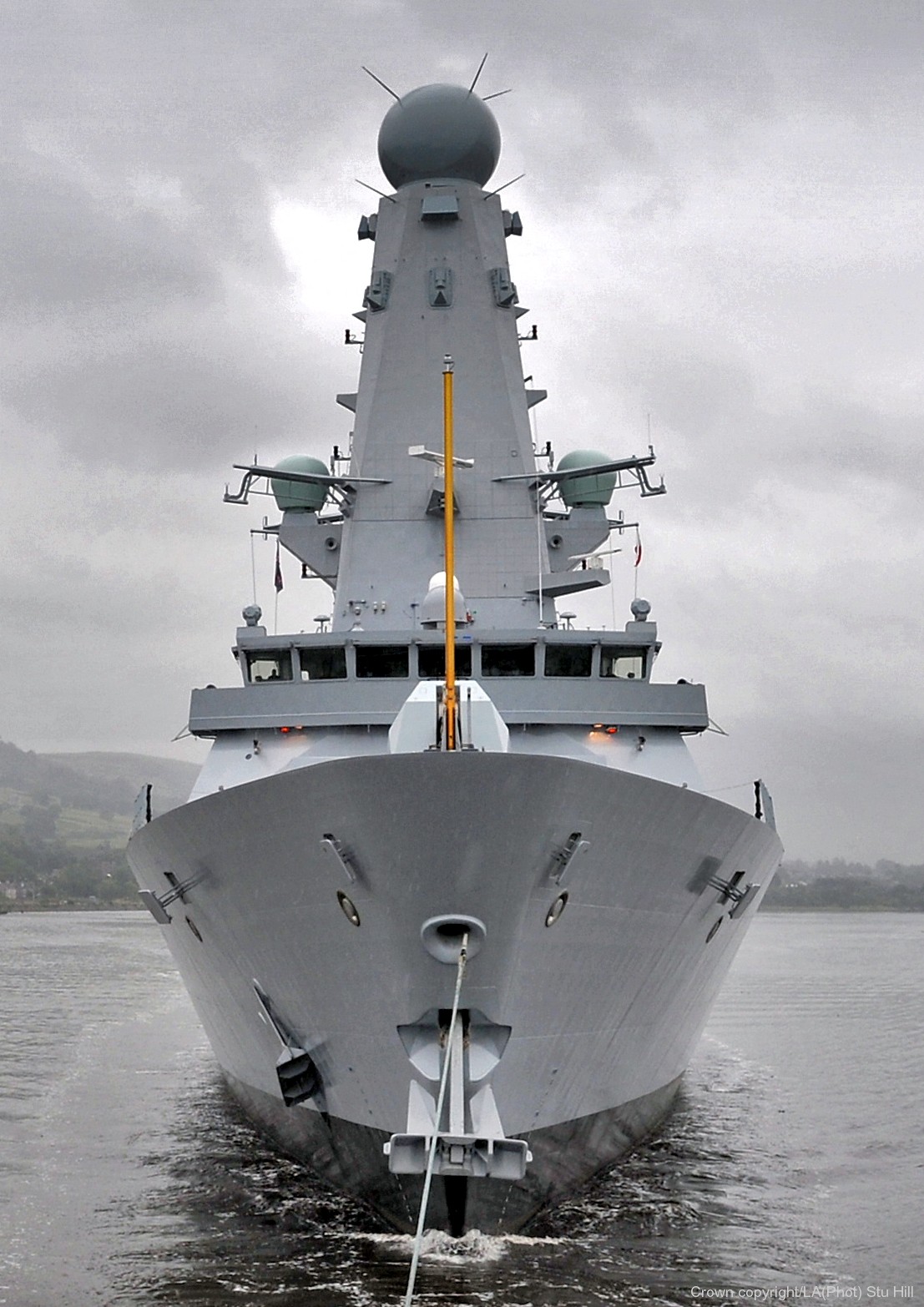 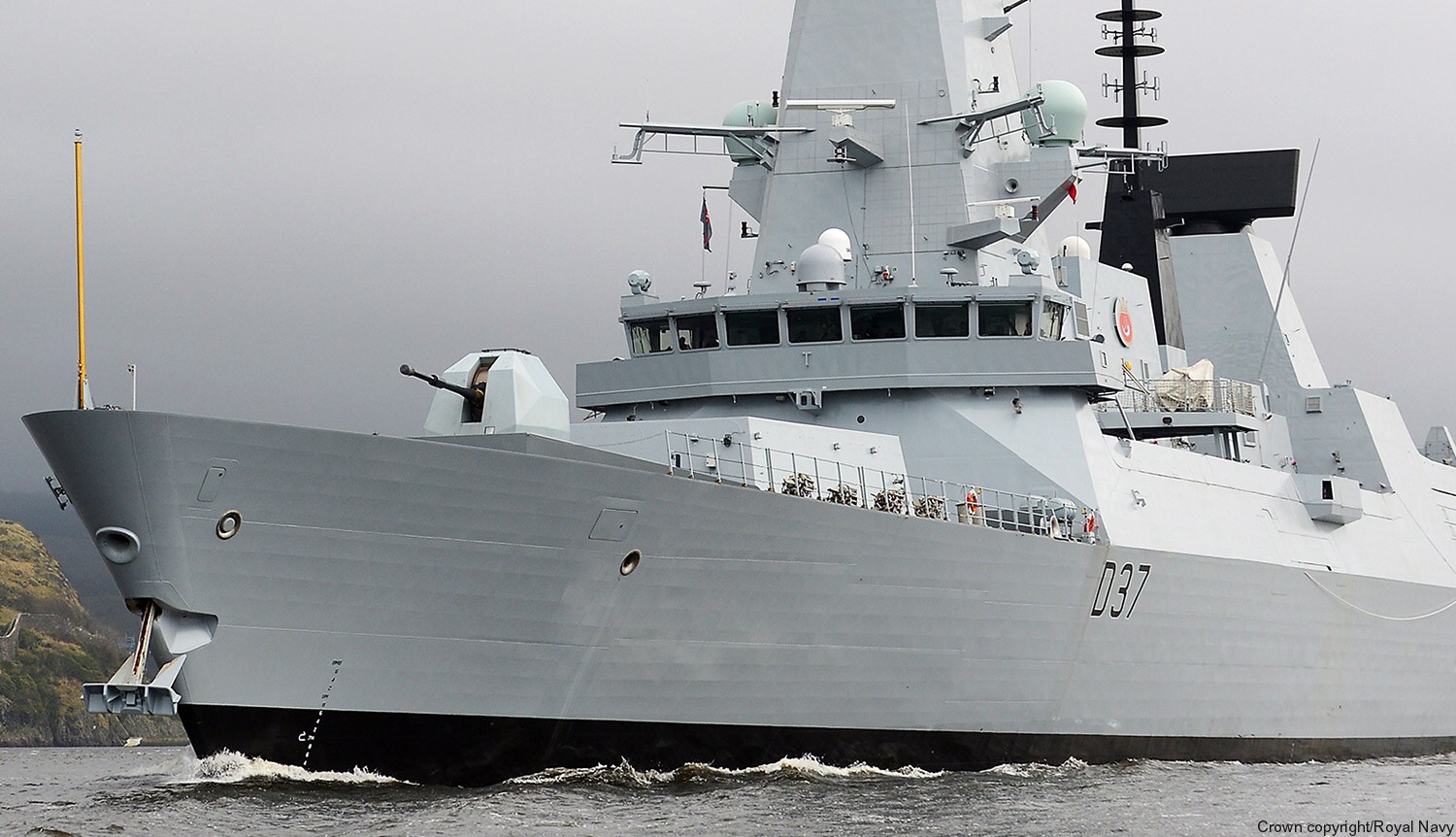 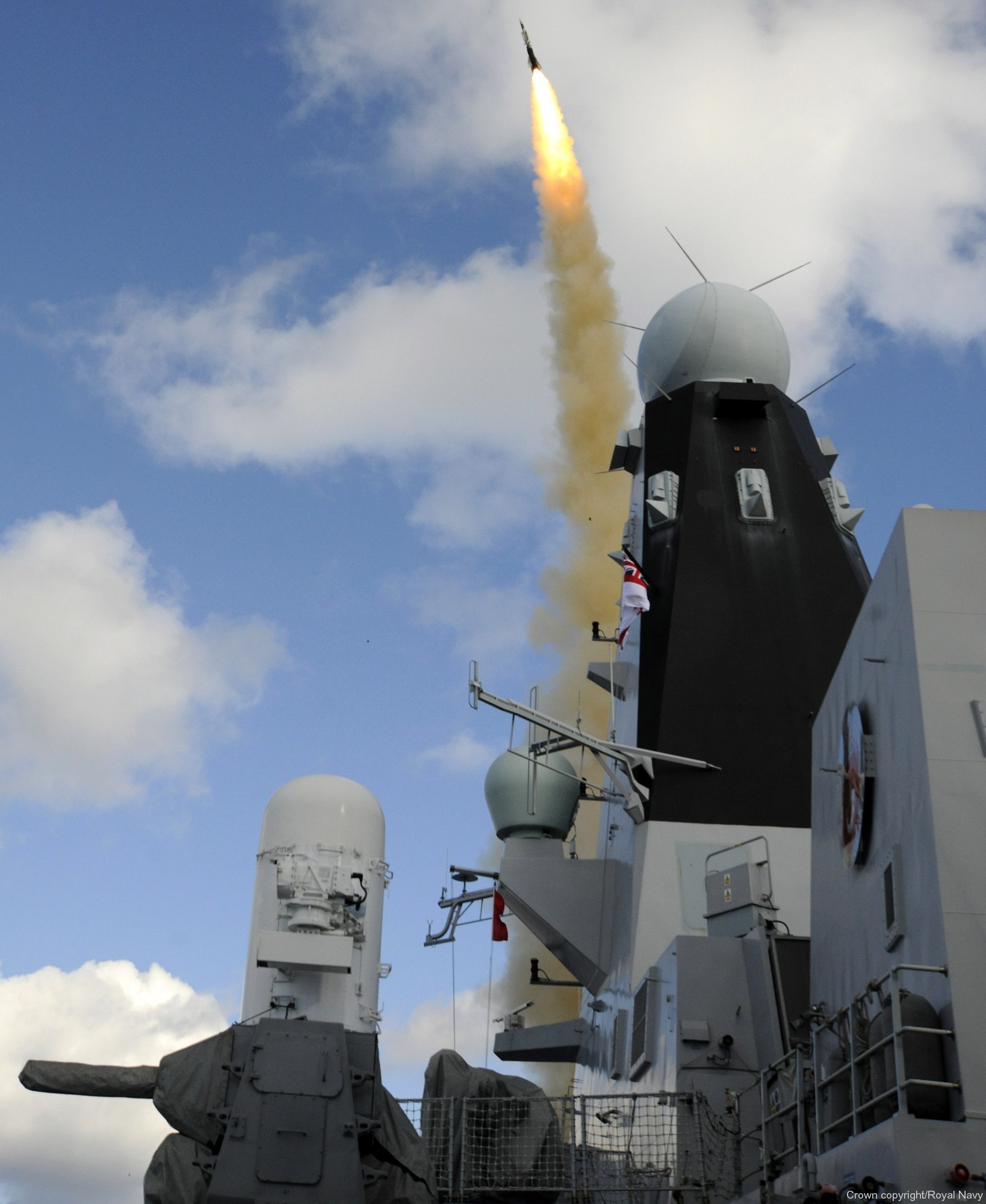 an Aster-30 SAM missile was fired from the 48-cell Sylver A-50 Vertical Launching System / VLS (Sea Viper long-range air defense system) 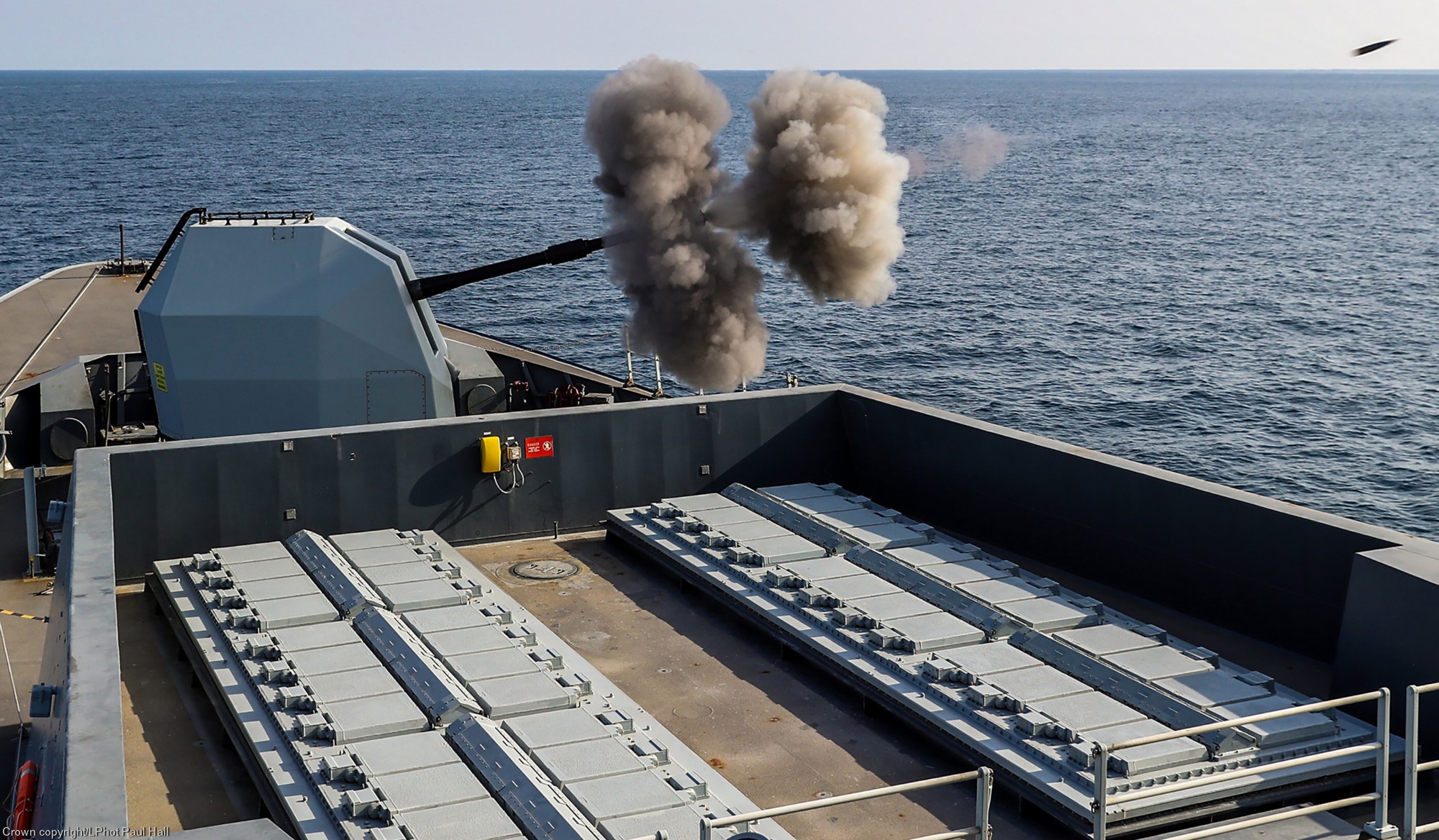 Mark 8 Mod.1 gun fire 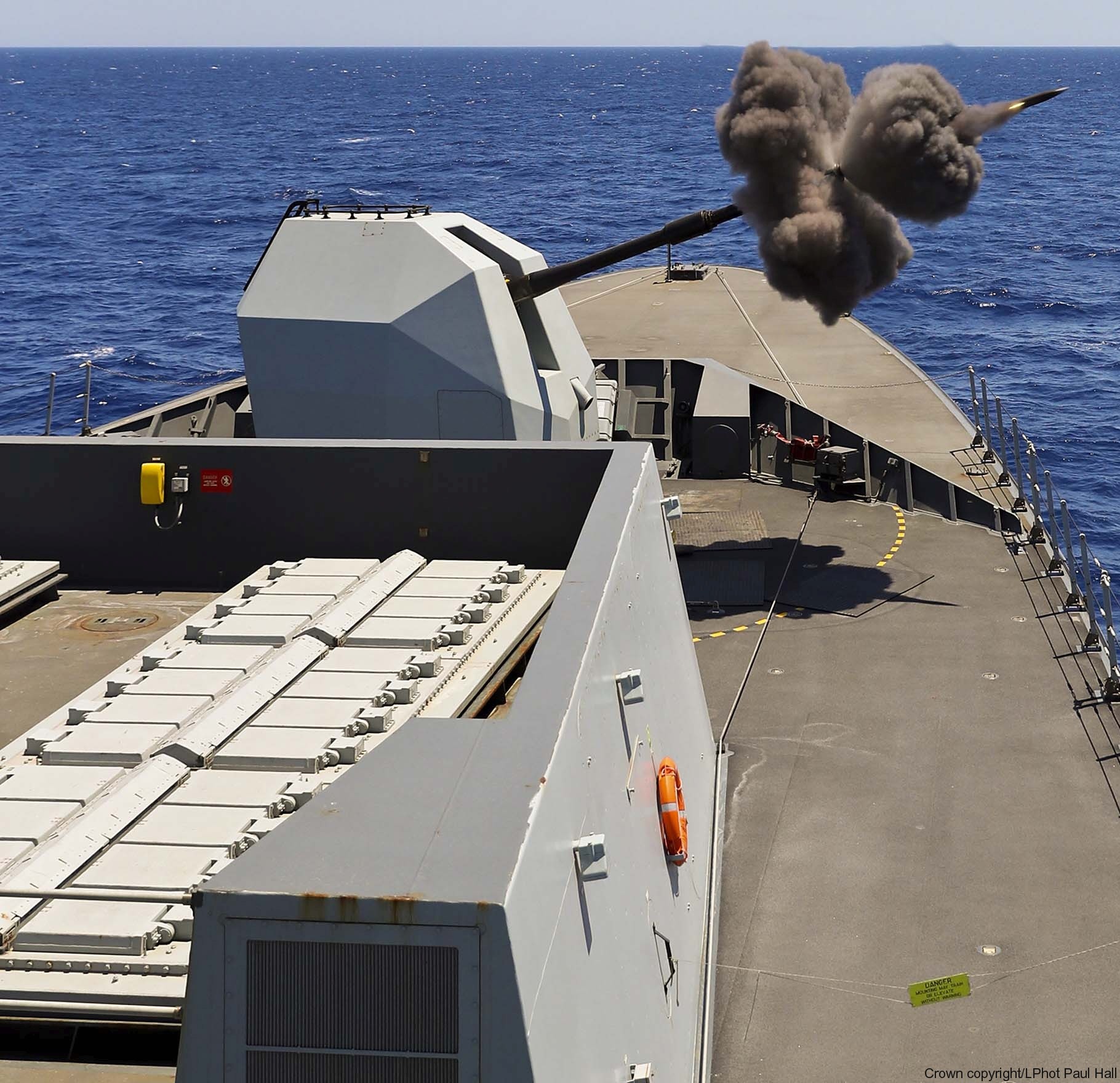 Mark 8 Mod.1 gun fire 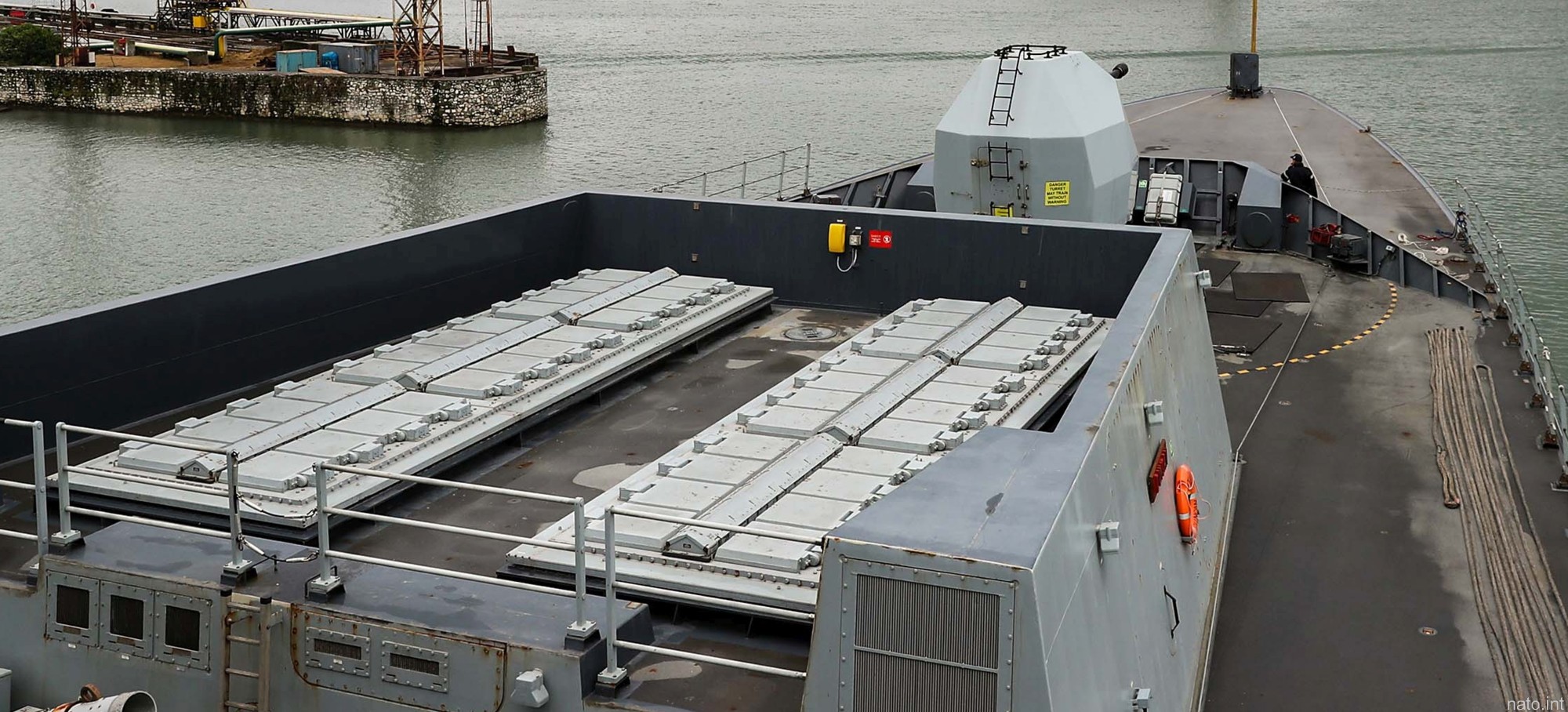 48-cell Sylver A-50 Vertical Launching System (VLS) for MBDA Aster-15 and Aster-30 SAM Missiles (Sea Viper long-range air defense system) 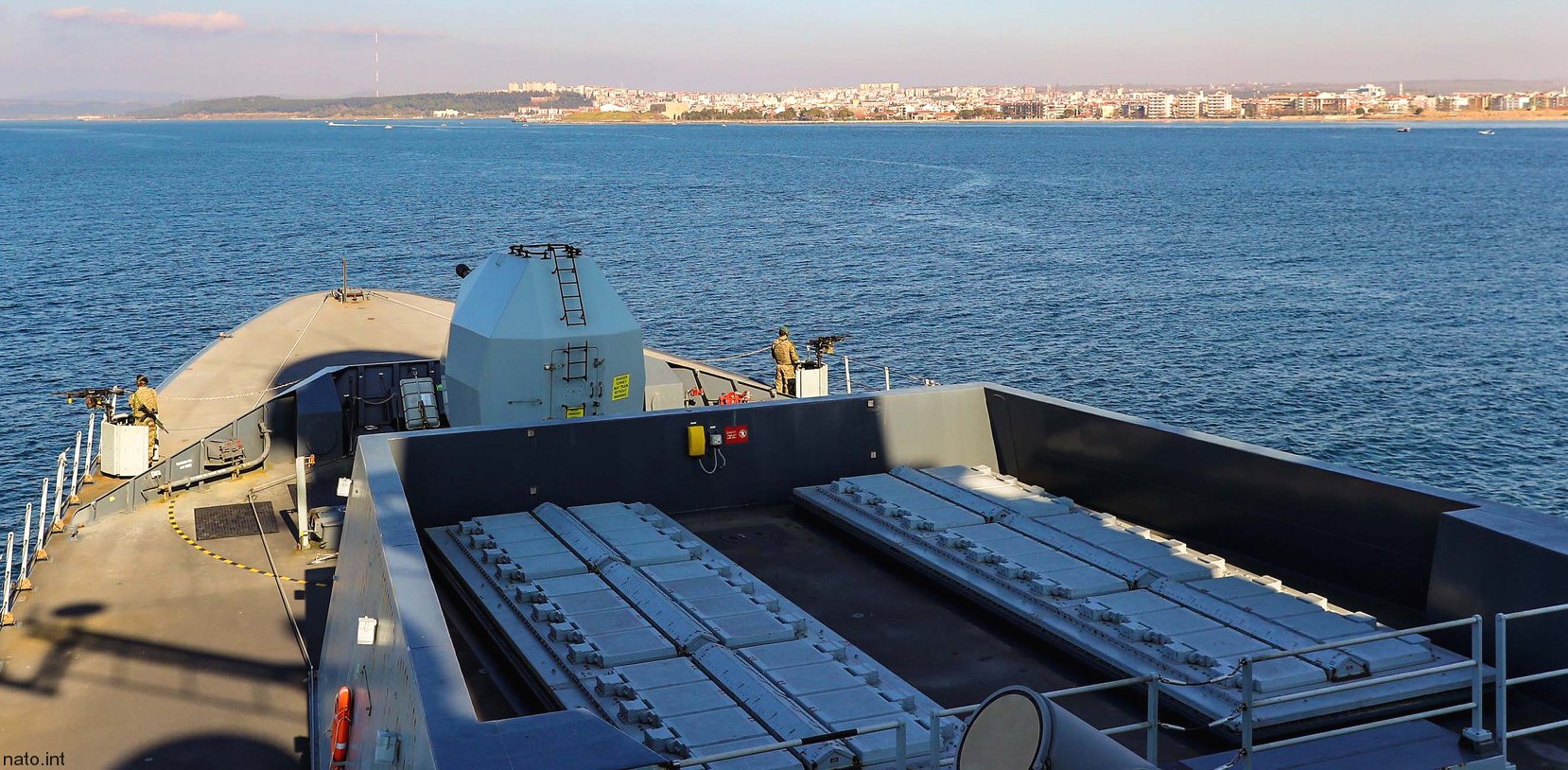 48-cell Sylver A-50 Vertical Launching System (VLS) for MBDA Aster-15 and Aster-30 SAM Missiles (Sea Viper long-range air defense system) 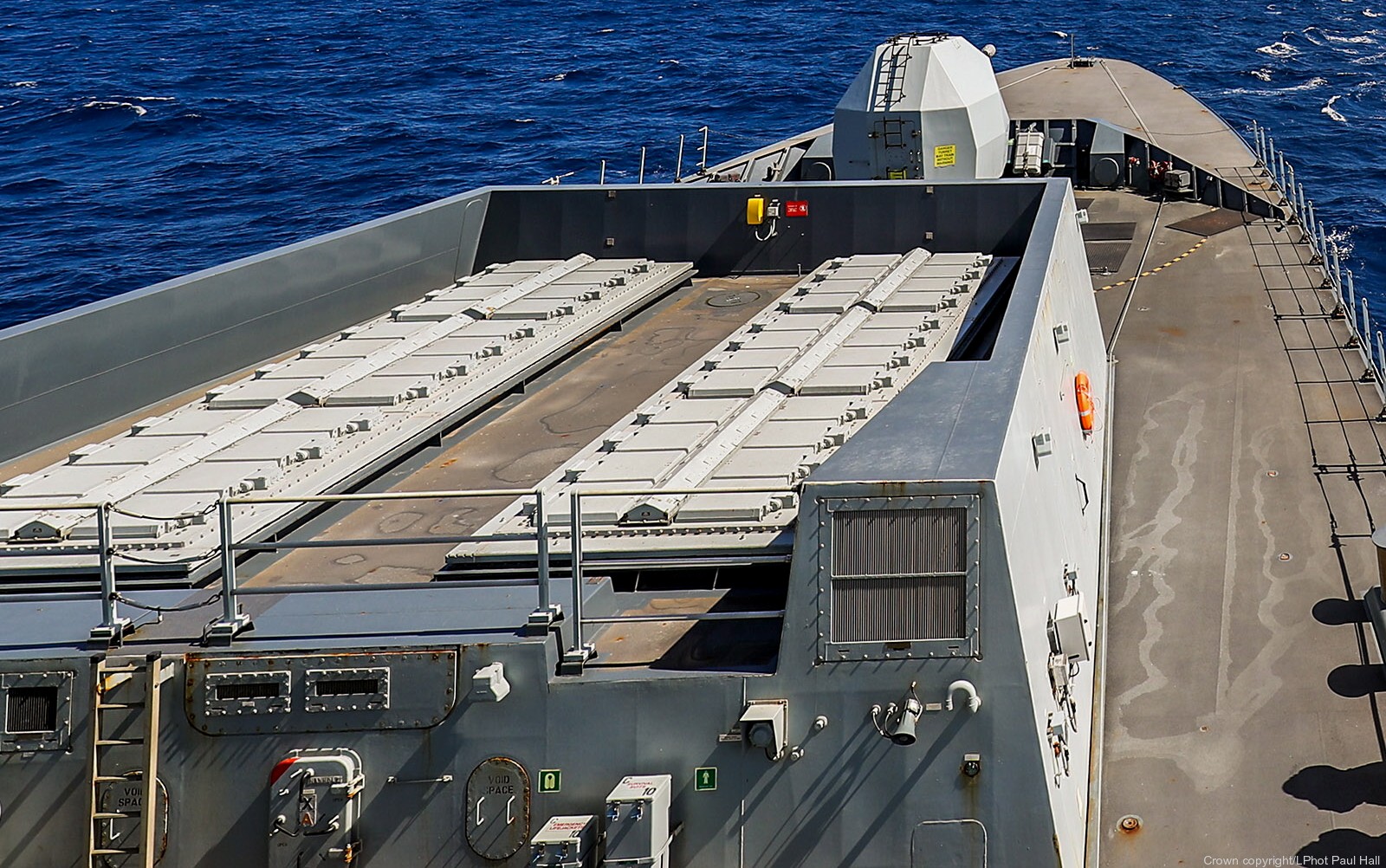 48-cell Sylver A-50 Vertical Launching System (VLS) for MBDA Aster-15 and Aster-30 SAM Missiles (Sea Viper long-range air defense system) 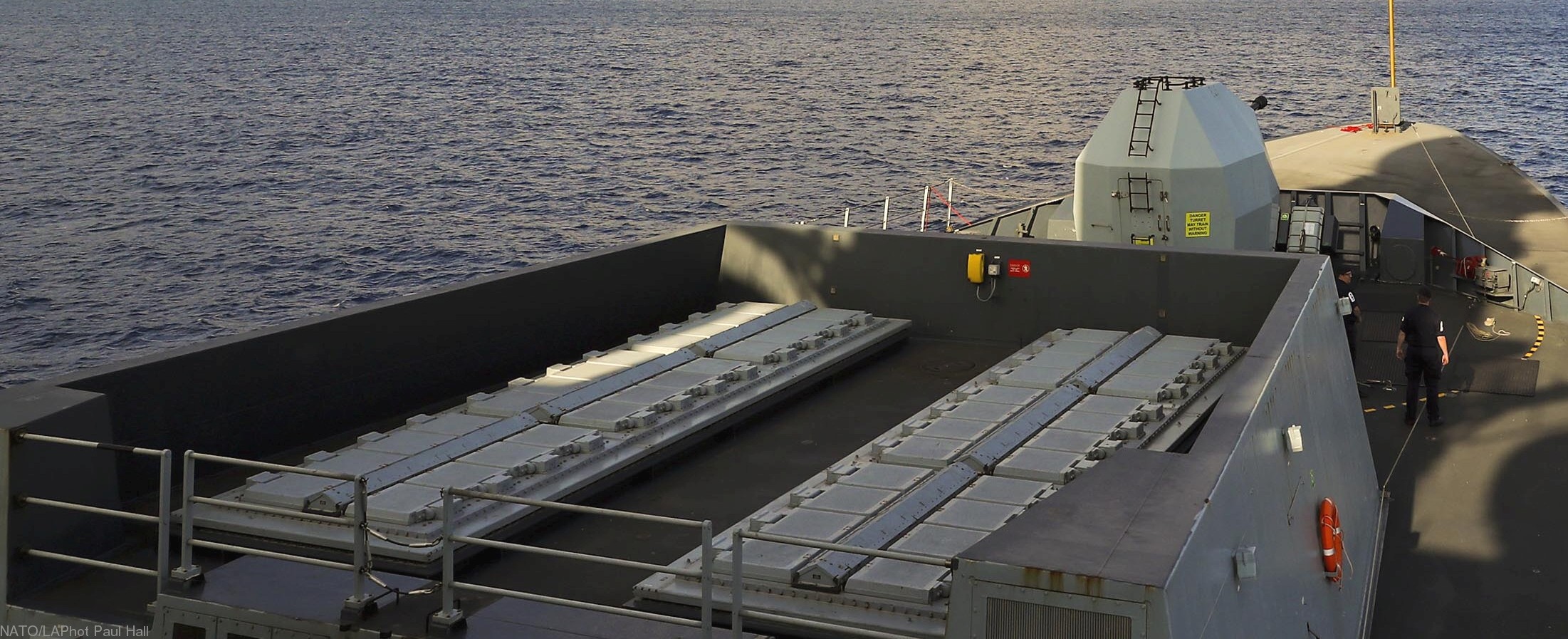 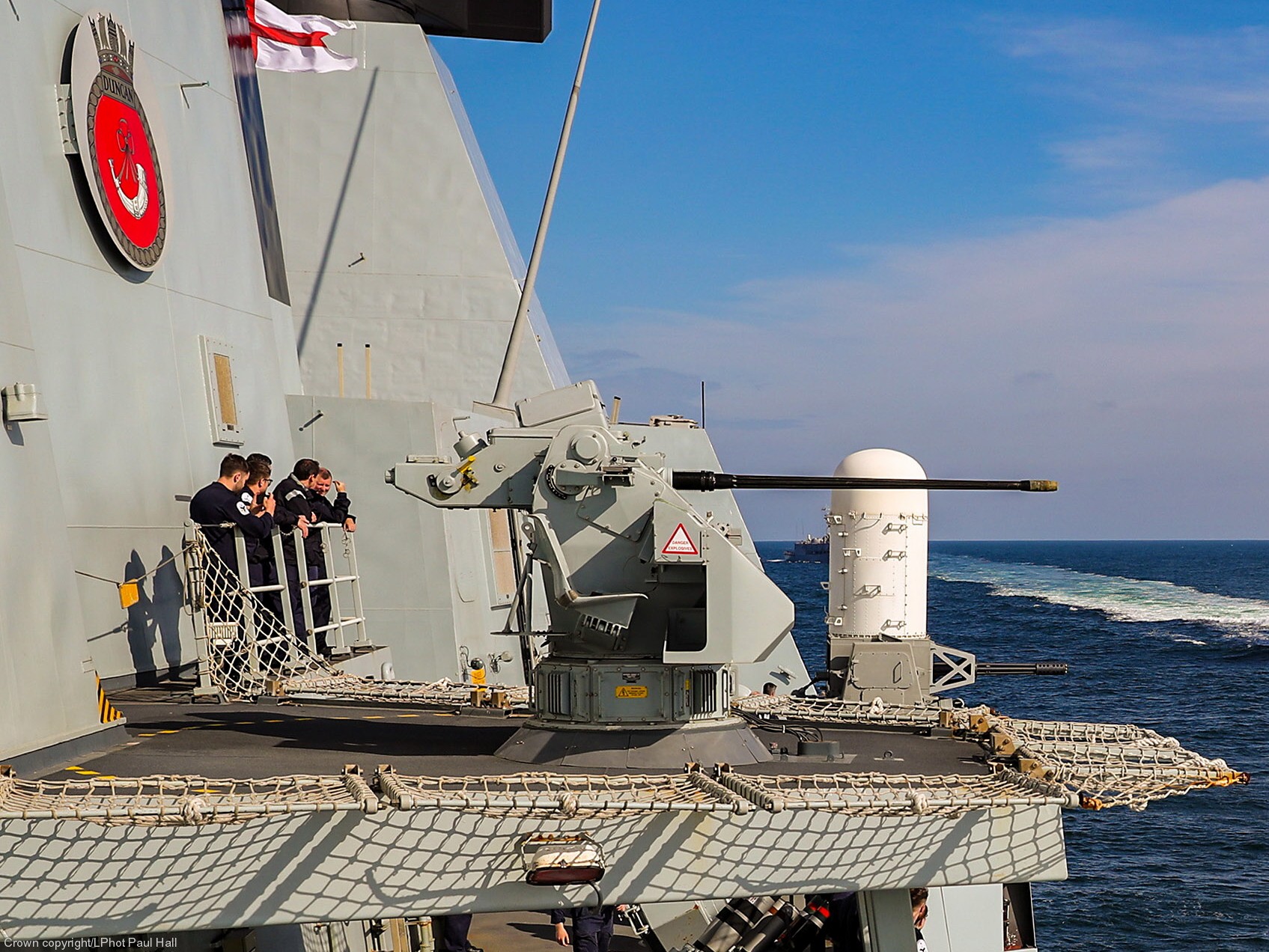 DS30B Mark 1 30mm rapid fire cannon 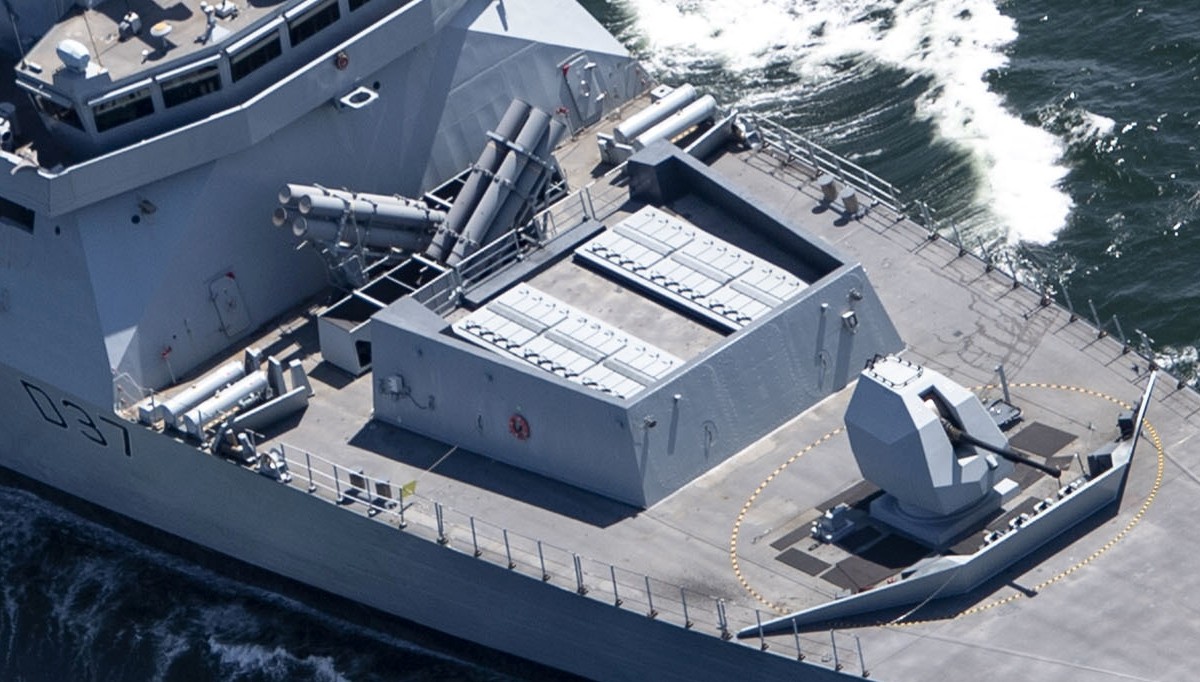 armament arrangement: tube launcher (2x4) for RGM-84 Harpoon SSM - Sea Viper (Sylver A-50) vertical launching system / VLS (48 cells) for Aster-15 and Aster-30 SAM - Mark 8 gun 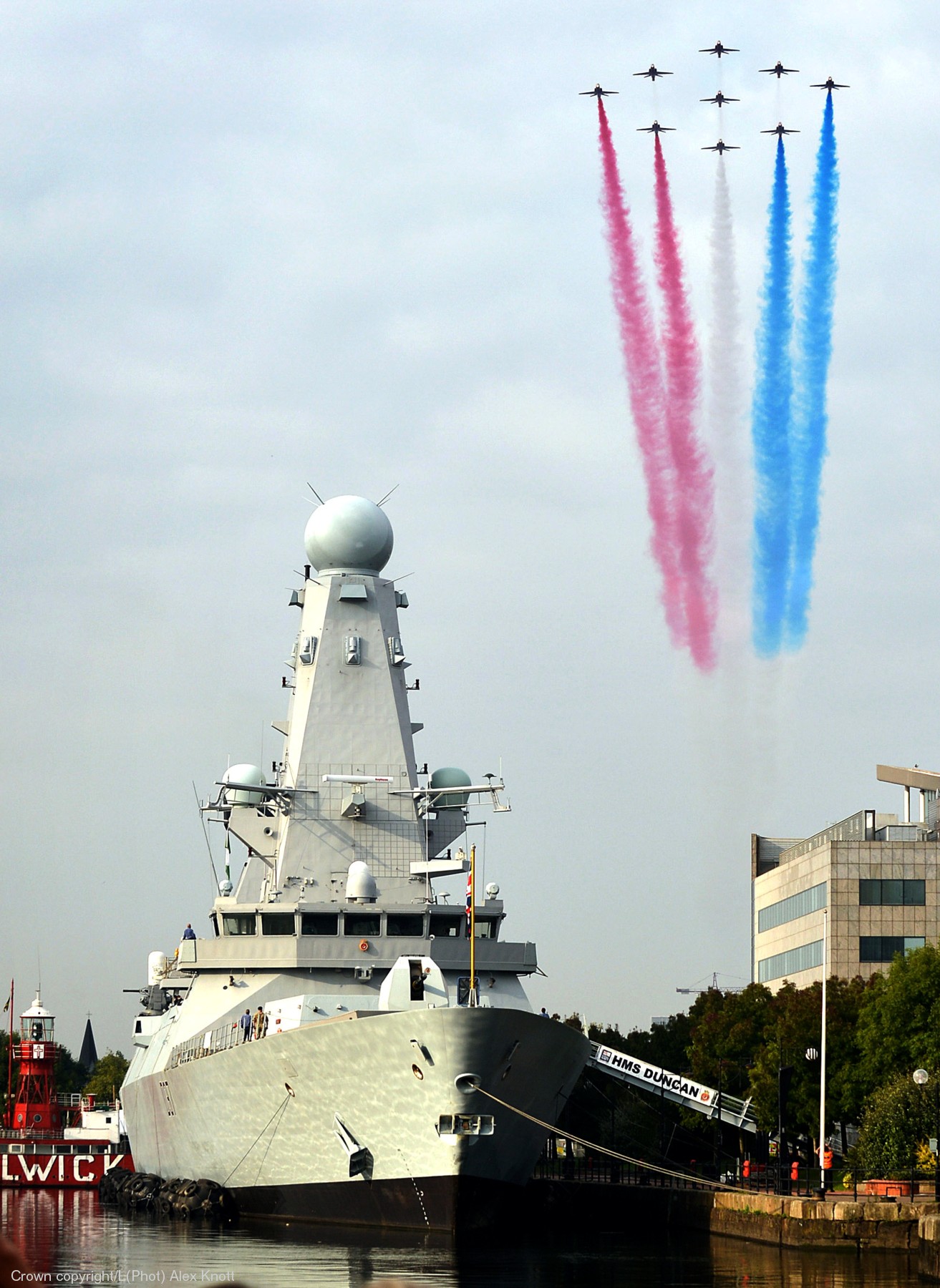 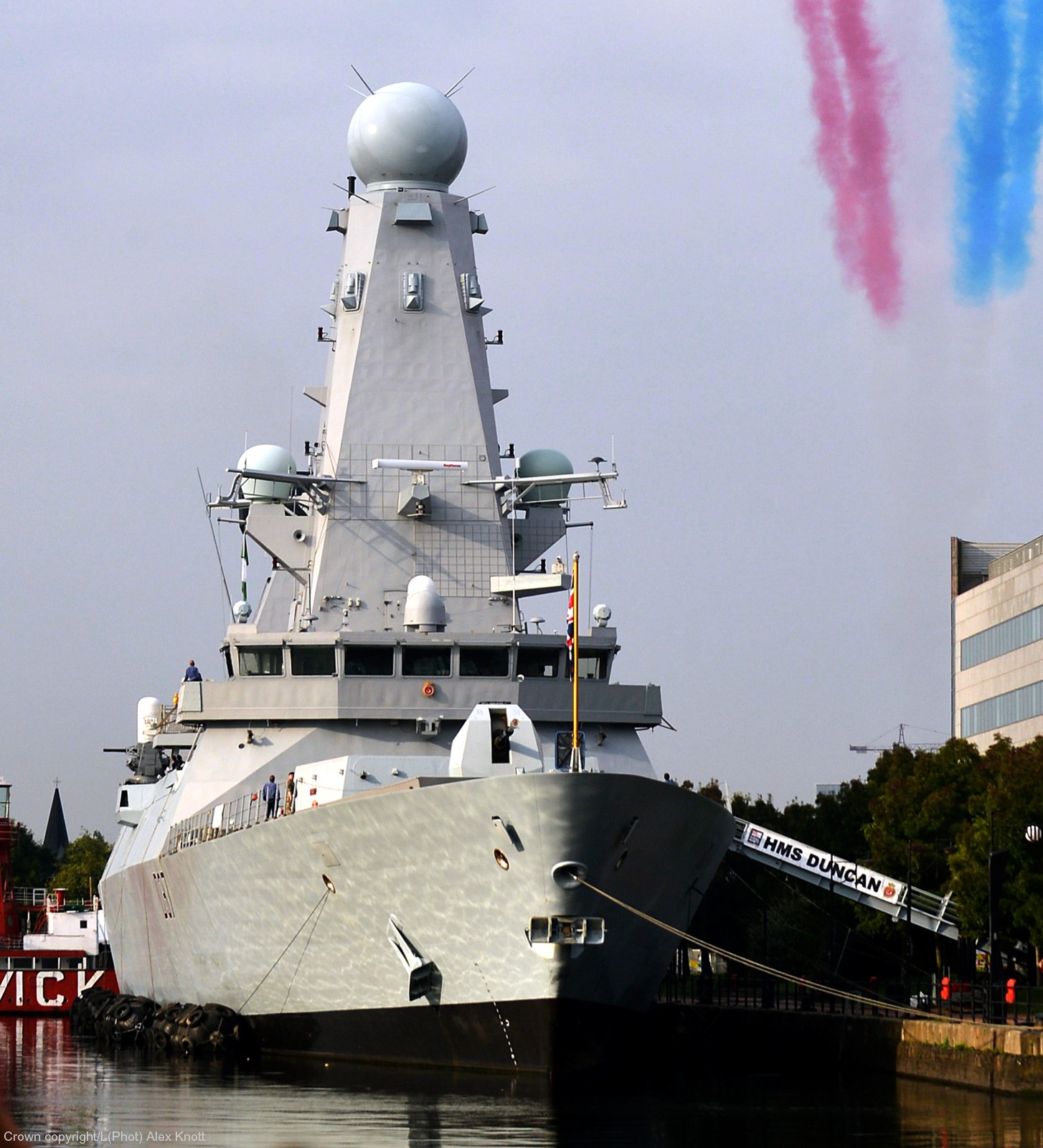 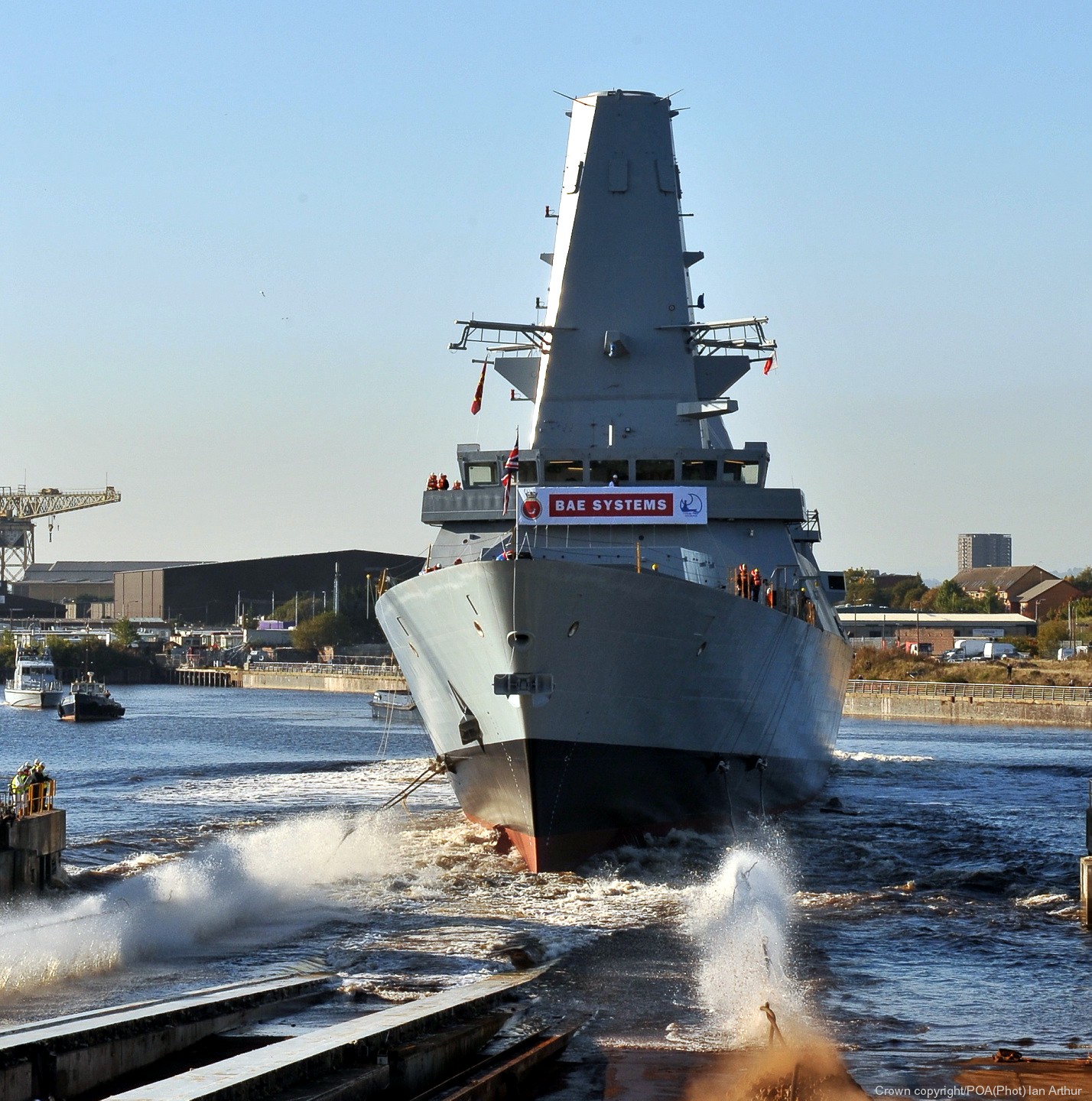 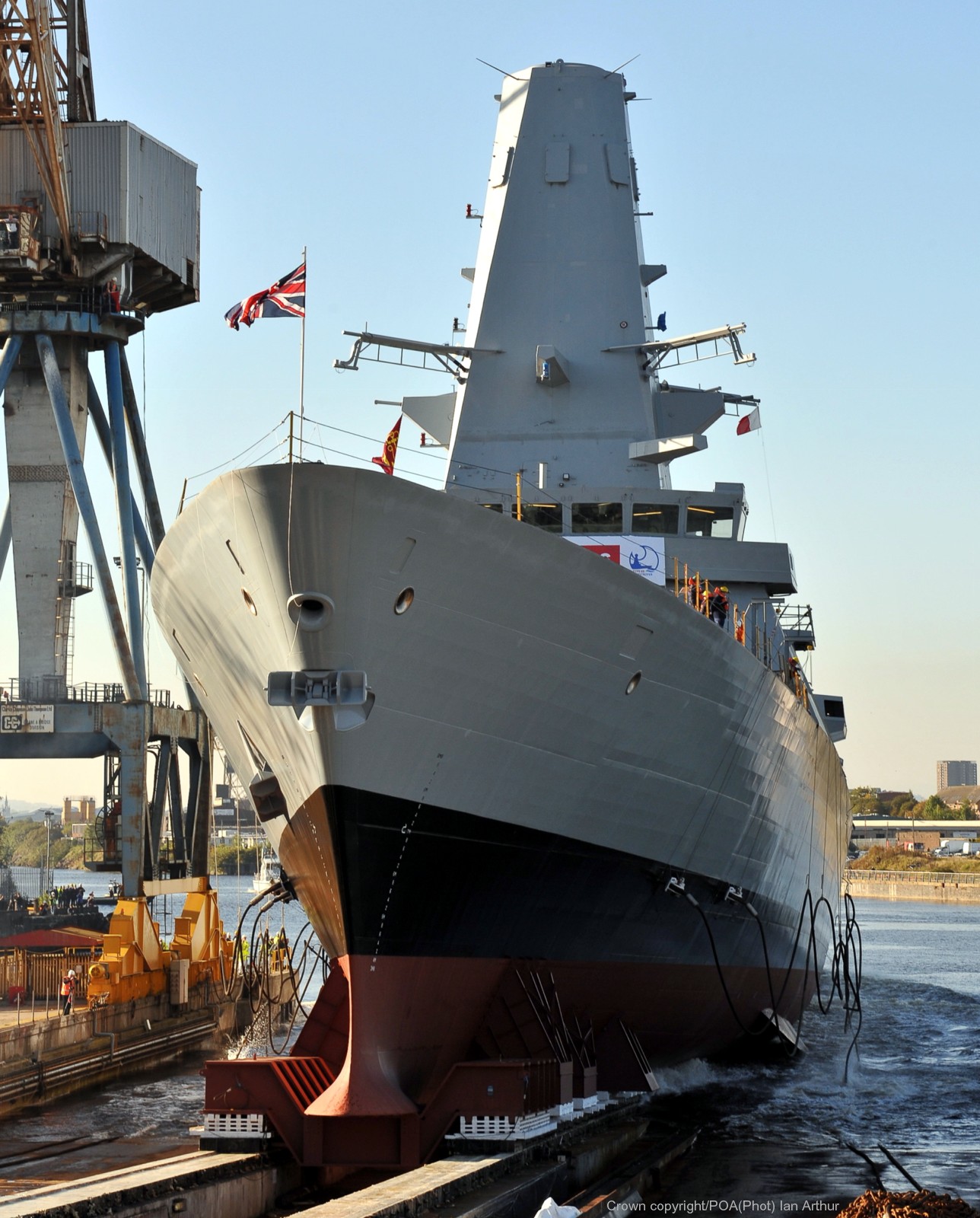 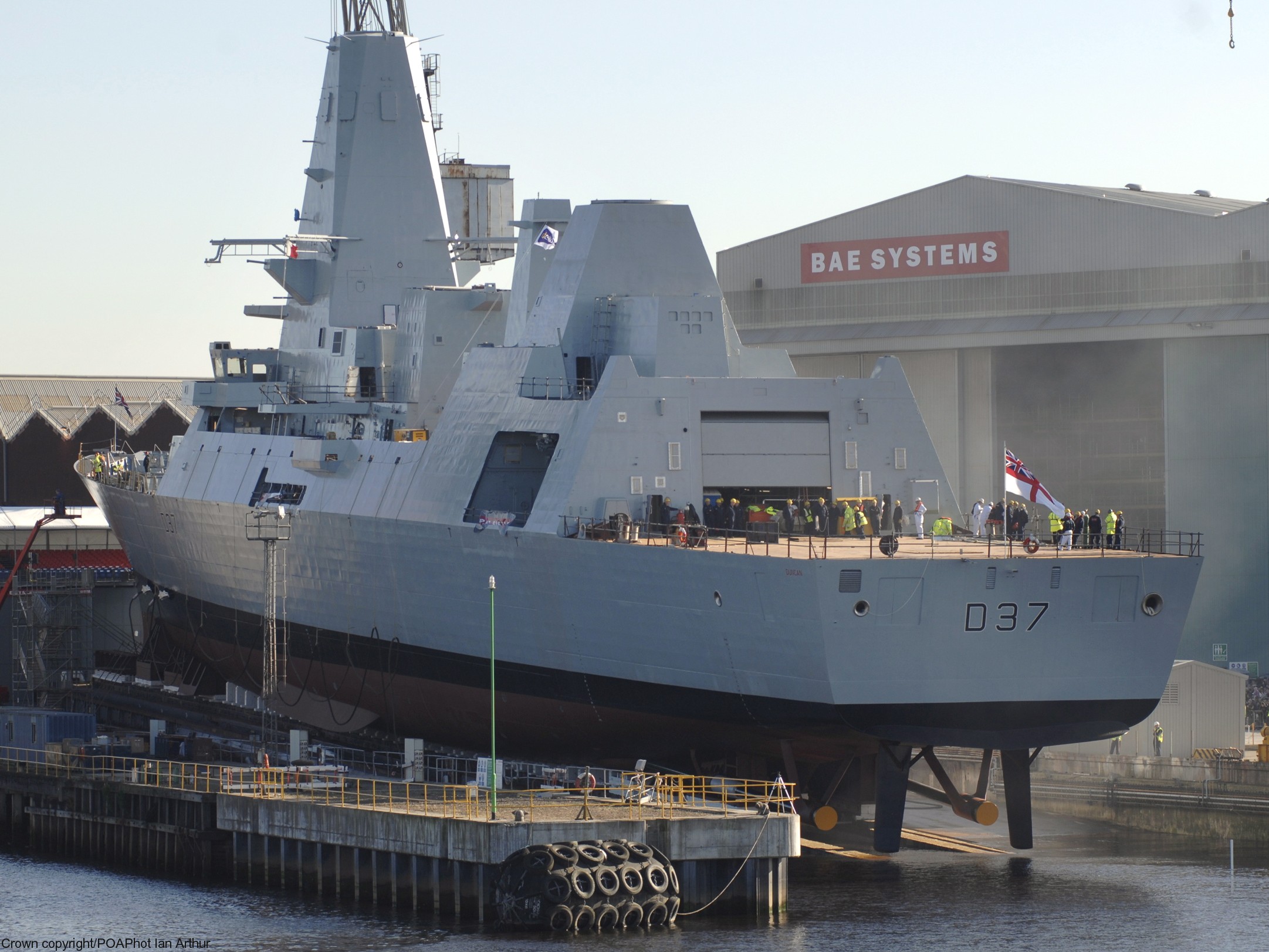 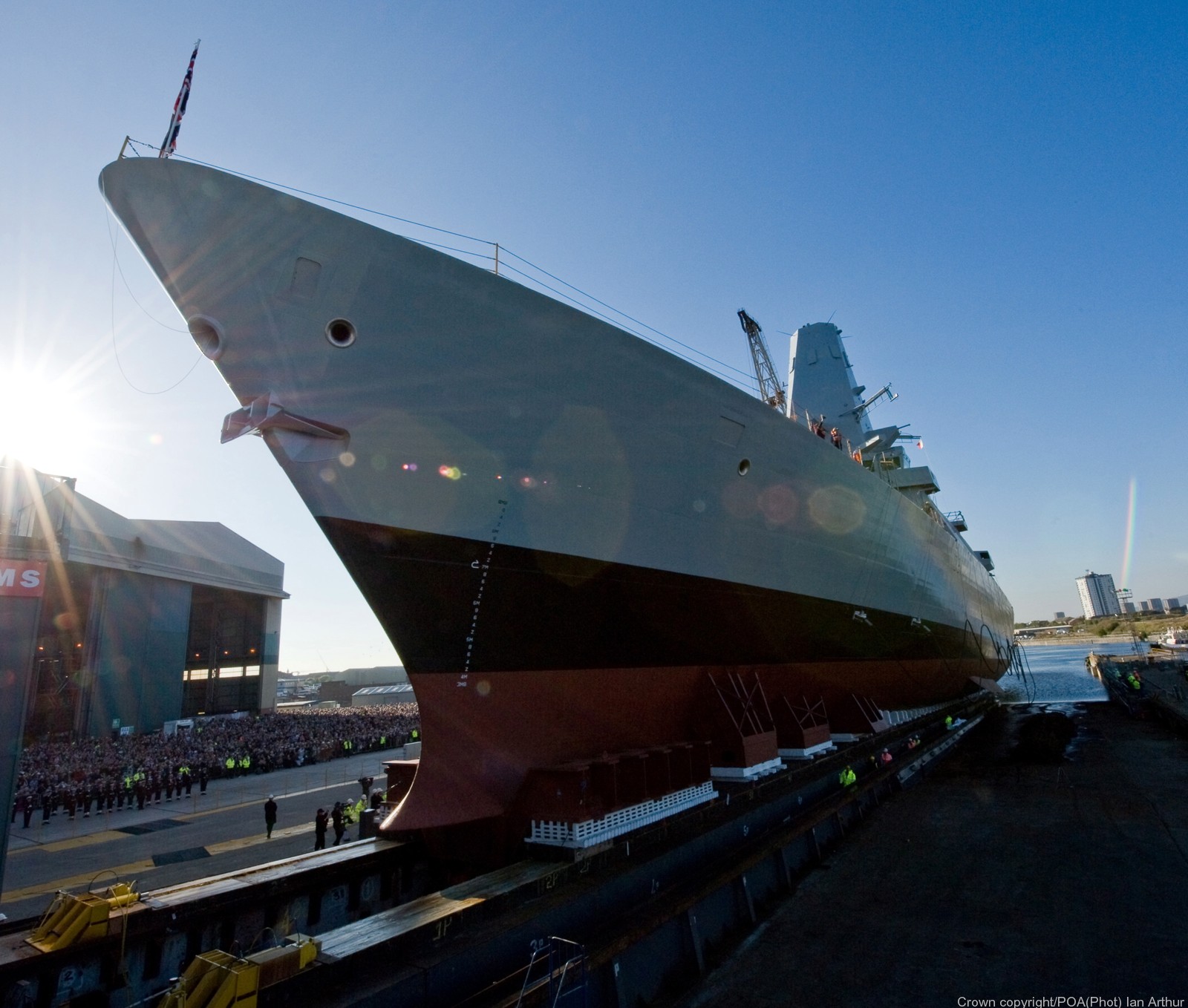 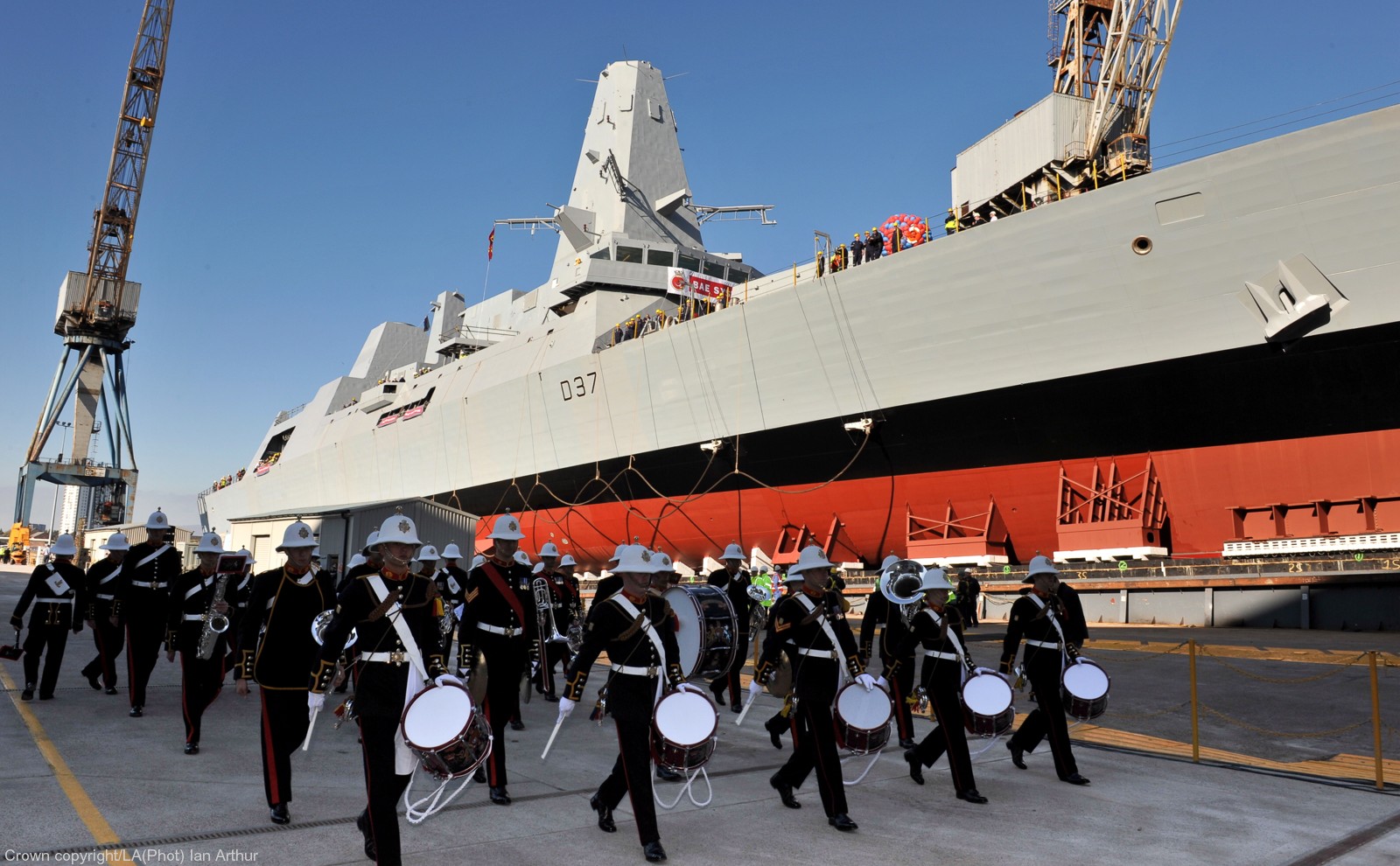 |
||
|
HMS Duncan (D 37): HMS Duncan is the sixth and last of the Type 45 or Daring-class air-defence destroyers built for the Royal Navy. Duncan is named after Adam Duncan, Viscount Duncan of Camperdown (1 July 1731 - 4 August 1804), who defeated the Dutch fleet at the Battle of Camperdown on 11 October 1797. Service history: Duncan's construction began at the BAE Systems Naval Ships (now part of BAE Systems Surface Ships) yards at Govan and Scotstoun on the River Clyde in 2006. She was launched from Govan on 11 October 2010, on the 213th anniversary of the Battle of Camperdown). HMS Duncan sailed from Scotstoun shipyard, Glasgow on 31 August 2012 to commence sea trials. Duncan, the sixth and last type 45 destroyer, was commissioned on 26 September 2013. She entered service on 30 December 2013, 4 months ahead of schedule, after a period of trials and training. On 2 March 2015, Duncan left HMNB Portsmouth on her maiden deployment to the Mediterranean and Middle East. On 7 July 2015, Duncan joined up with the U.S. Navy Carrier Strike Group Twelve to strike the Islamic State of Iraq and the Levant. In April 2016, HMS Duncan was one of several Royal Navy ships exercising with the French Navy in Exercise Griffin Strike. In October 2016, Duncan, escorted by the frigate HMS Richmond, was dispatched by the Ministry of Defence to intercept and "man-mark" a fleet of Russian Navy vessels, including their flagship Admiral Kuznetsov, which were passing through the English Channel on their way to Syria. In November, while sailing off the coast of England, Duncan suffered a total propulsion failure and was towed back to Plymouth. Duncan sailed from Portsmouth in June 2017 to assume the role of flagship of NATO's Standing Maritime Naval Group 2 (SNMG2), operating in the Black Sea and the Mediterranean. Duncan was due to be relieved in September 2017 by HMS Ocean on her final deployment, however Ocean was redeployed to the Caribbean Sea to provide relief to British Overseas Territories in the region in the wake of Hurricane Irma. Duncan was instead relieved by HMS Diamond which was berthed in Gibraltar en route to the Persian Gulf to relieve HMS Monmouth. Duncan returned to Portsmouth on 22 September 2017. She resumed NATO duties in January 2018, visiting Mediterranean and Black Sea ports such as Constanța, Souda Bay, and Split, and again took command of SNMG2, returning to Portsmouth on 13 July 2018. In November and December 2018, Duncan featured on the Channel 5 television documentary Warship: Life at Sea, which captured everyday life on board the vessel during her NATO deployment earlier that year, including confrontations with Russian warships and aircraft, including the Russian frigate Admiral Essen. On the programme, it is frequently claimed by the ship's crew that Duncan can detect a 'tennis ball sized object moving at 3-times the speed of sound, from over 100 miles away.' In December 2018 it was announced that Duncan would be affiliated with the town of Scarborough on the Yorkshire Coast. In July 2019 Duncan visited Odessa harbour in Ukraine. On 12 July 2019 she was ordered to the Persian Gulf in response to threats against British shipping by Iran. On arrival she joined with the frigate HMS Montrose in protecting cargo vessels and oil tankers. In September 2019, Duncan returned to her home base at Portsmouth for a refit. As of July 2021, Duncan’s refit was complete and she was back at sea by May 2022. source: wikipedia |
||
|
Adam Duncan, 1st Viscount Duncan (July 1, 1731 - August 4,
1804): ... was a British admiral who defeated the Dutch fleet off Camperdown (north of Haarlem) on 11 October 1797. This victory was considered one of the most significant actions in naval history. Life: Adam was the second son of Alexander Duncan of Lundie, Angus, (d. May 1777) Provost of Dundee, and his wife (and first cousin once removed) Helen, daughter of John Haldane of Gleneagles, was born at Dundee. In 1746, after receiving his education in Dundee, he entered the Royal Navy on board the sloop Trial, under Captain Robert Haldane, with whom, in HMS Trial and afterwards in HMS Shoreham, he continued till the peace in 1748. In 1749 he was appointed to HMS Centurion, then commissioned for service in the Mediterranean, by the Hon. Augustus Keppel (afterwards Viscount Keppel), with whom he was afterwards in HMS Norwich on the coast of North America, and was confirmed in the rank of lieutenant on 10 January 1755. Seven Years War: In August 1755 he followed Keppel to the Swiftsure, and in January 1756 to the Torbay, in which he continued till his promotion to commander's rank on 21 September 1759, and during this time was present in the expedition to Basque Roads in 1757, at the reduction of Gorée in 1758, and in the blockade of Brest in 1759, up to within two months of the battle of Quiberon Bay, from which his promotion just excluded him. From October 1759 to April 1760 he had command of the Royal Exchange, a hired vessel employed in petty convoy service with a miscellaneous ship's company, consisting to a large extent of boys and foreigners, many of whom (he reported) could not speak English, and all impressed with the idea that as they had been engaged by the merchants from whom the ship was hired they were not subject to naval discipline. It would seem that a misunderstanding with the merchants on this point was the cause of the ship's being put out of commission after a few months. As a commander Duncan had no further service, but on 25 February 1761 he was posted and appointed to the HMS Valiant, fitting for Keppel's broad pennant. In her he had an important share in the reduction of Belle Île in June 1761, and of Havana in August 1762. He returned to England in 1763, and, notwithstanding his repeated request, had no further employment for many years. Peacetime: During this time he lived principally at Dundee, and married on 6 June 1777 Henrietta, daughter of Robert Dundas of Arniston, Lord President of the Court of Session. It would seem that his alliance with this influential family obtained him the employment which he had been vainly seeking during fifteen years. Towards the end of 1778 he was appointed to HMS Suffolk, from which he was almost immediately moved into HMS Monarch. In January 1779 he sat as a member of the court-martial of Admiral Keppel for the poor performance of the Channel Fleet during the First Battle of Ushant. During the course of the trial Duncan objected several times to stop the prosecutor in irrelevant and in leading questions, or in perversions of answers. The admiralty was therefore desirous that he should not sit on the court-martial of Sir Hugh Palliser for failure to obey orders during the same battle. The court-martial was set for April. The day before the assembling of the court the admiralty sent down orders for the Monarch to go to St. Helens. Her crew, however, refused to weigh the anchor until they were paid their advance; and as this could not be done in time, the Monarch was still in Portsmouth harbour when the signal for the court-martial was made; so that, sorely against the wishes of the admiralty, Duncan sat on this court-martial also. During the summer of 1779 the Monarch was attached to the Channel fleet under Sir Charles Hardy; in December was one of the squadron with which Rodney sailed for the relief of Gibraltar, and had a prominent share in the action off St. Vincent on 16 January 1780. On returning to England Duncan quit the Monarch, and had no further command till after the change of Ministry in March 1782, when Keppel became first lord of the admiralty. He was then appointed to HMS Blenheim of 90 guns, and commanded her during the year in the Grand Fleet under Howe, at the relief of Gibraltar in October, and the encounter with the allied fleet off Cape Spartel. He afterwards succeeded Sir John Jervis in command of the Foudroyant, and after the peace commanded HMS Edgar as guardship at Portsmouth for three years. He attained flag rank on 24 September 1787, became Vice Admiral 1 February 1793, and was promoted to Admiral 1 June 1795. In February 1795 he was appointed commander-in-chief in the North Sea, and hoisted his flag on board HMS Venerable. In action with the Dutch: During the first two years of Duncan's command the work was limited to enforcing a rigid blockade of the enemy's coast, but in the spring of 1797 it became more important from the knowledge that the Dutch fleet in the Texel was getting ready for sea. The situation was one of extreme difficulty, for the mutiny which had paralysed the fleet at the Nore broke out also in that under Duncan, and kept it for some weeks in enforced inactivity. Duncan's personal influence and some happy displays of his vast personal strength held the crew of the Venerable to their duty; but with one other exception, that of the Adamant, the ships refused to quit their anchorage at Yarmouth, leaving the Venerable and Adamant alone to keep up the pretence of the blockade. Fortunately the Dutch were not at the time ready for sea; and when they were ready and anxious to sail, with thirty thousand troops, for the invasion of Ireland, a persistent westerly wind detained them in harbour till they judged that the season was too far advanced. For political purposes, however, the French Revolutionaries who controlled the government in Holland, in spite of the opinion of their admiral, De Winter, to the contrary, ordered him to put to sea in the early days of October. Duncan, with the main body of the fleet, was at the time lying at Great Yarmouth revictualling, the Texel being watched by a small squadron under Captain Henry Trollope in HMS Russell, from whom he received early information of the Dutch being at sea. He at once weighed anchor, and with a fair wind approached the Dutch coast, saw that the fleet was not returned to the Texel, and steering towards the south sighted it on the morning of 11 October about seven miles from the shore and nearly halfway between the villages of Egmont and Camperdown. The wind was blowing straight on shore, and though the Dutch forming their line to the north preserved a bold front, it was clear that if the attack was not made promptly they would speedily get into shoal water, where no attack would be possible. Duncan at once realised the necessity of cutting off their retreat by getting between them and the land. At first he was anxious to bring up his fleet in a compact body, for his numbers were at best equal to those of the Dutch; but seeing the absolute necessity of immediate action, without waiting for the ships astern to come up, without waiting to form line of battle, and with the fleet in very irregular order of sailing, in two groups, led respectively by himself in the Venerable and Vice-admiral Richard Onslow in the Monarch, he made the signal to pass through the enemy's line and engage to leeward. It was a bold departure from the absolute rule laid down in the Fighting Instructions, still new, though warranted by the more formal example of Howe on 1 June 1794; and on this occasion, as on the former, was crowned with complete success. The engagement was long and bloody; for though Duncan, by passing through the enemy's line, had prevented their untimely retreat, he had not advanced further in tactical science, and the battle was fought out on the primitive principles of ship against ship, the advantage remaining with those who were the better trained to the great gun exercise, though the Dutch by their obstinate courage inflicted great loss on the Royal navy. It had been proposed to De Winter to make up for the want of skill by firing shell from the lower deck guns; and some experiments had been made during the summer which showed that the idea was feasible; but want of familiarity with an arm so new and so dangerous presumably prevented its being acted on in the battle. Rewards: The news of the victory was received in Britain with the warmest enthusiasm. It was the first certain sign that the mutinies of the summer had not destroyed the power and the prestige of the Royal Navy. Duncan was at once (21 October) raised to the peerage as Viscount Duncan, of Camperdown, and Baron Duncan, of Lundie in the Shire of Perth (with which came the lands now known as Camperdown Park in Dundee), and there was a strong feeling that the reward was inadequate. Even as early as 18 October his aunt, Lady Mary Duncan, wrote to Henry Dundas, at that time secretary of state for war: Report says my nephew is only made a Viscount. Myself it is nothing, but the whole nation thinks the least you can do is to give him an English earldom. … Am sure were this properly represented to our good king, who esteems a brave, religious man like himself, would be of my opinion. …. It was not, however, till 1831, many years after Duncan's death, that his son, then bearing his title, was raised to the dignity of an earl, and his other children to the rank and precedence of the children of an earl. Duncan was awarded the Large Naval Gold Medal and an annual pension of £3,000, to himself and the next two heirs to his title - this was the biggest pension ever awarded by the British government. Additionally, he was given the freedom of several cities, including Dundee and London. Death: Duncan continued in command of the North Sea fleet until 1801, but without any further opportunity of distinction. Three years later, 4 August 1804, he died quite suddenly, aged seventy-three, at the inn at Cornhill, a village on the border, where he had stopped for the night on his journey to Edinburgh and was buried in Lundie. source: wikipedia
|
||
| patches + more | ||
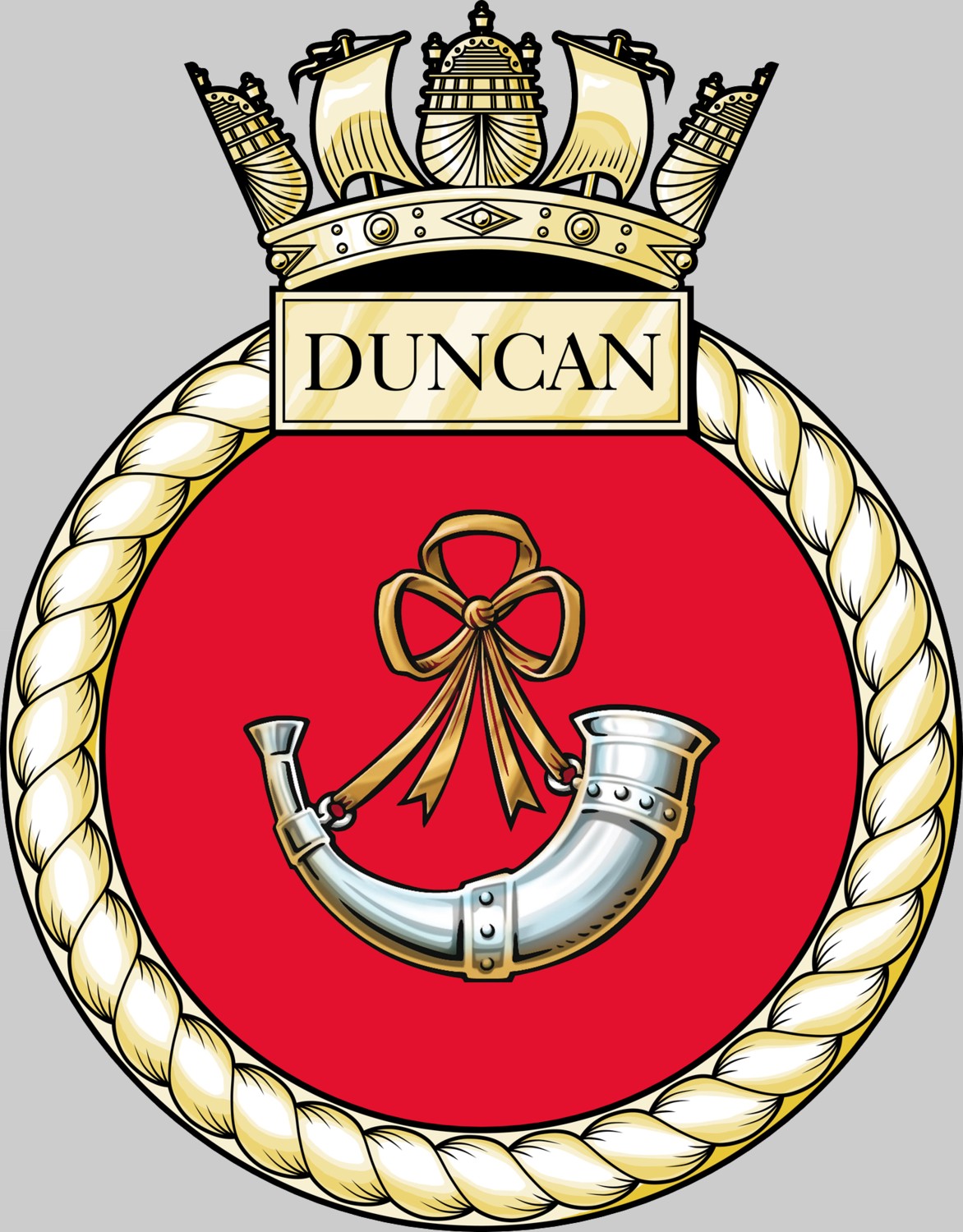 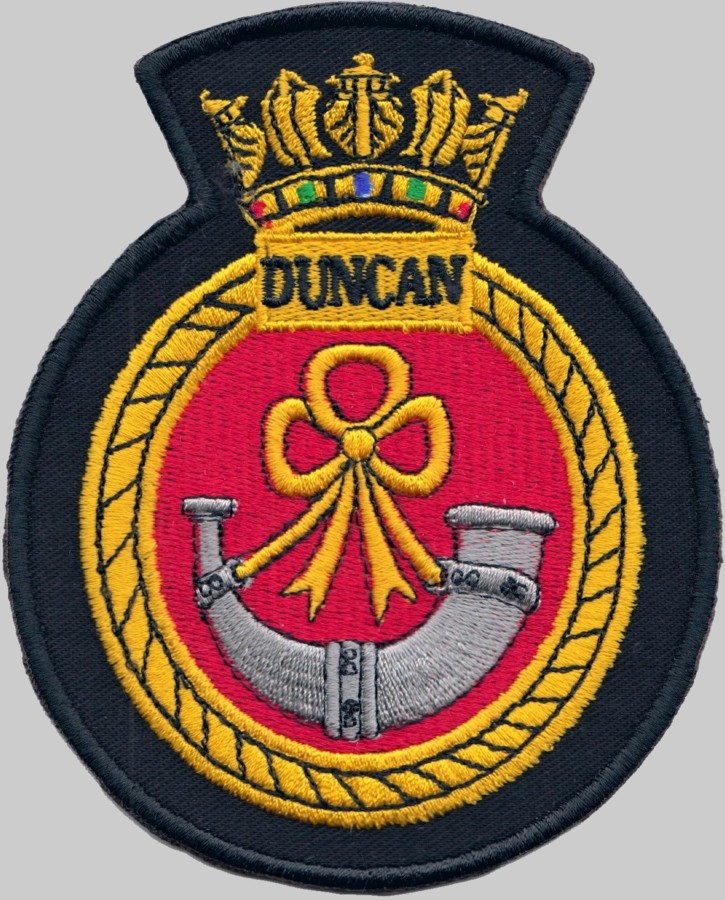 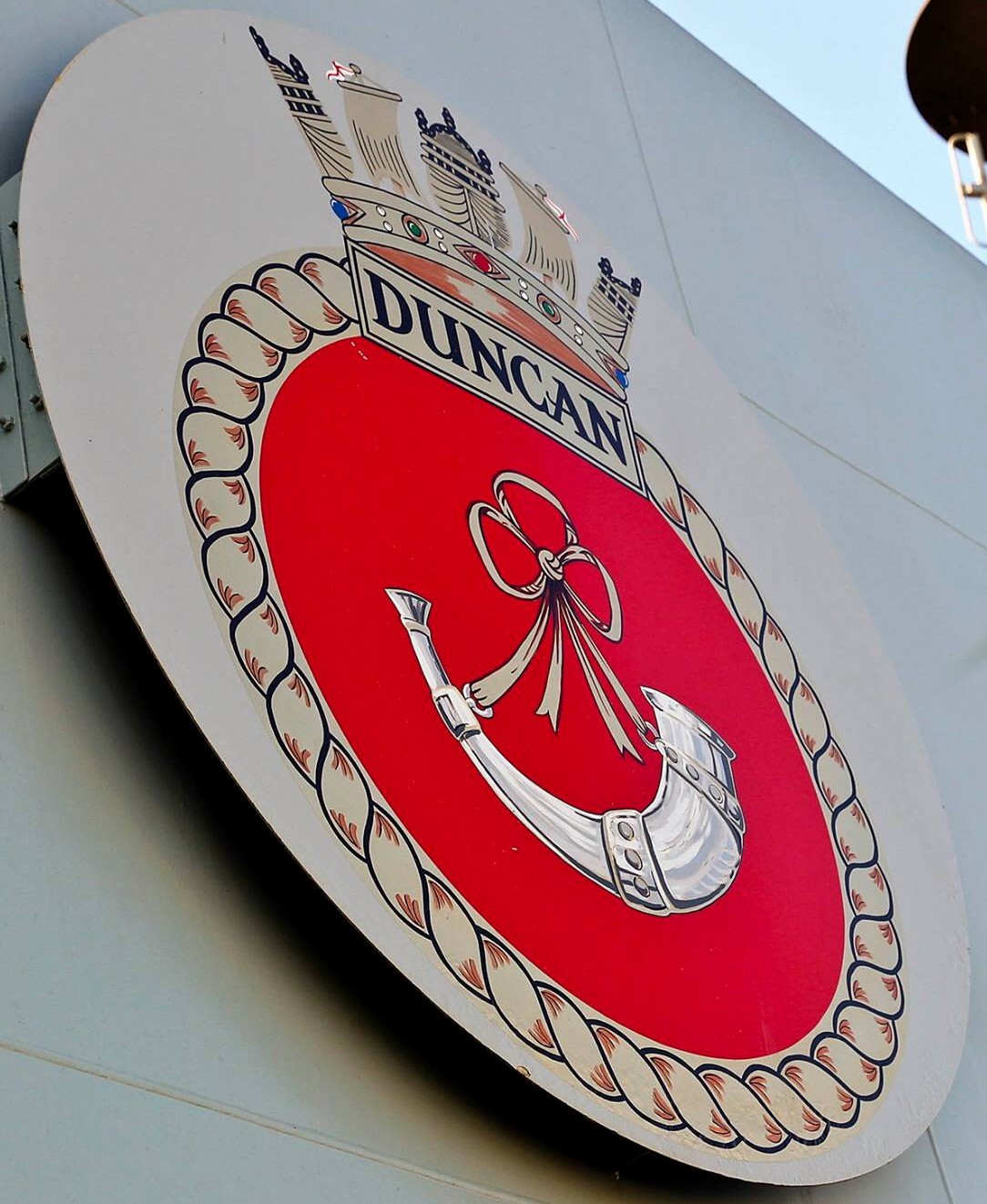 |
||
|
|
seaforces.org
|
Royal
Navy start page
| |
